

Are Zooms or Primes Better for Travel Photography? Let’s Find Out
Table of Contents
When it comes to travel photography, lens choice leads the way to stunning imagery. Juggling between zoom lenses with their versatile focal lengths and prime lenses, known for their crisp quality and generous maximum aperture, is a traveler’s silent debate. So, are zooms or primes better for travel photography?
While zooms whisper promises of adaptability on the go, primes boast an unwavering sharpness that can make your usual subjects pop against a full frame canvas.
It’s not just about what you capture—it’s how you tell the story through your lens.

Versatility and Convenience of Zooms
Zoom lenses are a game-changer for travel photography, offering the flexibility to capture a wide range of subjects without lugging around extra gear. They’re like a Swiss Army knife for photographers, ready to tackle any scenario with ease.

Multiple Focal Lengths
Zooming in on the action is key. Quality zoom lenses let you snap wide landscapes and tight portraits without swapping glass. Imagine standing before the Eiffel Tower one moment, capturing its grandeur with a wide angle, then zooming in on a street performer’s expressions the next – all with a twist of your lens barrel.
Dynamic Subjects Ease
Photographers know: life doesn’t stand still. With a 10x zoom range at your fingertips, you’re prepared for life’s unpredictability. Kids playing in the park or bustling city streets can be framed perfectly in an instant. No fiddling with camera bags , just pure focus on getting that shot.
Quick Framing Adjustments
Unexpected shots are travel photography’s bread and butter. A quality zoom lens lets you adapt faster than saying “cheese.” Spot an eagle soaring while hiking? Your telephoto reach brings it close without scaring it away. That’s the power of quick framing adjustments – they turn good photos into great ones.
Less Gear to Carry
Travel light and move freely – that’s every wanderer’s mantra. Instead of weighing down your camera bag with multiple lenses, one versatile zoom can cover most needs. This means more room for souvenirs or simply less strain on your shoulders as you explore.

Adaptable Shooting Scenarios
A full frame sensor camera equipped with a large aperture zoom lens is unstoppable. Whether it’s dimly lit cathedrals or sunny beach scenes , you’re covered. Photographers love this adaptability because it means no matter where their travels take them, they’re always ready to shoot.
- Swiftly switch from landscape to portrait
- Capture distant objects without moving
- One lens solution reduces weight
- Sometimes larger than prime lenses
- Might not have the bokeh effect of primes
Photography isn’t just about what we see; it’s about sharing how we feel in that moment. Many photographers testify that having fewer choices actually frees them up creatively—less time digging through their camera system means more time composing beautiful images that tell stories.
Take Sarah, a travel blogger who switched to using only her trusty 24-70mm zoom lens during her six-month trek across Asia:
- She captured vibrant market scenes and serene temples.
- Her backpack was lighter by ditching extra lenses.
- She never missed spontaneous moments thanks to quick adjustments.
Her blog exploded with comments praising the image quality and diversity she achieved with just one lens!
Quality and Portability of Primes
Primes shine with their superior optical quality, especially in dim lighting. They’re also compact, offering a lighter load for the travel photographer.

Superior Low Light Performance
Prime lenses are the go-to when you need to capture crisp shots as the sun dips. Their design allows more light to hit the sensor, making them ideal for those twilight cityscapes or starry night skies.
- Perform exceptionally well in low-light environments.
- Capture clear images without cranking up ISO too high.
Compact and Travel-Friendly
The beauty of primes lies in their simplicity. A single focal length means less glass and mechanics inside, leading to a smaller size that’s perfect for on-the-go photography.
- Easier to pack than bulky zoom lenses.
- Reduce strain on your shoulders during long explorations.
Sharper Focused Details
A prime lens is like a specialist; it knows its focal length and nails it every time. You’ll get pictures where every little detail pops, from the texture on an old building to the twinkle in a street performer’s eye.
- Outperform zooms at their specific focal lengths.
- Deliver edge-to-edge sharpness that can be lost with zooms.
Fast Aperture Mastery
With primes, you can play with shallow depth-of-field like a pro. This means you can make your subject stand out dramatically against a soft, blurred background—a storytelling tool that’s as powerful as words.
- Offer wide apertures like f/1.4 or f/2.
- Create beautiful bokeh that adds artistic flair to your photos.
Lightweight Equals Comfort
On long treks through new cities or hikes up mountains for that perfect sunrise shot, every ounce matters. Prime lenses won’t weigh you down like some heavy-duty zooms can.
- Make walking around with your camera less tiring.
- Allow for more flexibility and spontaneity in your travels.
Factors Affecting Lens Choice
Choosing the right lens for travel photography can be a puzzle. Your destination’s vibe and your personal style are huge clues to solving it.

Destination Scenes Matter
Travel spots have their own magic. Think bustling city streets or sweeping mountain vistas. Each place begs for a lens that can capture its essence. In crowded cities, wide-angle lenses rock because they let you grab more of the scene. For vast landscapes, zoom lenses are kings, letting you snag details from afar.
But here’s the kicker: some destinations throw curveballs with varied scenes. One minute you’re shooting urban art, next it’s a sunset over the ocean. That’s when versatility becomes your best buddy.
Personal Style Speaks Loud
Your style is like your photography fingerprint – totally unique. Some folks love getting up close and personal with subjects, while others prefer to hang back and take it all in.
- If you dig capturing every wrinkle on an old man’s face, prime lenses with their killer sharpness are your jam.
- But if you’re about catching life as it unfolds without fussing over gear, zooms give you flexibility without missing a beat.
The right lens feels like an extension of your eye – seeing the world just how you like it.
Budget Calls The Shots
Let’s talk money – it matters big time. High-quality glass comes with hefty price tags; we know that drill.
- Prime lenses often come cheaper than zooms but remember: one prime might not cut it.
- Zoom lenses cost more dough but think about this: one solid zoom could replace several primes.
It’s about finding that sweet spot where your wallet doesn’t cry but your photos still pop!
Activities Shape Choices
Photography isn’t just standing still and clicking away; it’s an adventure! Your activities dictate what lens hops into your bag.
Hiking up mountains? A lightweight prime won’t drag you down. Roaming cities from dawn till dusk? A versatile zoom lets you cover all bases without swapping lenses. The gist is simple: match your lens to what you plan on doing so nothing slows down your groove.

Luggage Limits Decision
Packing light isn’t just nice, it’s necessary. Airlines have baggage limits tighter than skinny jeans after Thanksgiving dinner!
Every ounce counts when traveling:
- Primes are featherweights compared to most zooms.
- But packing multiple primes vs one do-it-all zoom? That math needs weighing out carefully.
Space-saver or heavyweight champ? Your luggage has the final say in this bout.
Advantages of Zoom Lenses Explored
Zoom lenses offer unmatched versatility and a cost-effective solution for travel photography. They allow photographers to quickly adapt to various scenes without switching gear.
Flexibility in Composition
Imagine standing atop a hill, gazing at a breathtaking landscape. With a zoom lens, you can capture the grandeur of the scene and then zoom in on specific details like distant mountains or wildlife without moving an inch. This flexibility is priceless when you find yourself in spots where moving around isn’t an option.
- Snap wide landscapes or tight portraits.
- No need to switch positions.
Diverse Landscapes Captured
Travel photographers often face changing environments. One minute you’re shooting urban architecture; the next, it’s a serene beach sunset. A zoom lens allows you to seamlessly transition between these varied subjects, ensuring that no matter the setting, you’re prepared.
- Cityscape vistas and nature shots with one tool.
- Adapt to different lighting and scales easily.
Safety and Accessibility
Sometimes getting closer isn’t just hard – it’s downright risky or forbidden. Wildlife photography is a prime example where safety must come first. Here, zoom lenses are invaluable as they let photographers respect boundaries while still nailing those close-up shots of animals in their natural habitat.
- Keep safe distance from wild animals.
- Overcome physical barriers effortlessly.
Cost-Effective Choice
Purchasing multiple prime lenses can be heavy on your wallet. A single zoom lens can cover a range of focal lengths that would otherwise require several primes. For travelers who prioritize both budget and bag space, this makes zooms an economically smart pick.
- Replace several primes with one zoom.
- Save money for more travel adventures!
Quick Photographic Responses
Travel often presents fleeting moments that make for stunning photos – think street performers in action or the flash of a smile from a local market vendor. With a zoom lens, you’re always ready to capture these transient moments before they slip away because you don’t waste time swapping lenses.
- Catch spontaneous events instantly.
- Always ready for unexpected photo ops.
Prime Lens Disadvantages and Benefits
Prime lenses have their quirks, like not zooming and needing swaps. But they shine with creamy bokeh and crisp images, pushing photographers to move around for the perfect shot.

Zoom Limitations
Prime lenses keep it simple; no zoom here. You’ve got your feet for that—literally. Want a closer look? You’ll need to scoot up to your subject or back away for a wider view. This can be a bit of a bummer when you’re trying to capture that perfect travel snapshot, and there’s just no room to back up. Or maybe there’s an epic scene unfolding right before you, but stepping forward isn’t an option because, well… cliff edge.
Changing Lenses
Got dust? Swapping prime lenses might invite unwanted specks onto your camera’s sensor , especially if you’re out in the wild or dusty streets during your travels. It’s like opening the door on a windy day; stuff just flies in uninvited! Each lens change is another roll of the dice, hoping your camera’s insides stay clean.
Wider Apertures
Now let’s talk about those dreamy backgrounds. Prime lenses are ace at making subjects pop with their wide apertures—hello beautiful bokeh! That blurred-out background isn’t just pretty; it makes whatever or whoever you’re photographing stand out big time. Whether it’s a street performer’s face or the delicate petals of a flower by the roadside, prime lenses give photos that professional touch.
- Examples of bokeh in travel photography:
- A street vendor’s cart in focus with bustling city life softened behind.
- A single lantern glowing at night with everything else melting into shadows.
High Resolution Images
Less glass equals more clarity—it’s as simple as that with prime lenses. Fewer elements inside mean less chance for light distortion and sharper details. When you’re capturing the intricate textures of ancient architecture or vibrant market scenes abroad, every pixel counts!
- Case study: Photographers often report noticing finer details in their shots when using primes compared to zooms.
Creative Composition
Prime lenses don’t let you get lazy—you have to hustle for that shot! They make you think outside the box and work those leg muscles to find fresh angles and perspectives. It’s all about positioning yourself rather than relying on a lens to do the heavy lifting.
- Fun challenge: Try shooting only with a prime lens on your next trip; it could transform how you see and capture the world around you!
Guidance for Beginners on Lens Selection
Choosing the right lens for travel photography can be a game-changer. It’s crucial to consider what you’ll be shooting and your specific needs before making a decision.
Assess Photography Subjects
Before picking between zoom or prime lenses, think about what catches your eye. Are you into snapping bustling cityscapes or tranquil landscapes? Maybe capturing the local wildlife or street scenes gets you excited. Your subjects matter because they dictate the kind of lens that will serve you best.

Start with Zooms
If you’re just getting into travel photography and aren’t quite sure what tickles your fancy, start with a versatile zoom lens. They’re like the Swiss Army knife of lenses – good at a bit of everything.
- Flexibility in composing shots
- Less need to switch lenses
- Can be bulkier than primes
- Might not offer the sharpest image quality
Low-Light Priority?
Ask yourself if you often find yourself chasing sunsets or exploring cities by night. If dimly lit scenes are your jam, then low-light performance is key. Lenses with wider apertures (smaller f-number) let in more light, which is something prime lenses are known for.
- Prime lens: Excellent for night photography due to wide apertures like f/1.4.
- Zoom lens: May struggle unless it’s a high-end model with stable aperture ranges.
Ease vs Quality
There’s always a tug-of-war between convenience and quality. Zoom lenses mean less fussing around but might compromise sharpness and speed. Primes challenge you to move around more but reward you with crisper images.
Ease of Use:
- Zooms win for their all-in-one solution.
Image Quality:
- Primes often provide superior clarity and detail.
Long-Term Investment
Think long-term when choosing your gear; it’s an investment after all! A sturdy, high-quality lens can last years and adapt to different cameras—especially if you’re using a crop sensor now but plan to upgrade later.
Considerations:
- Resale value
- Compatibility with future camera upgrades
Crop Sensor Note: Lenses behave differently on crop sensors—your future full-frame dreams could affect today’s choices!
Immediate Needs vs Future Plans
Weigh up what matters most right now against where your photo journey might take you down the road:
For beginners:
- A zoom could cover various situations as skills develop.
- A prime might encourage mastering composition early on.
Making the Best Travel Choice
Your camera bag is a treasure chest, and the right lens is your golden ticket to capturing those breathtaking travel shots . Whether you’re trekking through bustling city streets or scaling serene mountain peaks, remember that the best gear is what gets the job done for you .
Zoom lenses offer a Swiss Army knife-like versatility, letting you switch from wide-angle to telephoto without missing a beat. On the flip side, prime lenses are like your trusty sword—sharp, fast, and lightweight—perfect for nailing those high-quality shots with character.
So what’s it gonna be? What’s your opinion on the question, “are zooms or primes better for travel photography?” Will you go for the all-in-one zoom to cover all bases or pick a prime to master one focal length at a time? Whichever path you choose, embrace it with confidence.
Photography is an adventure in itself; enjoy every step and click along the way.
And hey, if you ever feel stuck choosing your next lens companion, reach out to fellow shutterbugs or trusted experts—they’ll be stoked to help you make a snap decision!
When selecting between zoom and prime lenses for travel photography, consider factors such as weight and portability, image quality preferences (sharpness and low-light performance), versatility in different shooting scenarios (landscapes vs portraits), budget constraints, and personal style of shooting. Think about what subjects interest you most during travel.
Absolutely! Modern zoom lenses are engineered with advanced optics that can produce professional-quality images suitable for various types of photography. The key is understanding your lens’s strengths and optimizing its use within its best aperture ranges.
Not necessarily. Prime lenses can range from affordable to high-end prices depending on their maximum aperture size and build quality. Some primes are very cost-effective yet offer excellent image quality.
Lens speed refers to the maximum aperture of a lens—the larger it is (indicated by smaller f-numbers), the faster it can capture light. This becomes crucial in low-light conditions or when aiming for shallow depth-of-field effects. For travel photography where lighting conditions vary widely, having a fast lens can be quite beneficial.
This depends on your priorities: If minimizing gear weight while maintaining high image quality is essential, then carrying multiple primes might suit you better. However, if convenience and flexibility are paramount because of diverse shooting situations encountered while traveling, then one versatile zoom may be more practical.
Focal length determines how much of the scene will fit into your frame—it affects perspective and composition significantly. Wider focal lengths (lower numbers) capture more of the scene making them ideal for landscapes; longer focal lengths (higher numbers) bring distant subjects closer which can be great for isolating details or photographing wildlife.

I’m a professional travel photographer, and I’ve been living the digital nomad lifestyle since 2016. I make money by working on client assignments, selling stock photography and helping other photographers by sharing my experiences on this website. I move around at my own pace (I hate fast-paced travel) and like to spend a few months getting to know each place I base myself in.
My writing and photos have been featured on industry leading websites such as Digital Photography School , Atlas Obscura and the world’s leading underwater photography resource The Underwater Photography Guide . I authored an eBook called “ Breaking Into Travel Photography: The complete guide to carving out a career in travel photography ” that has been published on Amazon. My stock images have also appeared in ads promoting destinations and companies that sometimes has been a surprise, even to me. But I guess that’s the nature of stock photography, you never know who will license them!
I’m always happy to connect, so feel free to reach out!
Should You Bring a Camera When You Travel or Is a Phone Enough?
Apple iPhone, Samsung Galaxy Ultra or mirrorless camera: Here's what it's like to shoot travel photos with each.

For most travelers, the smartphone in your pocket works just fine for taking photos of adventures. But what are you missing by relying on your phone alone? I used my summer trip to Germany to explore when a casual sightseer would benefit from having a dedicated camera or if their phone would be enough.
While everyone's kit is different, most travelers won't be hauling around a DSLR or pro-quality mirrorless camera. Instead, they'll debate between buying a fancy new phone or a more affordable everyday mirrorless camera. (Though there are point-and-shoot options if you want a standalone camera, they may not outstrip your phone's photo capabilities.)
I'm no pro photographer, so don't expect expert advice on how to get the most out of this kit, but for casual photo takers who leave their camera on the auto settings, this is a good comparison to see what each device can handle without much fuss amid a busy trip abroad.
My kit isn't the best you'll find, but it's probably not far off from what many travelers may pack in their pockets and bags: my personal iPhone 12 Pro, a Samsung Galaxy S22 Ultra (to test a more camera-intensive phone), and a snug Sony ZVE-10 mirrorless camera with a Sigma 16mm f1.4 DC DN (an affordable prime lens).
Here's the breakdown for what each device did best -- and what they couldn't do.
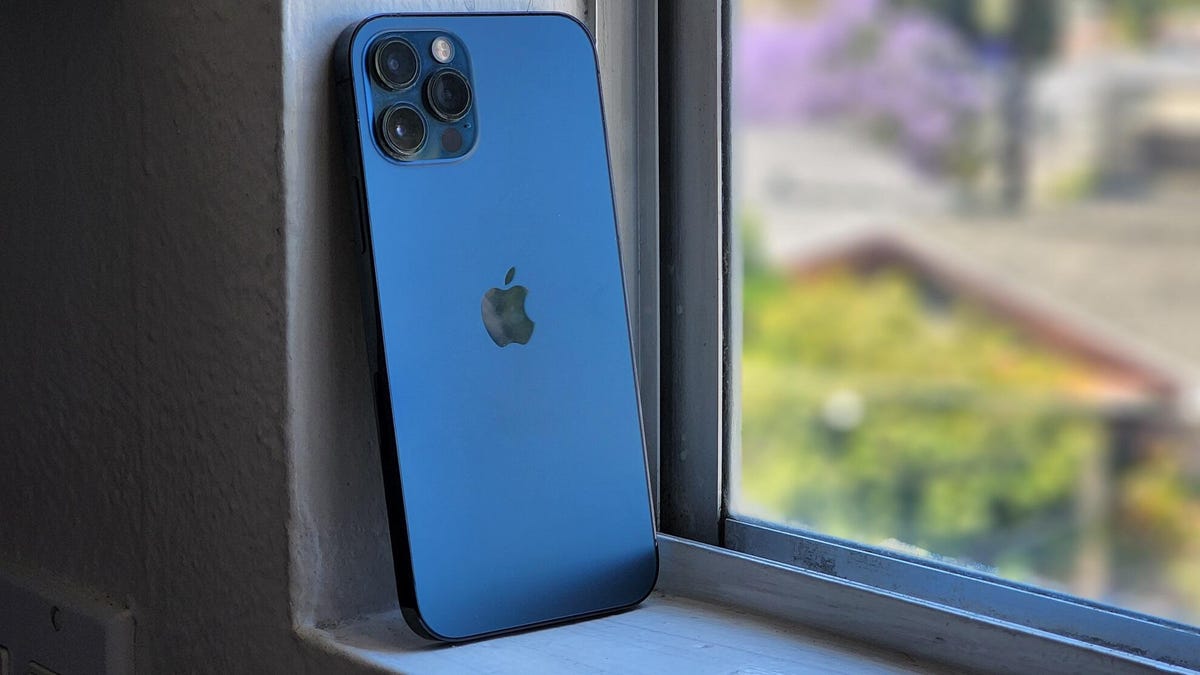
iPhone 12 Pro
The iPhone 12 Pro is a few years past its October 2020 launch date but still plenty capable, and its photo capabilities are probably similar to what many older premium and newer cheaper phones can achieve. When it debuted, the iPhone 12 Pro retailed for $999 (£999, AU$1,699) but years later it isn't really sold anywhere aside from refurbished at sub-$500 prices. You can still pick up a stock iPhone 12 on Apple's website for $599, but it lacks the 2x telephoto lens.
The iPhone 12 Pro took basic photos well, albeit with the warm tones typical of iPhone photos. Images I shot didn't have quite the same color accuracy as the Samsung S22 Ultra or the Sony ZVE-10. Still, the iPhone 12 Pro was great at taking daytime shots of streets, museums and breezy lunches. It struggled with dimly lit dinners and at night, with photos having a grainy texture from image noise.
Germany Travel Photo Comparison: iPhone 12 Pro Example Photos

Another limit was the iPhone 12 Pro's 2x optical zoom, which was far inferior to the Samsung Galaxy S22 Ultra's telephoto capabilities. Since I was mostly seeing landscapes, I rarely felt the need to zoom in on a distant subject. The ultra-wide camera was more useful, and its 13mm-equivalent focal length allowed me another option to the 26mm-equivalent main camera for framing a specific shot.
In head-to-head comparisons with the mirrorless camera, the iPhone 12 Pro held up surprisingly well. The phone captured near and background distant subjects in crisp detail. The mirrorless camera was more selective in its focus, largely homing in on one or the other and requiring a bit more finesse.
As I was using the iPhone for every other travel-necessary app like navigation and wireless payments, it was in my pocket every day and wasn't a burden to carry. That meant it was on-hand for me to take quick photos out the windows of our train or rental car of passing scenery at just the right time.
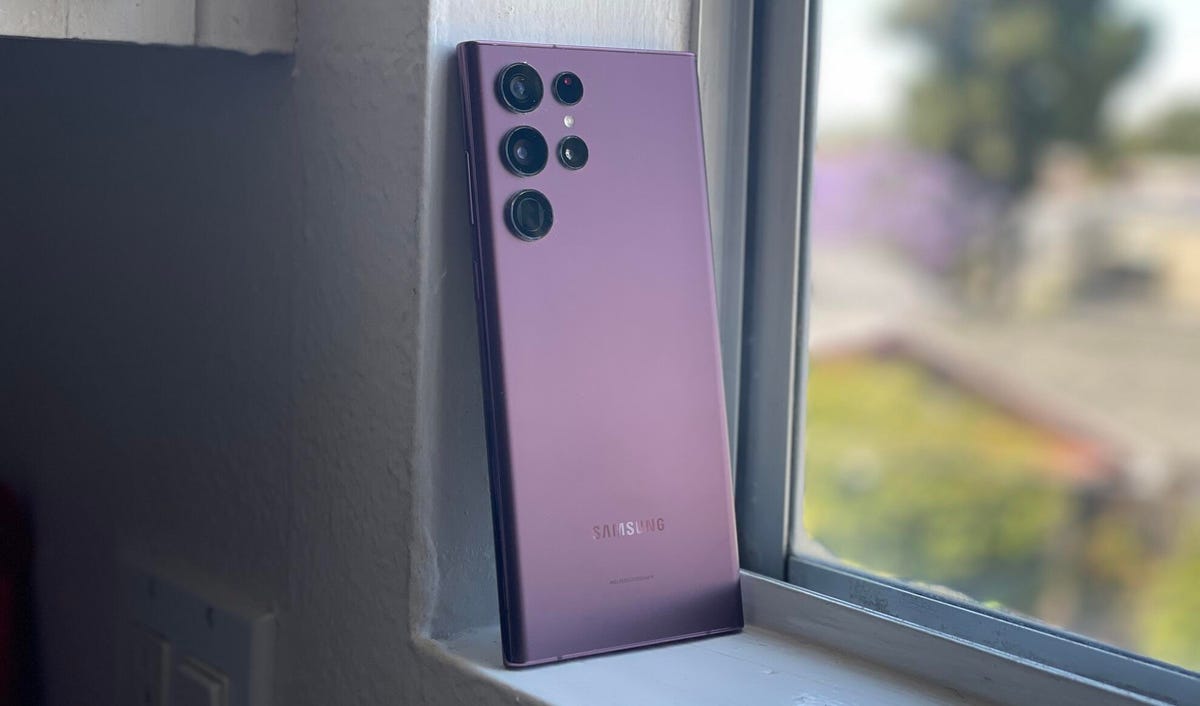
Samsung Galaxy S22 Ultra
While superseded by this year's Samsung Galaxy S23 Ultra, the Samsung Galaxy S22 Ultra I took on my trip is still a camera powerhouse. It has a 108-megapixel main camera and a 12-megapixel ultrawide camera with 120-degree field of view, but it's really known for its zoom photography. It has not one but two telephoto lenses: a 10-megapixel with 3x optical zoom and a 10-megapixel periscope-style capable of 10x optical zoom.
As expected, the Galaxy S22 Ultra took great photos at a distance. Did I need zoom photo capability? Not really! Most of my subjects were 20 to 50 feet away.
Unless, of course, you're taking shots of distant buildings, like the picturesque Neuschwanstein Castle on Germany's southernmost border, nestled in the foothills of the Alps within spitting distance of Austria. It was nice to have more control to frame the photos with the zoom capability, even if I didn't need the 100x "space zoom." The feature combines optical and digital zoom with AI tricks to home in on a cropped-in corner of zoomed-in image. The 30x was enough and rarely necessary. Regardless, the S22 Ultra's 10x optical and digital hybrid zoom produced far better photos than the iPhone 12 Pro's grainy 10x digital zoom.
Here's the Samsung Galaxy S22 Ultra's camera from the road at the foot of a trail leading up to Neuschwanstein, with shots from the main camera at 1x, 3x, 10x and 100x zoom.
Germany Travel Photo Comparison: Samsung S22 Galaxy Ultra, Castle Street
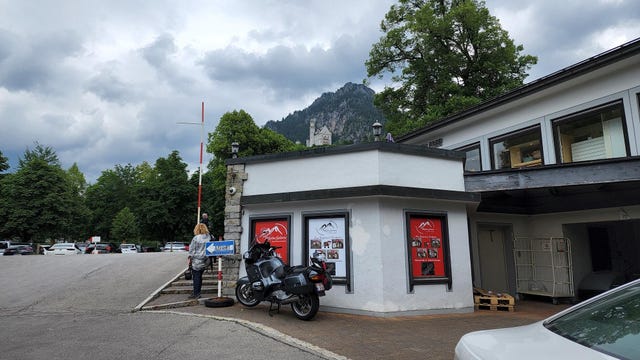
Compare that to the iPhone 12 Pro's main camera at 1x, 2x and 10x.
Germany Travel Photo Comparison: iPhone 12 Pro, Castle Street
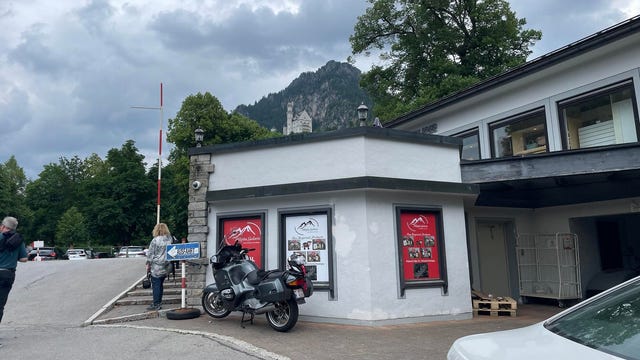
The Galaxy S22 and iPhone 12 Pro both did a decent job shooting photos with a mixture of dark and light foregrounds and backgrounds, especially with bright skies that can be easily washed out. Below is a shot from up on a balcony of the Neuschwanstein castle, looking west into the valley.
But it's easy to see how cool the Galaxy S22 Ultra's zoom capabilities are when perched above the landscape and using successive zoom intervals to get closer shots of a subject.
Germany Travel Photo Comparison: Samsung Galaxy S22 Ultra, Valley Zoom
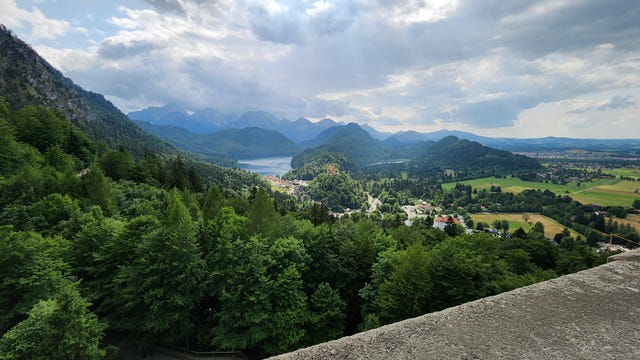
Lastly, here's a simple comparison of shots of the castle itself, with the Galaxy S22 Ultra's main camera versus the iPhone 12 Pro's camera.
The Galaxy S22 Ultra is one of the best phones we've tested, which garnered a CNET Editor's Choice Award in our review . It's more convenient to handle than my mirrorless camera, though it doesn't have as many photo settings.
The Galaxy S22 Ultra is a large phone, so it took up a lot of space in my pocket. Even if I were to buy it to replace my iPhone 12 Pro, it would still be cumbersome to yank out for casual photos. As it was, there were a handful of situations where I might have lost the S22 if it had been in my pocket instead of the smaller iPhone 12 Pro, including a bobsled-like roller coaster on a hillside in the middle of the Black Forest. (Which, sadly, wouldn't allow phones on the course, but there are ride-through videos on YouTube .)
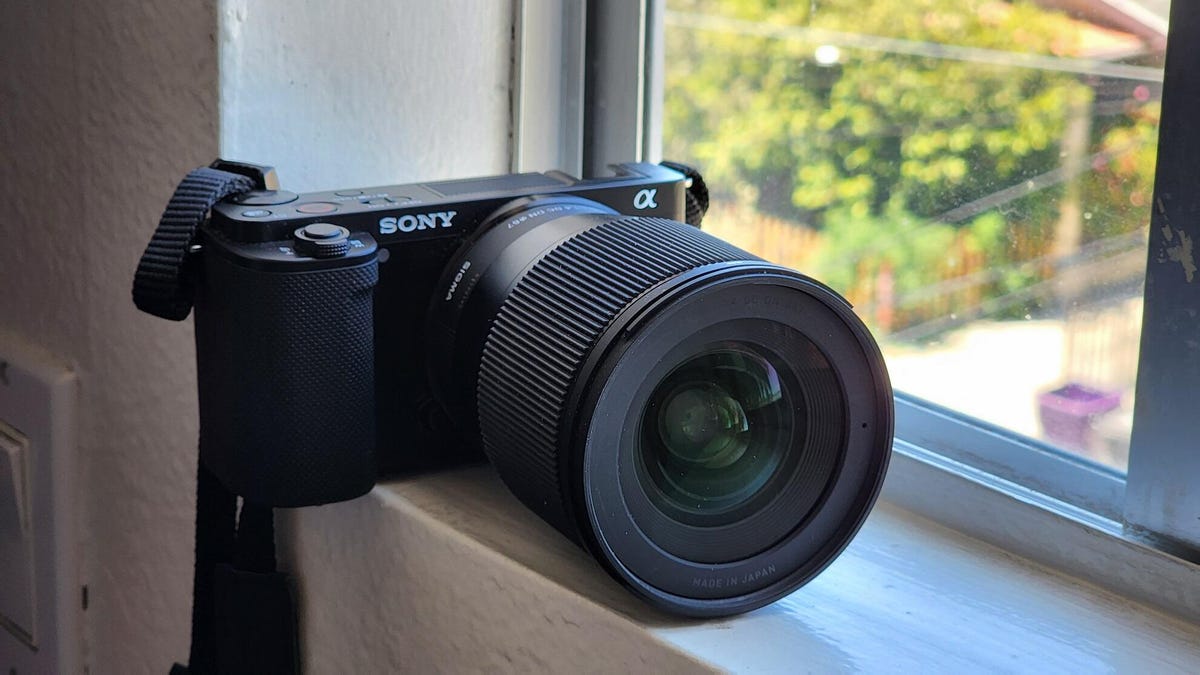
Sony ZVE-10 mirrorless camera
The Sony ZVE-10 is aimed at vloggers with its 4K video shooting and light weight, but that also made it great for taking still photos with its 24-megapixel resolution. The camera is reasonably affordable at $700, and has swappable lenses via a lens mount.
I used the ZVE-10 with a Sigma 16mm f/1.4 prime lens I picked up for $399 to take better product shots. The Sony body and Sigma lens combo took superior photos to either phone in medium to close range. Thanks to the ZVE-10's crop APS-C sensor, the 16mm lens was more like a 24mm lens, and had essentially the same field of view as the standard rear cameras on the iPhone 12 Pro and Galaxy S22 Ultra.
For the majority of the trip, the short-range prime lens was fine, and I didn't miss being able to zoom in on distant objects. You can get pretty close to any subject that's worth taking photos of, though I would want a telephoto lens at a concert or for shooting wildlife. I did wish I was able to zoom out like I could with either phone's ultra-wide lenses, especially in cramped quarters like awkwardly small museum rooms.
The ZVE-10 performed fine with landscape shots but excelled in reasonable-size enclosed spaces, capturing greater color contrast and lighting/shadow variance. Compare these photos below of a fresco on a low roof in the Cologne Cathedral, shot with the ZVE-10 and the iPhone 12 Pro, respectively.
When shooting close subjects, the ZVE-10 excelled at capturing evocative lighting, and the f/1.4 Sigma lens' natural bokeh led to moodier shots compared to the uniform brightness of the iPhone 12 Pro.
And while the iPhone 12 Pro produced uniformly brighter and crisper photos, the post-processing to get such clarity led to some flattened color and shadow. In photos of this iron statue of the Chinese mythological aquatic monkey demon Wuzhiqi located in Berlin's Humboldt Forum, you can see more detail in the iPhone 12 Pro's shot, but it loses the red-brown tone from years of oxidation.
It was also easier to get the ZVE-10 to produce a depth effect naturally. With the iPhone 12 Pro, portrait mode requires more fiddling and an ideal distance between the phone, your subject and the background. But the camera's depth effect made it tough to keep everything in focus when I was taking photos of food and wanted to show the whole plate.
Weight comparison
Unsurprisingly, the ZVE-10 and lens far outweighed the phones. Though not enough to be cumbersome, the weight and size differences are noticeable. The camera and lens fit snugly in my compact camera bag, which stayed out of the way while slung over my shoulder. But the camera was more annoying to lug around and pull out to take photos than a phone in my pocket.
Needing to manually upload my photos was a bit annoying, too. The Sony Imaging Edge app let me send photos directly from the camera to my phone, but it's clunky for bulk uploads. And forget about handing your fancy mirrorless camera over to a stranger to take a photo of your traveling party for fear of them dropping it or not knowing how to use it. Thankfully, the ZVE-10's rotating display meant I could angle it forward to pull off selfies, which consequently took better shots than either phone's front-facing camera but didn't capture as much subject matter. Both the iPhone's and Galaxy's selfie cameras had wider field-of-views.
Lastly, the mirrorless camera may have more potential for better shots since it can save images in the RAW format, which gives photo editors a lot more data and freedom to tweak. It's worth pointing out that my iPhone 12 Pro can shoot in Apple's ProRAW format , while my Samsung Galaxy S22 Ultra can shoot in Expert RAW format via a separate app (though it's natively in the camera app as of the Samsung Galaxy S23 series). Both can be edited much like standard RAW formats. I deliberately shot photos in JPG format for all devices in this test, since most travelers will simply point and shoot with the default format. All these photos could certainly look better with some Photoshop touch-up.
Ultimately, this was an unscientific test rather than a thorough field guide. I set out wondering whether my daily smartphone would miss out on any particular travel shots that a camera-focused phone like the Samsung Galaxy S22 Ultra or my mirrorless camera would be capable of picking up.
Most of the time the iPhone was fine, but there were edge cases where the S22 Ultra and ZVE-10 outperformed my older iPhone. And as I am not an especially gifted photographer, I acknowledge that someone with real skills could finesse far better images out of either the Galaxy S22 Ultra or the ZVE-10 that could likely put the iPhone to shame in all situations.
Also, your mileage will vary depending on which kinds of photos you want to take. If you absolutely need to zoom in on distant subjects, a phone like the S22 Ultra is the right choice -- or you could buy a telephoto lens for your mirrorless camera.
But from citywide landscapes to museum art piece shots to selfies, the iPhone 12 Pro handled nearly everything I needed it to do. It also helped that I could effortlessly post my photos on social media from my main phone rather than having to transfer them from the mirrorless camera. That's essential to the travel experience, as I'd add a photo to my Instagram story and get friends responding in minutes with recommendations for historical monuments and food in my area. And it's not like my mirrorless camera could make calls or text.
This isn't necessarily an iPhone recommendation, just reiterating that your daily driver will be just as useful while traveling as it is at home (but better cameras and a quality ultra-wide lens certainly help). The shots you'll take of yourself and peripatetic partners will mostly be 10 to 20 feet away in bright daylight and low light, with some night scenes here and there. Perhaps a higher-end camera would capture more artistic and high-quality depth shots, but you'll probably want to capture the fleeting and low-key moments more than the artfully posed ones -- the memories you'll carry with you and post about for years to come.
Mobile Guides
- Best iPhone
- Best Galaxy S24 Deals
- Best iPhone Deals
- Samsung Galaxy S24 Review
- Best Android Phones
- Best Samsung Galaxy Phone
- Pixel 8 Pro Review
- iPhone 15 Pro/Pro Max Review
- Best iPhone 15 Deals
- Best Foldable Phones
- Galaxy Z Fold 5 Review
- OnePlus Open Review
- Best Galaxy Z Flip Deals
- Best Wireless Earbuds
- Best Noise Canceling Headphones
- Best Headphones
- Best Over Ear Headphones
- Best Wireless Earbuds and Headphones for Making Calls
- Best Headphones for Work at Home
- Best Noise Canceling Wireless Earbuds
- Best Sounding Wireless Earbuds
- Best Cheap Wireless Earbuds
- Best Wireless Headphones
- Best iPhone 15 Cases
- Best iPhone 14 Cases
- Best Power Bank for iPhone
- Best Airpods Pro Accessories
- Best Magsafe iPhone Accessories
- Best Speakerphone
- Best Wireless Car Charger and Mount
- Best iPhone Fast Charger
- Best Portable Chargers and Power Banks for Android
- Apple Watch Series 8 vs Series 7
- Best Apple Watch Bands
- Best Android Smartwatch
- Apple Watch Ultra Review
- Best Smartwatch
- Best Prepaid Phone Plans
- Best Cheap Phone Plans
- Best Unlimited Data Plans
- Best Phone Plans
- Best Phone Plan Deals
- Best Senior Phone Plans
- Best Family Phone Plans
- Best Travel Phone Plans
- Best Verizon Plans
The leading authority in photography and camera gear.
Become a better photographer.
12.9 Million
Annual Readers
Newsletter Subscribers
Featured Photographers
Photography Guides & Gear Reviews

Best Lens for Travel Photography in 2024 (All Cameras)
Discover the ideal lenses for travel photography, balancing versatility, size, aperture, and durability to capture stunning images on your journeys this year.
Camera Gear Guides | Lens Guides | By Jeff Collier
Shotkit may earn a commission on affiliate links. Learn more.
This guide will help you find the best lens for travel photography , depending on your camera.
The right choice of lens can elevate your travel storytelling skills, allowing you to express and encapsulate the essence of each destination.
From wide-angle primes for shooting sweeping landscapes to versatile zoom lenses for dynamic versatility, the choices can be bewildering.
So, let us take you by the hand and walk you through some of the best options.
Table of Contents
How to Choose the Best Lens for Travel Photography
When selecting the best lens for travel photography, there are several key qualities to consider:
- Versatility: A good travel lens needs to be versatile. You want a lens that can handle various situations, from rolling countryside landscapes to detailed street scenes. A zoom lens with a range like 24-70mm or 18-135mm can be ideal, offering both wide-angle and moderate telephoto perspectives.
- Size and Weight: Traveling often involves moving around a lot, sometimes in cramped conditions. So, the size and weight of the lens are crucial. A compact and lightweight lens will be less burdensome during long days of sightseeing or hiking.
- Aperture: While zoom lenses with wide apertures like f/2.8 are great for low light and creating a shallow depth of field , they’re often heavier and more expensive. An f/4 lens strikes a good balance – it’s typically lighter, more compact, and less costly, yet still performs well in various lighting conditions.
- Prime or Zoom: A prime lens is typically smaller and lighter than a zoom lens, but it doesn’t offer the same versatility with only a single focal length. If you have space in your travel bag, a combination of one small prime lens (like a nifty-fifty) and one zoom would be ideal.
- Image Stabilization: This feature is a must for travel photographers, especially when shooting in low light or when using slower shutter speeds. It helps reduce the blurriness caused by camera shake, ensuring sharper images.
- Durability: A travel lens should be durable enough to withstand different environments. Look for lenses with weather-sealing if you plan to shoot in various outdoor conditions.
- Image Quality: High image quality is, of course, a priority. Look for lenses that offer sharp, clear imaging across their aperture range and focal lengths.
Best Full Frame Lenses for Travel Photography
Canon ef 24-105mm f/4l is usm (best canon ef zoom lens for travel photography).
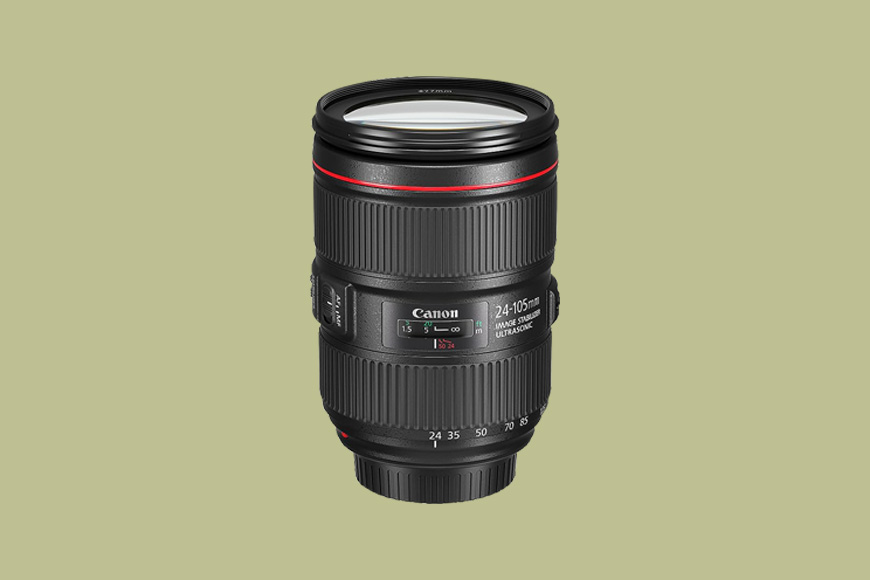
- Great optical quality
- Durable build
- Versatile focal length
- Image stabilization
- Relatively expensive
- Some distortion at 24mm
The Canon EF 24-105mm f/4L IS USM is a travel photography favourite, thanks to its blend of versatility and image quality.
As part of Canon’s esteemed L-Series, it’s well-known for superior optical performance. It delivers exceptional image quality and sharpness, ensuring your travel photos are (hopefully) visually stunning.
It has a robust build and is completely weather-sealed. It’s also surprisingly light and compact, considering its focal range and capabilities.
Its 24-105mm focal range provides a huge amount of flexibility and is ideal for capturing everything from landscapes to detail shots.
The constant f/4 aperture across the zoom range makes exposure control very simple and allows you to maintain consistent settings in varied lighting conditions.
It’s also fast enough to be good in low light conditions and lets you play with a shallow depth of field, especially when fully extended.
The camera lens also comes with built-in image stabilization, which is essential for the kind of handheld shooting that’s normal when travelling.
Those looking for a less expensive alternative could consider the Sigma 24-105mm f/4 DG OS HSM [ Amazon | B&H ] – although you should bear in mind that it’s not weather-sealed.
Canon RF 24-105mm f/4 L IS (Best Canon RF Zoom Lens for Travel Photography)
- Weather sealed
- Excellent build quality
- Image stabilisation
- Excellent autofocus capabilities
- f/4 is not the fastest
The Canon RF 24-105mm f/4 L IS lens is among the mirrorless staples for Canon users.
The 24-105mm focal length is a versatile focal range, suitable for capturing wide-angle landscapes, portraits, and even some telephoto shots.
It’s an ideal range for travel photographers wanting to avoid constantly switching lenses.
As an L series camera lens, it’s very well-built, compact, and lightweight, with a robust construction and weather-sealing for added durability.
With its constant f/4 aperture throughout the zoom range, you get consistent exposure control, and the lens has impressive optical quality, producing sharp images with minimal distortion and chromatic aberrations.
The Canon RF 24-105mm f/4L IS also has in-built image stabilization. That means you’ll be able to take sharper images, even shooting handheld in low-light conditions, a common scenario when travelling.
Its Dual Nano USM (Ultrasonic Motor) also ensures smooth, accurate, and quiet autofocus, giving you the ability to get all your shots in focus, regardless of how challenging your subjects or environments are.
Nikon AF-S FX NIKKOR 24-120mm f/4G (Best Nikon FX Zoom Lens for Travel Photography)
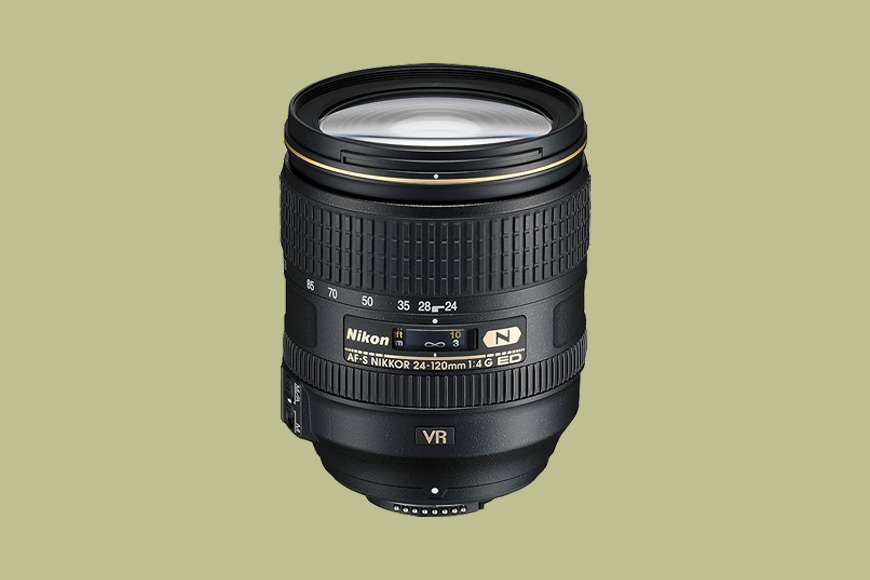
- Excellent image quality
- Well-designed
- Versatile focal range
- Great autofocus
- Some barrel distortion
The Nikon AF-S FX NIKKOR 24-120mm f/4G is a great all-round lens for the Nikon shooter.
It has a nearly identical focal range to the Canon lens above and, as such, provides users with great versatility and the ability to shoot a wide range of photographic scenarios.
You can comfortably shoot expansive landscapes to detail shots and portraits. It’s the kind of lens you could just leave on your camera and be ready for anything.
Its constant aperture throughout the zoom range ensures consistent exposure settings. That means that, whatever the lighting conditions, you’ll be ready and won’t have to make a lot of setting changes to adapt.
Like the Canon, it’s also a high-end product that delivers sharp, clear images throughout its focal range.
It has Nano Crystal Coating, too, which reduces chromatic aberration and lens flare, ensuring consistently high image quality whatever the lighting conditions.
This lens is surprisingly compact and lightweight, given its focal range, and is fully weather-sealed, so you can confidently take it on your next adventure.
The Nikon AF-S FX NIKKOR 24-120mm f/4G has optical image stabilization – essential for handheld shooting – and its Silent Wave Motor (SWM) technology provides lightning-fast and silent autofocus.
Having such quick and quiet autofocus is a definite bonus during travel, for street photography, and for capturing candid scenes like a ninja.
- More: Best Lenses for Landscape Photography
Nikon Z 24-120mm f/4 S (Best Nikon Z Zoom Lens for Travel Photography)
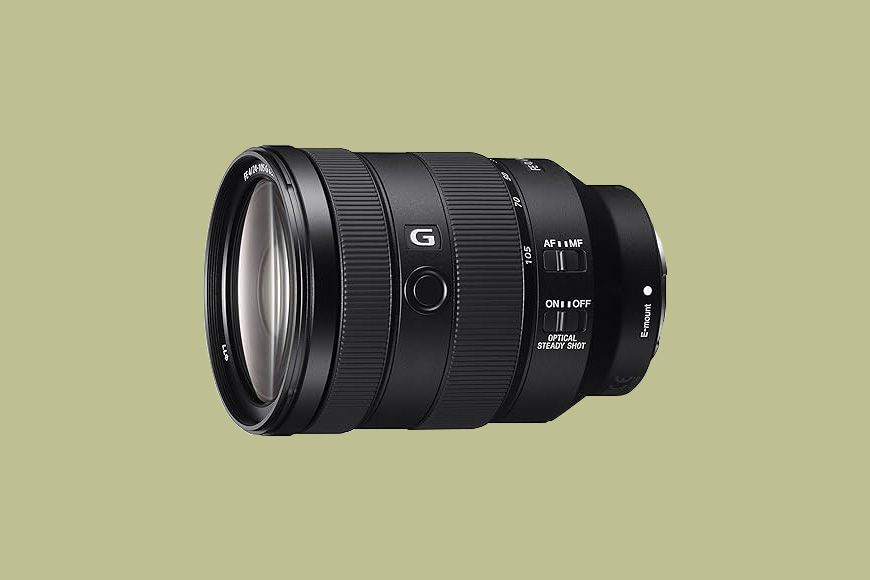
- Excellent optical quality
- Customizable control ring
- f/4 not the best in low light
For the travel photographer shooting Nikon mirrorless, the Nikon Z 24-120mm f/4 S is a stellar choice.
Once again, it’s a lens with a 24-120mm focal range, which provides travel photographers with great versatility.
Whether you’re shooting landscapes or zooming in on details, you can adapt without the need for frequent lens changes.
This lens also has a constant f/4 aperture throughout its zoom range, which means consistent exposure. Plus, it’s easy to adjust your settings when moving between varied lighting conditions.
It’s compact and lightweight, given its capabilities, and has in-built image stabilization and extremely fast autofocus.
Travel photographers generally shoot most scenes handheld, so image stabilization is essential, and it’s always handy to have quiet and quick autofocus so you can react quickly and be discreet.
The Nikon Z 24-120mm f/4 S boasts exceptional optics and delivers crisp, colorful images with excellent contrast.
One nice feature is the lens’ customizable control ring, which allows travel photographers to adjust settings like aperture, ISO, or exposure compensation on the fly.
This ability to tailor-make your shooting experience adds another level of versatility to this as a travel lens.
Sony FE 24-105mm f/4 (Best Sony FE Zoom Lens for Travel Photography)
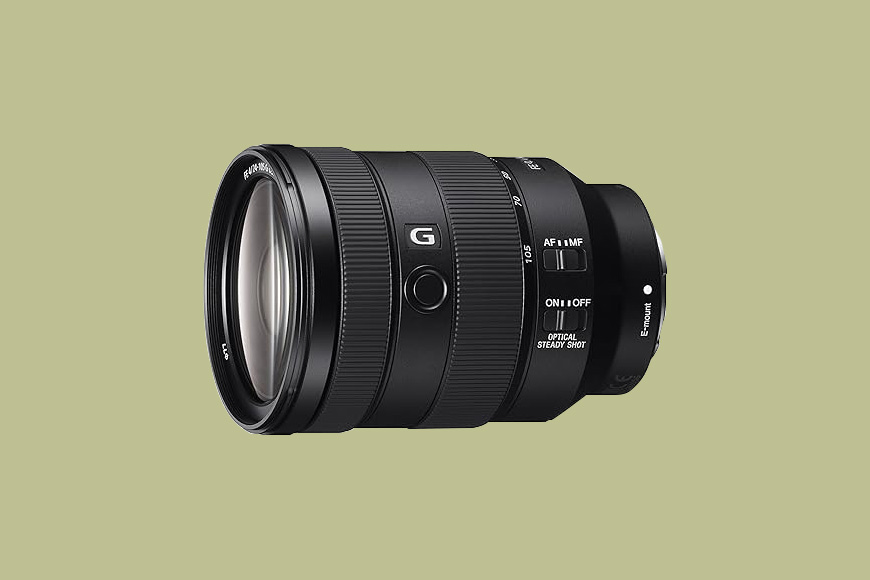
- Great image quality
- Weather-sealed
- A little heavy
- Limiting aperture
Although it lacks a few millimeters of focal length compared to the others in this section, the Sony FE 24-105mm f/4 is a travel photographer favorite known for its exceptional performance and versatility.
Starting at 24mm, the lens has wide-angle capabilities to help you shoot landscapes and architecture. And 105mm is still enough for detail shots and portraits.
Like every other lens in this section, it has a constant f/4 aperture throughout the zoom range. That makes it easy on you when it comes to changing settings, gives you some depth of field to play with, and helps you out in low-light conditions.
Travel photography often involves shooting in dynamic environments, so having built-in image stabilization is a must, particularly when shooting handheld at longer focal lengths. This lens delivers.
It’s also weather-sealed, so you can take it anywhere.
But what about its image quality? Well, Sony is renowned for producing lenses with outstanding optical performance, and the FE 24-105mm f/4 is no exception.
This lens produces sharp images with minimal distortion, chromatic aberration, and vignetting, so you should end up with stunning travel images.
For those photographers who need more range or want to save some money, consider the Tamron 28-200mm f/2.8-5.6 Di III [ Amazon | B&H ].
- More: Best Lightweight Travel Cameras
Best APS-C Lenses for Travel Photography
APS-C cameras are more compact than their full-frame brothers and sisters, and they often have the specs to deliver great images.
So, if you’re someone who has one of these cameras, these lenses could be for you.
Fujifilm XF 18-135mm f/3.5-5.6 (Best Fujifilm Zoom Lens for Travel Photography)
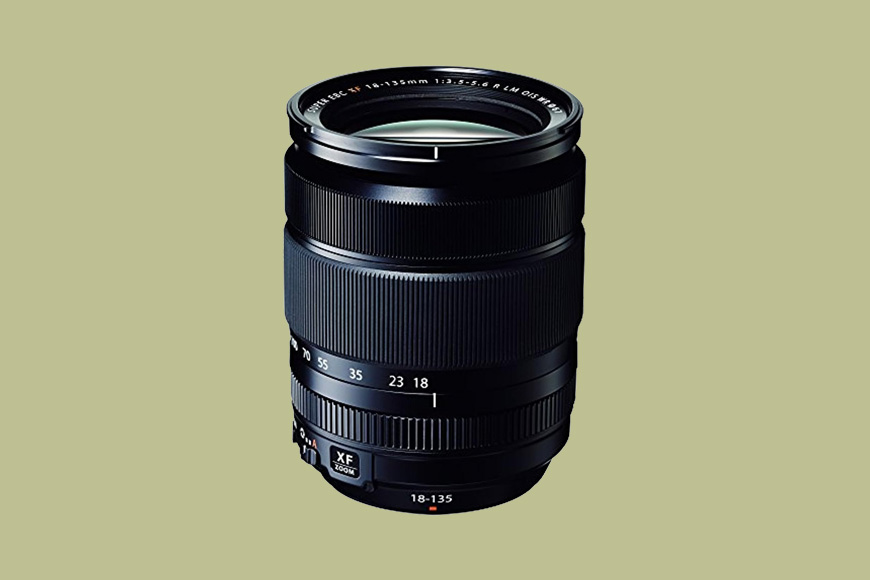
- Lightweight and compact
- Variable aperture
- Some image softness
The Fujifilm XF 18-135mm f/3.5-5.6 lens (full review here ) is pretty popular thanks to its wide focal range and compact design.
The best feature of this lens is clearly its impressive focal range. It’s both a wide-angle lens and a telephoto lens, so provides users with exceptional versatility for capturing everything from landscapes to distant subjects.
Weighing in at a mere 490 grams, the XF 18-135mm is also remarkably lightweight. So, it’s an excellent choice for travel photographers who prioritize portability.
The lens is fully weather-sealed, providing protection against dust and moisture, and is equipped with Fujifilm’s Optical Image Stabilization (OIS) technology.
With this, photographers can shoot handheld at slower shutter speeds without sacrificing image quality.
And, as you’d expect from Fuji, the lens has exceptional optical quality. The images are sharp, with well-rendered colors, minimal distortion, and chromatic aberration – a travel lens that can be relied on.
- More: Guide to the Best Wide-Angle Lenses
Panasonic Lumix 14-140mm f/3.5-5.6 II (Best MFT Zoom Lens for Travel Photography)
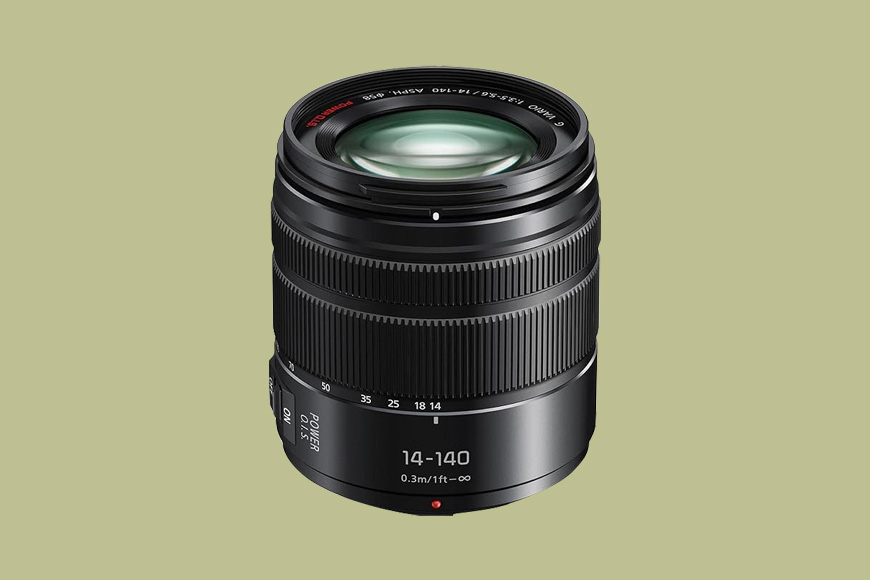
- Extremely versatile focal length
- In-built image stabilization
- Plastic construction
Just a note before I get into it: there are multiple versions of this lens, so it can be a bit confusing. The latest version, which is the version you want, says H-FSA14140 on the box and the barrel.
And if you get it, you’ll get a lens that is well-liked in the travel photography community for its broad focal range and compact design.
With its extensive 14-140mm range, it’s the most versatile lens in this guide. There is very little you wouldn’t be able to capture with it, thereby reducing the need to change lenses.
It’s also, especially given this focal range, exceptionally compact and lightweight and weighs in at a mere 265 grams. No need to use up much space or add unnecessary weight to your camera bag.
Panasonic’s Power O.I.S. technology is also integrated into the lens, providing effective image stabilization to ensure sharp, blur-free images, even when shooting zoomed-out.
It boasts an excellent autofocus system, fast and virtually silent. That’s particularly good for travel photography as you can shoot in quiet or intimate settings and capture moments without disturbing the atmosphere.
Thanks to both those last features, the smooth zoom and silent autofocus, the Lumix 14-140mm f/3.5-5.6 II is also well-suited to videography, adding an extra dimension to your travel storytelling.
Another option is the Olympus 12-200mm f/3.5-6.3 Lens [ Amazon | B&H ], though by most accounts, the Panasonic is a better performer.
Canon EF-S 18-135mm (Best Canon APS-C Zoom for Travel Photography)
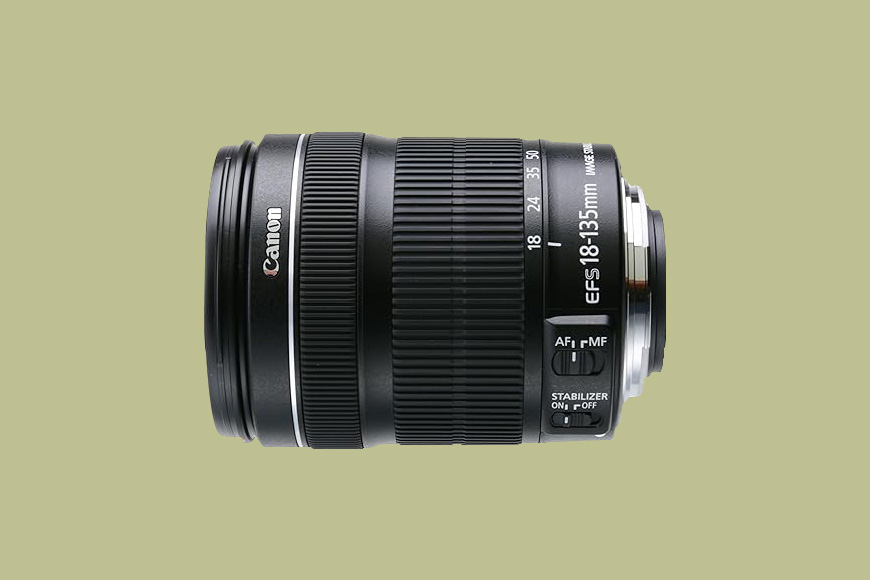
- Light and compact
- Excellent autofocus
- Made of plastic materials
Weighing in at just 480 grams, the EF-S 18-135mm is a relatively lightweight and compact lens – important for travel photographers who want to minimize weight and maximize space in their gear bag .
And, with its 18-135mm focal range, whether you’re shooting landscapes, portraits, or distant subjects, the Canon EF-S has you covered.
The lens features Canon’s STM (Stepping Motor) autofocus technology, providing smooth and silent focusing during both still photography and video recording.
It is also equipped with Dynamic Image Stabilization (IS), which reduces the impact of camera shake.
This feature is invaluable for handheld shooting, ensuring sharp images even when using the lens at longer focal lengths or in low-light conditions – a common scenario in travel photography.
The overall image quality is excellent, too, something that Canon is well-known for. The images are sharp, well-contrasted, and with good color reproduction across its focal range.
Nikon Z DX 16-50mm f/3.5-6.3 VR (Best Nikon Z DX Zoom for Travel Photography)
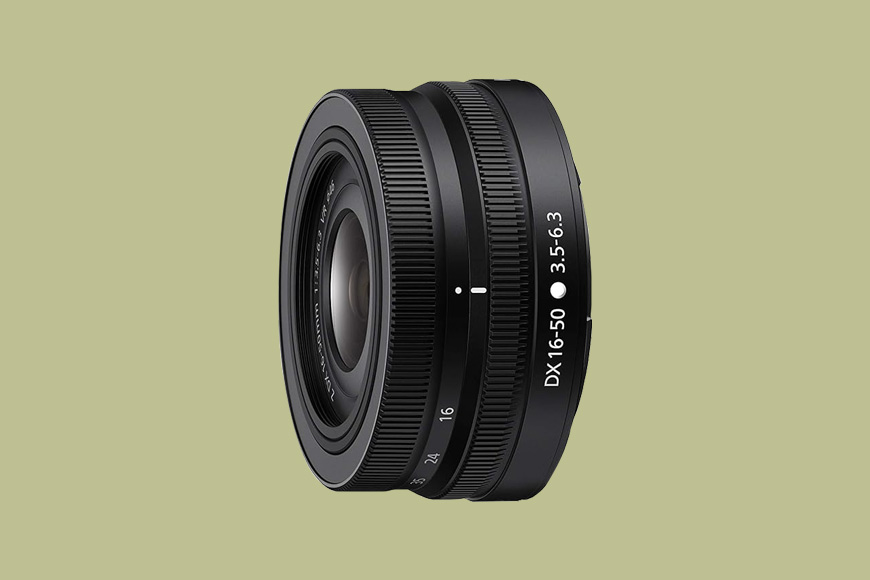
- Extremely lightweight and compact
- Good autofocus
- Good focal range
- Slightly cheap feel
The Nikon Z DX 16-50mm is exceptionally compact and lightweight, making it an ideal companion for travel photographers.
The lens’s sleek design ensures it takes up minimal space in your gear bag. It’s so sleek it almost looks like a pancake lens!
Not only that, but the lens also has an electrically retractable mechanism, allowing it to collapse into an even more compact form when not in use.
Despite its small form factor, it nevertheless covers a decent focal range, from 16mm to 50mm. This makes it well-suited for a variety of travel scenarios, from wide-angle landscapes to portraits.
Overall, the image quality is good, and sharp throughout the range. That’s aided by built-in stabilization that eliminates the effects of camera shake when shooting handheld.
Equipped with a Stepping Motor autofocus system, the Nikon Z DX 16-50mm has fast, quiet, and precise focusing. This is super useful when shooting travel photos, as you need to react quickly and often be discrete.
- More: Best Lenses for Portrait Photography
Nikon AF-S DX 16-80mm f/2.8-4E (Best Nikon DX Zoom for Travel Photography)
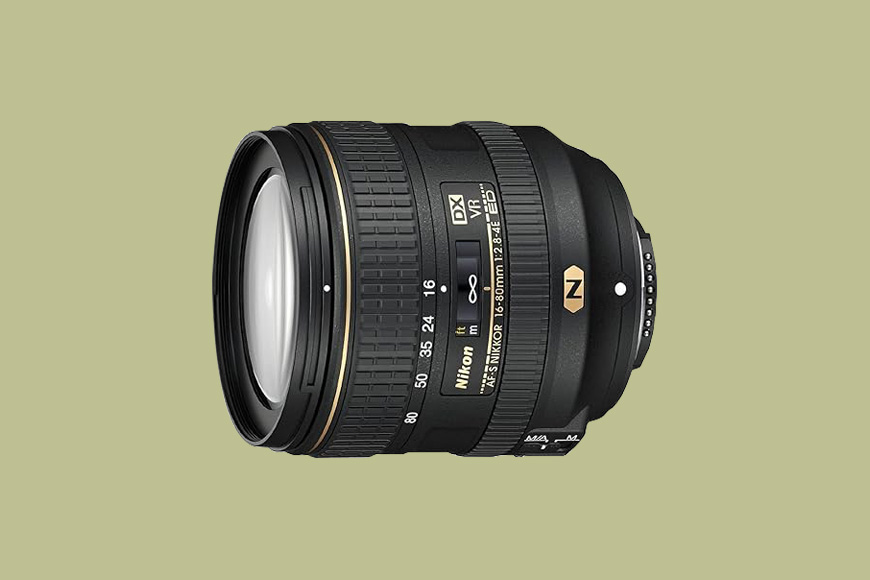
- Fast variable aperture
This lens gives you a bit more focal range to play with than the one above, and a faster variable aperture.
16-80mm gives you a lot of flexibility in terms of what you can shoot. It’s wide enough for architecture and landscapes, and also perfect for portraits and details shots.
It’s the kind of lens that, if you’re thinking of an all-around solution, this could be it.
Although variable aperture lenses aren’t the most convenient, f/2.8-4, gives this lens impressive low-light performance and creative depth of field control.
Its brighter aperture is especially good for dimly lit environments, so you can capture stunning images in indoor settings or even as the sun sets.
The lens also features Nikon’s Vibration Reduction technology, which ensures clear handheld images even at low shutter speeds and the end of the range.
The Nikon AF-S DX 16-80mm f/2.8-4E has fast and accurate autofocus, as well as Nikon’s high-end Nano Crystal Coating and Extra-Low Dispersion elements, which help reduce lens flare, ghosting, and chromatic aberrations.
This means that the images it produces are high quality and with accurate color reproduction, even in the kind of challenging lighting situations that commonly occur in travel photography.
- More: 77 Awesome Travel Tips for Photographers
Sony 16-55mm f/2.8 G (Best Sony E Zoom Lens for Travel Photography)
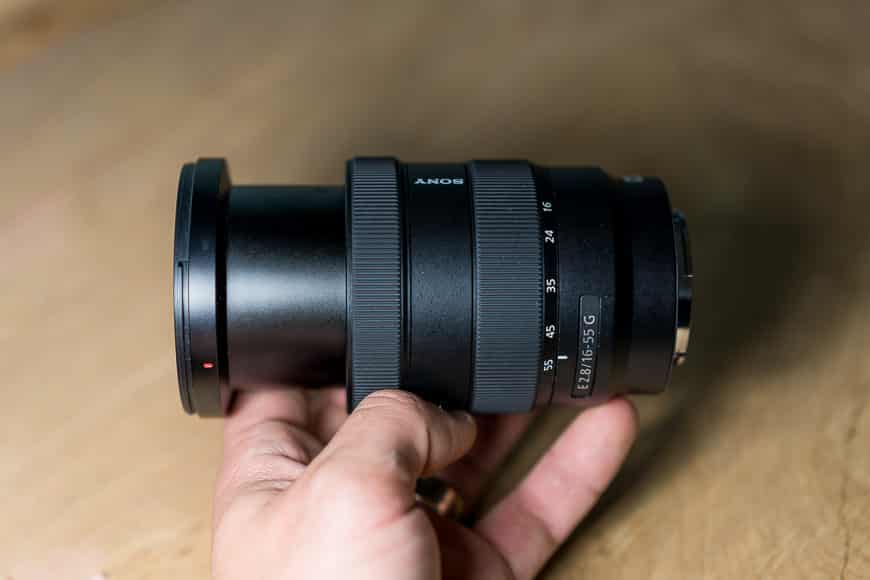
Credit: Marc Bergreen
- Great optics
- No image stabilization
This is an extremely versatile lens with a constant f/2.8 aperture throughout the focal range.
That bright aperture somewhat compensates for the lens’ lack of in-built image stabilization and allows for excellent low-light performance and creative control over the depth of field.
It’s compact and fairly light, and has a robust, weather-sealed build that can comfortably withstand the rigours of travel photography.
As photographers have come to expect from Sony, you also get excellent image quality, with sharp pictures and true-to-life colors, and great autofocus capabilities, essential for capturing those sometimes fleeting travel moments.
Best Prime Lenses for Travel Photography
In terms of both optical and build quality, nothing really beats primes.
So, if you can find one that suits your shooting style, choosing just one or two to put in your bag could be a good way to go.
The links below each section are to the full-frame equivalents.
As a focal length, 35mm is justifiably popular, as it provides a natural perspective that matches the field of view of the human eye.
They are sometimes referred to as the ‘storytelling lens’ because, given this natural feel, photographers easily feel in sync with their camera, which makes it easier to compose scenes.
They are ideal for capturing a wide range of scenarios, from street photography to environmental portraits.
Many 35mm primes feature wide apertures, such as f/1.4 or f/2, so they’re good in low light and can also handle high shutter speeds. This makes them extremely versatile.
Possibly the best lens for travel photography, and any photography.
A 24mm prime provides a broader view, allowing you to include more of a scene in your frame.
This makes it perfect for capturing expansive landscapes or architecture, particularly when you want to emphasize the scale or beauty of a location.
It’s also good for photographing, for example, bustling marketplaces or cultural events, as you can get right in the centre of the action and still fit plenty into the frame.
Despite being a wider focal length, a 24mm is also good for environmental portraits, as it can capture subjects in their surroundings, providing context and storytelling elements.
The nifty fifty is renowned for its flattering portrait perspective that allows you to isolate subjects from the background.
Many 50mm primes have wide apertures (f/1.8 or f/1.4), so you can create beautiful background blur and really emphasize your subject.
Those wide apertures mean they generally have great low-light performance, too.
50mm is also a good focal length for detail shots, such as a local artisan’s hands or the textures of street food or handicrafts.
What’s Best for Travel Photography: One Lens, Two Lenses, or a Three-Lens Kit?
Choosing the right combination of lenses for your travel photography kit is an important decision that can have a significant impact on what you can capture.
Do you travel as light as possible and take only one lens? Should you take more lenses to cover more situations?
Which focal lengths should you choose?
A telephoto lens? Zoom lenses or primes?
Let’s take a look at a few of the options.
One Lens Kit
My ideal one-lens kit would be my go-to lens for every kind of photography, a 24-70mm f/2.8, or a 24-105mm f/4.
These are generally high-quality lenses, and they are extremely versatile.
With their broad focal ranges, you can take wide-angle shots and also zoom in for portraits and other detail shots.
As you can shoot so much with them, and often won’t feel limited in any way, you can focus on being in the moment and just enjoy the photography.
Having one lens also means less weight to carry and less space taken up in your bag – perfect for those who prioritize traveling light.
If you have an f/2.8 aperture, it’s also fast enough that you can shoot in even challenging light conditions. With f/4, you may struggle more, but as a trade-off, you’ll get the extra focal length.
Two Lens Kit
My ideal two-lens kit would have a 24-70mm f/2.8 or 24-105 f/4, paired with either a 50mm f/1.4 or an 85mm f/1.2.
The 24-70mm covers a wide focal range, while 50mm and 85mm primes excel at portraits, detail shots and low-light situations.
As I’ve already run through the features of the 24-70mm and 24-105mm, I won’t repeat myself, so let’s consider the primes.
Choosing either of these primes will enhance your creativity. Their wide apertures can create beautiful background blur and enhance low-light performance.
Not only this, but shooting with primes forces you to move around more and immerse yourself in a scene to try out compositions, whereas, with a zoom lens, you can stand in one place and let the lens do more of the work.
In my opinion, when you’re traveling, anything that forces you to get more involved is a good thing.
A two-lens setup is also still relatively compact compared to a three-lens kit.
Three-Lens Kit
My ideal three-lens travel photography kit would be made up of a 24-70mm f/2.8 or 24-105mm f/4, with either a 50mm f/1.8 or 85mm f/1.2, and either a wide-angle lens (such as a 10-22mm) or a longer prime, such as a 135mm or a 200mm.
I’ll just cover the third lens here, to avoid repeating myself.
My reasoning for these two choices is that, with a third lens, you are starting to get into specialist travel photography.
The first one or two lenses are all-round options that will basically help you photograph pretty much anything.
When choosing a third lens, given it’s going to add more weight and cost, and is not totally essential, you need to pick something that will help you photograph something specific that your other two lenses might struggle with.
If you particularly like to photograph architecture or panoramas, you might want to consider a 10-20mm (or something close to those focal lengths).
If you like to take pictures with a lot of lens compression, shoot wildlife, landscape details, or creative portraits, a longer prime will definitely help.
With a three-lens kit, you’ll be ready for anything.
Single Zoom vs. Multiple Primes
When choosing the best lens for travel photography, you of course have to consider the differences between zoom lenses and primes.
If you choose to take a single zoom lens, you will have the ultimate in convenience and versatility.
You’ll never need to change your lens (or feel like you want to).
But there are limitations. They’re often not as good in low light, and they give you less creative control over depth of field compared to primes.
With primes, you get enhanced low-light performance, sharper image quality, and creative control with different focal lengths and apertures.
But, on the flipside, you’ll need to make (possibly frequent) lens changes, due to potential gaps in focal length coverage, and primes tend to weigh more.
FAQs About the Best Lens for Travel Photography
Which lens is used for travel photography?
Many lenses can be used for travel photography.
You can use a telephoto lens, zoom lenses or primes, and you can choose the focal length you need.
The important thing is that, whatever camera lenses you choose, they’re versatile enough that you can shoot in a variety of environments and situations.
What focal length is best for travel?
The best lens for travel photography in terms of focal length is the most versatile one.
Generally, if you have to choose one lens, a zoom with a focal range of 24-70mm or 24mm-105mm is best.
What is the best prime lens for travel photography?
The best prime lens for travel photography would be, depending on your shooting style and preferences, one of either a 24mm, 35mm, or 50mm. Only if you shoot wildlife would you need a telephoto lens.
What two lenses should I have for travel photography?
If you just want to take two camera lenses with you, I recommend you take one zoom lens (for versatility) and one prime (for creativity).
You'll Also Like These:

Jeff Collier is an experienced film photographer who enjoys experimenting with modern digital photography equipment, software and apps. He’s also an ex-world champion triathlete and avid cyclist, clocking hundreds of km each week in the beautiful Tweed Valley of northern NSW, Australia.
Your “Best for any camera” seems to have left out M43
IMO Sony’s best travel lenses are the 20-70 G and the 16-35 G. I take an RX1 or the FE 28mm as a (creative) prime.
Leave a Comment Cancel Reply
👋 WELCOME TO SHOTKIT!

🔥 Popular NOW:

Unlock the EXACT blueprint to capture breathtaking iPhone photos!
What Is the Best Prime Lens for Travel Photography?
Travel photography is a staple genre of the craft and one that most photographers try at some point. However, with such a broad scope and the many other genres that it encompasses, it can be hard to keep your kit bag light. So, what's the best prime lens?
There is, of course, no correct answer, only opinions. Zoom lenses are particularly popular as walkaround, do-it-all options, but if you prefer primes or you need faster glass, a prime lens might be your only option. You then have the difficult task of working out which focal length best suits your needs.
The nifty-fifty has always been a favorite of photographers from a range of genres, but for some (myself included), it's something of a half measure. What many travel photographers opt for instead is a wider prime and in this video, TKNORTH discusses his new favorite, the Sigma 24mm f/1.4 DG HSM Art . That is particularly wide and fast, which lends itself to versatility, with wider shots on the menu, but also close-ups of subjects with a narrow depth of field and good subject separation from the background.
I have used a 24mm f/1.4 before and though I didn't expect to enjoy it as I gravitate towards far longer primes, I had to concede that it wasn't short of creative applications. For me, the success of a prime that wide is its widest aperture being so wide; had it have been an f/2.8, I would have wholly disagreed with the sentiment of this video.
What prime lens do you reach for when it comes to travel photography and why? Share your thoughts in the comment section below.
If you love travel and photography, consider checking out our Photographing the World Series with Elia Locardi where we go to some of the most beautiful locations in the world and teach the process of creating world class landscape images. Save 15% by using "ARTICLE" at checkout.
Robert K Baggs is a professional portrait and commercial photographer, educator, and consultant from England. Robert has a First-Class degree in Philosophy and a Master's by Research. In 2015 Robert's work on plagiarism in photography was published as part of several universities' photography degree syllabuses.

I find 24mm way to wide. To be honest 35mm will be bit more use I think if it comes to general purpose ....you can always pan for landscape....and it of course depends what camera you shoot....you can also crop when your camera delivers enough megapixels .
I'm going to agree. For me, a Fuji X-T3 shooter, my Viltrox 23mm f/1.4 (Full Frame 34.5mm Equivalent) is the perfect focal length for travel photography. Its versatile enough for everything that doesn't require a telephoto. If I was still shooting with Sony, I'd definitely get the Sigma 24mm.
Depends on camera and style. For crop sensor I use 24/50 combination, for full frame it’s 35/85.
No way, a 600mm F/4 is the one

I wonder for the various cute birds, has anyone found a way to convince them to volunteer for some portrait photos with a much shorter focal length, in return for compensation?
For example food, toys, or electronics?
A 24mm lens on crop body works well, but why the heck does it need to be f/1.4? This lens is nearly on par with Canon's 24-105 f/4 in terms of size and weight. Ok, travel preferences will vary. The Canon 24mm f/2.8 is a nice pancake lens, making the entire setup look like a toy and less obvious.
Low light, subject separation.
You describe special cases, not general usage. Traveling requires flexibility.
Flexibility in what exactly? If you limited to take one lens only I dont think the pancake lens will do the best job. 24/2.8 yet on a aps-c is pretty much like smartphone photos... Only the quality on pixel level is better
Give me a nifty -50. I’ll stitch in photoshop if it’s not wide enough.
I agree with other posts that for FF 35mm is the best. A touch wide but not distorting with the ability to stitch together frames.
Have not quite figured out the need for fast glass in the digital times, except for the bokeh and narrow DOF. In the film days fast glass allowed for a faster SS to handle the motion of clicking the shutter hand held! Why a travel lens at one focal point and fast glass today! When one travels you never know what you will see/come across, so a telephoto is the best to have. In the Sony world (since '14) you have several 2470, 70200 (f/4,2.8) the best is the FE 24-240mm F3.5-6.3 OSS (360 in APS-C mode) it is wide but has reach and is OSS where primes don't. How many cameras have IBIS so why use a prime without IS, you will also need sticks (extra for travel). After 8 years with most every Sony prime and telephoto lens I carry everyday in a teardrop bag a A7iii with the 24-240mm and the surprise the APS-C E 1018mm f/4 OSS (15-27mm) that is also 12-18mm in full frame (18mm if remove the light shield) that uses screw on filters and both lenses have the Haida Filters adapter that I can use the Clear Night filter at night. Be truthful, how many travel with a backpack of gear or even one lens. As far a bokeh/dof it is where you set you focus and mode, and for clarity near and far you will set f/# 2 stops above wide open. Truth, Yes when I travel away from home I have all my primes and telephotos for planned captures BUT for the unplanned everyday drive/walkabout it is my Teardrop bag. Today it is SW that gets clarity and or bokeh in the end!!!!

I like the 40mm Zeiss Batis. It's got some macro capabilities, autofocus, lightweight and is fast enough at F2.
Articles like these always leave me wondering "Why?". The usual motivations for carrying a prime are improved clarity, less weight, faster lens. But, even a simple comparison of, say, the Sigma 24mm mentioned in the article versus, say, Canon's RF24-105mm challenges those benefits. The Sigma weighs a "svelte"1.46 pounds (665 grams), while the Canon weighs a "whopping" 1.54 pounds (700 grams). The Sigma spec's don't mention image stabilization, so presumably there is none. Compare that to the Canon's 8 stops of IS when mounted on a Canon R5, and the Sigma's f/1.4 doesn't seem so impressive compared to the Canon's f/4.. Improved clarity? The reviews of both lenses suggest that, if you can see the difference in clarity, you're probably looking fhrough a microscope. So, for 35 grams, would I ever really want to give up the reach of a 24-105 zoom? Not in my lifetime, where that extra reach has enabled me to capture images not possible with a 24 mm prime. .
for me in M43 land, I have the Oly 12-42, and I will always also carry the 20mm Pana. size and weight I don't even realize it's in the bag, 100g. speed is huge, 2.8 for the Oly zoom, vs 1.7 for the Pana prime.
no brainer really.
Define the type of travel photography?
If it's for weeks at a time in a far off land (like I do), then there is no single lens. You need to build a kit that is light enough to get on the small turbo prop planes that get you out in the sticks.
I like shooting with 2x identical FF bodies at the same time. Therefore I carry:
20/21 F2.8 for landscapes + light travel CF tripod.
35 F1.4 + 85 F1.8/F1.4 for 90% of the shots, one on each body.
70-200 F4 for the long end.
Everything has to be able to be carried on, especially batteries, so weight is the killer.
Well, I chose the Leica Q2 as best travel combination for me (enough MP to crop and wide enough), but before owning that I'd have chosen the Fuji X100F which I owned previously, so 35mm would do as well.
On the EOS R system I'd take the lightweight RF 35mm f1.8 IS macro lens, which is a hell of an allrounder lens, unfortunately not weather sealed. I guess you find similar options for nearly every camera system.
Unbelivable that nobody had mentioned 28mm...
Since I had an Old pancake Nikon 28mm, I've found it more organic and cinematographic than the 35mm, less wide than a 24mm, making composition less busy.
Your phone is the best choice for travel 👌
for M43, the 20mm 1.7 Panasonic is always in my bag. lens weighs 100g, and is 2.5" diameter, and 1" length.
absolutely tiny. sharpness is great, where it drops off is on the focus speed, it is slow to focus. any other aspect though, it shines.
I struggled with this recently on a trip to Hawaii. I love macro and wildlife photography, but this was a couples excursion, not exclusively a photography one. I settled for my Nikkor Z 40mm f/2 and a Nikkor Z 24-200mm f4-6.3.
For me the issue with just a prime is sometimes when I'm traveling with family, I want to crop close without dragging my kids/wife across the street or make them wait while I sneak to get close enough to wildlife. A variable zoom is great and compact - maybe not getting any professional wildlife shots, but sharp enough for myself.
I can never go without a prime though, because for human subjects I just can't go without the ability to customize my f stop at more usable levels to isolate depth of field and enhance sharpness by limiting ISO. Do I usually keep it at f/4ish? Sure. But do I take quite a few shots at 2 or 2.8? You bet.
While it is not a prime lens, it is a fixed lens. The Sony RX 10 IV is a 24 to 600 mm Zeiss lens that is by far the best camera and lens for travel photography.
35mm 1.4. You can sit directly across from the people you are traveling with and take an environmental portrait with the perfect amount of subject separation from the background and foreground. In a tight room, it may seem not wide enough but often, just put the camera against the wall and it usually works. It really captures the moment without the distortion of a 24mm. I find that 24mm really doesnt solve the problem of not having a wide enough lens in a small sapce. You will get distorted faces and the the atmosphereis will be altered by inaccurately representing the size of the room. Once in a while you do run into a large landmarks that just wont work with a 35mm but you can either bring a 16-35mm or a 24mm. Or simply use a smartphone because you probably don't want much or any background blur anyways in a shot wider than 35mm.
My SLR days go back to a Nikon FTn back in 1974. I traded it in for Hasselblad for weddings, but when I went back to 35mm, i chose the super small Pentax ME with a pancake 40 f/2.8. It had a belt clip. I took it everywhere! Best lens focal length ever. Fast forward nearly 50 years, Nikon released the Z 40mm f/2. On a Z5, it's hard to beat for a concealable travel camera. I ordered the 28 f2.8 for my Z50. 42mm equivalent with the crop. Hard to beat it now. Small and light. Crazy sharp since I'm not using the edges!

- Gear Talk: The Benefits of Travelling with a Zoom Lens
- By Lisa Michele Burns
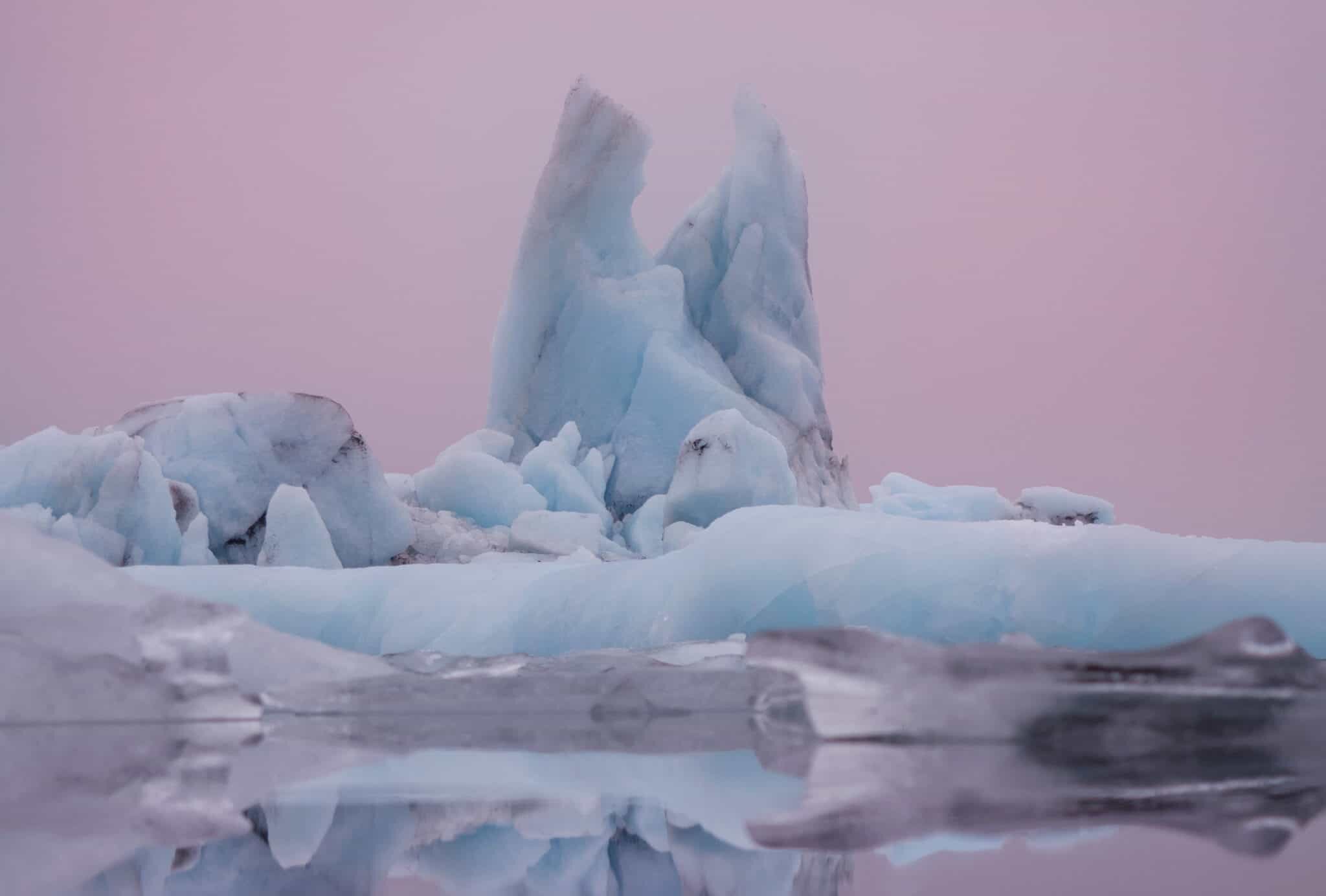
Why a zoom lens is beneficial for travel photography
Now before you click away thinking this article is going to be a high tech article about a zoom lens or fancy gadgets, wait a second…
I’m not one of those photographers who bulks up on gear and has more equipment than I’ll ever need. I like to keep it simple, one zoom lens, one versatile wide angle. Because I’m travelling most of the year, I prefer to travel with only a small professional camera kit in order to save my back and luggage allowance from any issues! I have what most people consider to be a little backpack and inside are two Olympus OM-D E-M1 MkII camera bodies and three lenses, four if I’m shooting underwater. It’s the same gear I use whether I’m shooting a tourism campaign, destination guide, editorial images or just for fun.
You can read more about ‘what’s in my bag ‘ but usually when travelling I’ll have the M.Zuiko 12-40mm f.2.8 PRO lens and then in my backpack will have a 25mm f/1.2, 7-14mm f/2.8 and then what has quickly become my new favourite, a lens that if you’ve met me lately, I’ve no doubt thrown (gently) at you to try out.
The M.Zuiko 40-150mm f/2.8 PRO lens started as more of a curiosity than anything but after zooming in on glacial patterns in Iceland and breaking waves in Bali, I was quickly hooked on its abilities.
If you’re heading off on a trip soon or looking to invest in some new gear, I wanted to write a little article and share some key benefits of using a zoom lens while travelling, with some stories from my trips thrown in for good measure…
*At the bottom of this article you’ll find some tips on what to check for when buying a zoom lens!

Focal Length Possibilities
Having a zoom lens enables you to mix things up with your composition. A prime lens of course only enables one focal length (which is great for certain circumstances) but choosing to travel with a zoom lens means you can get in close, zoom out and mix it up without needing to change your lens.
If you’re looking to condense your kit to just one lens while travelling, a zoom lens can be just the thing you need. My 40-150mm has been with me from Norway to New Zealand and I’ve used it primarily for landscapes, something I never really considered after falling for the perspective of a 7-14mm wide angle (also amazing!) that I now use more for underwater shots.
Take a peek below at two examples of the same landscape, icebergs in Iceland’s Jokulsarlon Glacier Lagoon…
Both were shot on the Olympus OM-D E-M1 Mk II camera and I love each shot equally but there’s something that draws me into the second image, zoomed to really highlight the formation and strength of the scene.
Which do you prefer?
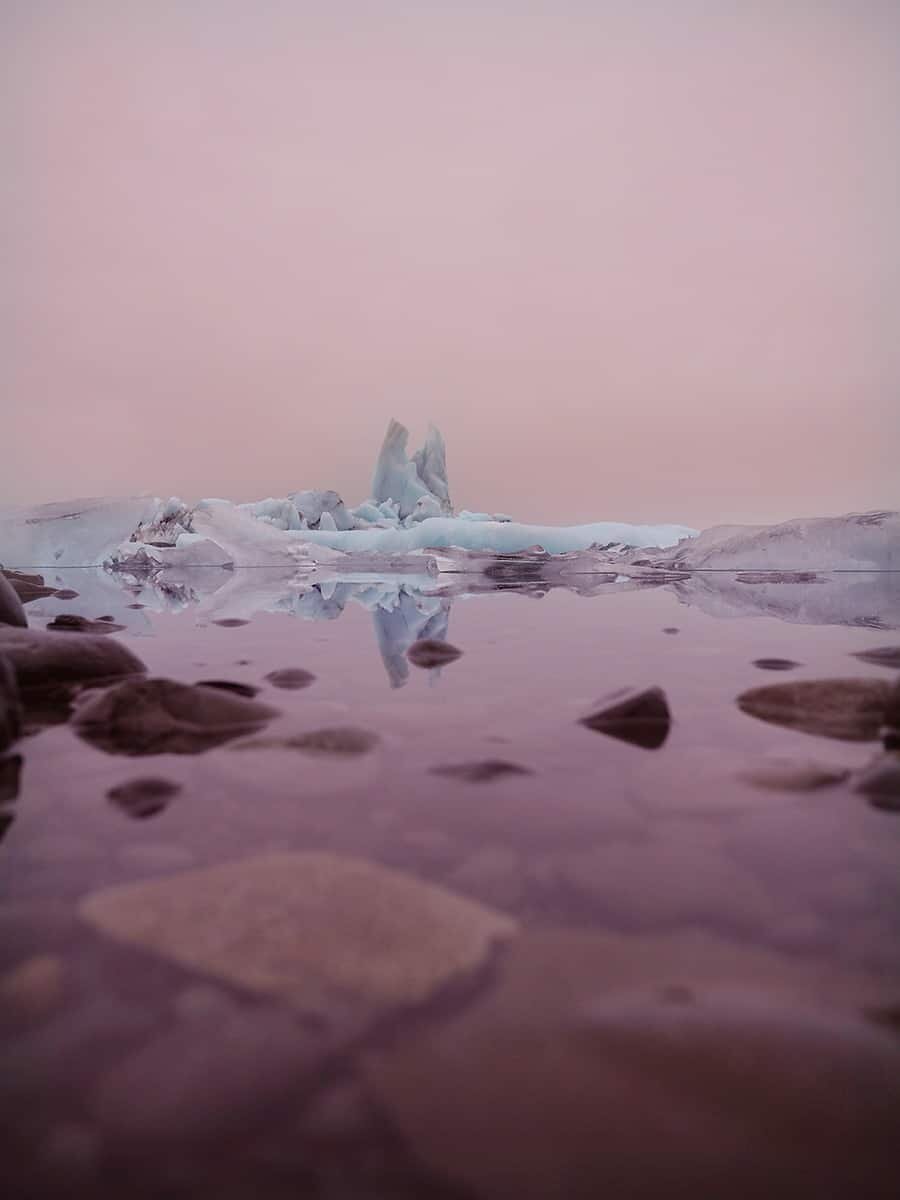
Another example from my recent trip to Kyoto is from Kiyomizudera ( read here for my guide to more amazing places to photograph in Kyoto!). We stood at this exact location for about 90minutes, capturing various angles and waiting as the dusk skies appeared. Below are some images that highlight how a zoom lens can compress the scene and make the subject appear closer, framed by the soft foreground features.
Sure you can take a quick snap and keep on walking, but taking the time to compose, create and wait for the perfect shot really pays off because you end up with a whole collection of images to play with later!
From left to right you can see the focal length increasing and getting closer to the pagoda. The first shot is taken using the M.Zuiko 12-40mm f/2.8 PRO lens to show the scene and then the following three images were captured with the M.Zuiko 40-150mm f/2.8 PRO lens at various focal lengths.
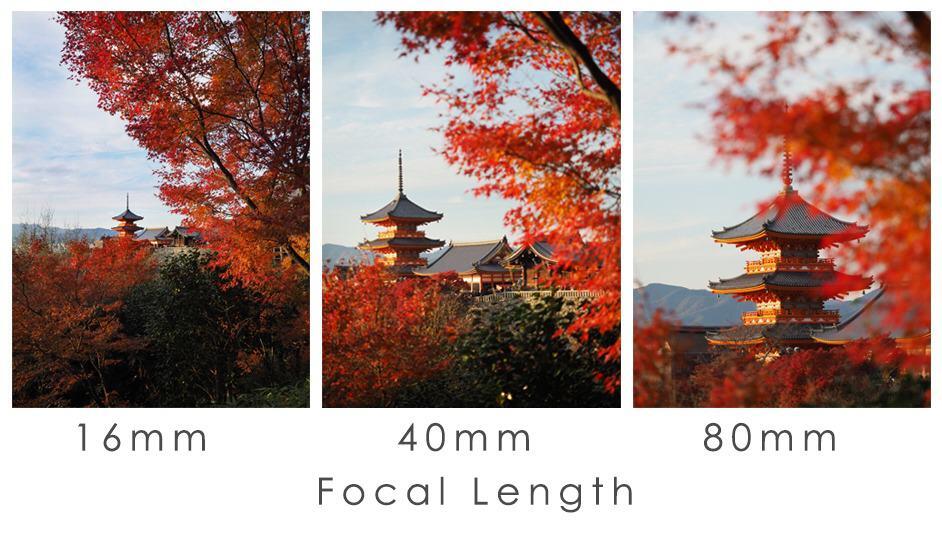
Creating Compression with a Zoom Lens
As you can see above in the sample images, a zoom lens can help you to bring the subject closer within your image. Rather than capturing the entire scene, zooming on particular details or composing your shot by framing a subject within the landscape helps to portray a compressed reality.
When you take a shot on your phone for example, you’ll be taking in the entire scene at once without much wriggle room to get creative and really showcase the details within the scene.
By zooming in to focus on a subject, you will create a perspective that can bring objects in the distance closer to compress them so they’ll appear larger. In the image below which was taken at Tacking Point Lighthouse in Port Macquarie, Australia, the lighthouse appears quite close. In reality I was across the cove up on some rocks and zooming through shrubs.

Capturing Cultural Portraits + Bokeh
I personally dislike having my photo taken so completely understand why others feel the same. When I’m travelling I try not to get in people’s faces with my camera and instead prefer to stand back, and zoom in if I’m attempting to take a portrait. I guess you would call it stalking…but you know, not in a creepy way 😊
Street scenes, faces in a crowd and cultural festivities can be great moments to capture and guess what, a zoom lens is going to be your best friend in this instance.
Without intruding, you can stand back and capture your shots, it’s the perfect solution for those who prefer to blend into a crowd than get in the way. Hello introverts dream!
*Of course it’s still important to remain sensitive especially when photographing events or scenes you may not understand the cultural significance of. Always be aware of when it’s best to put the camera down.
On my 2017 photography tour in Japan, we spent some time at the Meiji Shrine near Harajuku in Tokyo. It’s a popular shrine for celebrations including Shichi-Go-San, a traditional right of passage and festival for children aged 3, 5 and 7 years old, along with traditional wedding ceremonies.
Those getting married at Meiji Shrine are no doubt well aware that there are plenty of tourists with cameras around so you’re welcome to take photos, just don’t get in the way of the procession as they walk through the grounds.
The images below were captured with the M.Zuiko 40-150mm f/2.8 PRO lens and I was about 25m away from the people and zooming through crowds.

Use foreground objects to frame your image
I love the bokeh produced when you focus on a subject with this lens, it provides such a beautiful depth of field and my favourite thing is when you can use colourful foreground subjects like plants for framing the scene. The image below was taken in Arashiyama, Kyoto and by standing in the garden and using leaves and branches to frame the woman, it creates a gorgeous border that works to highlight her position within the image. Sometimes the shot won’t be immediately evident until you start testing some compositions and climbing between trees looking for that perfect angle.
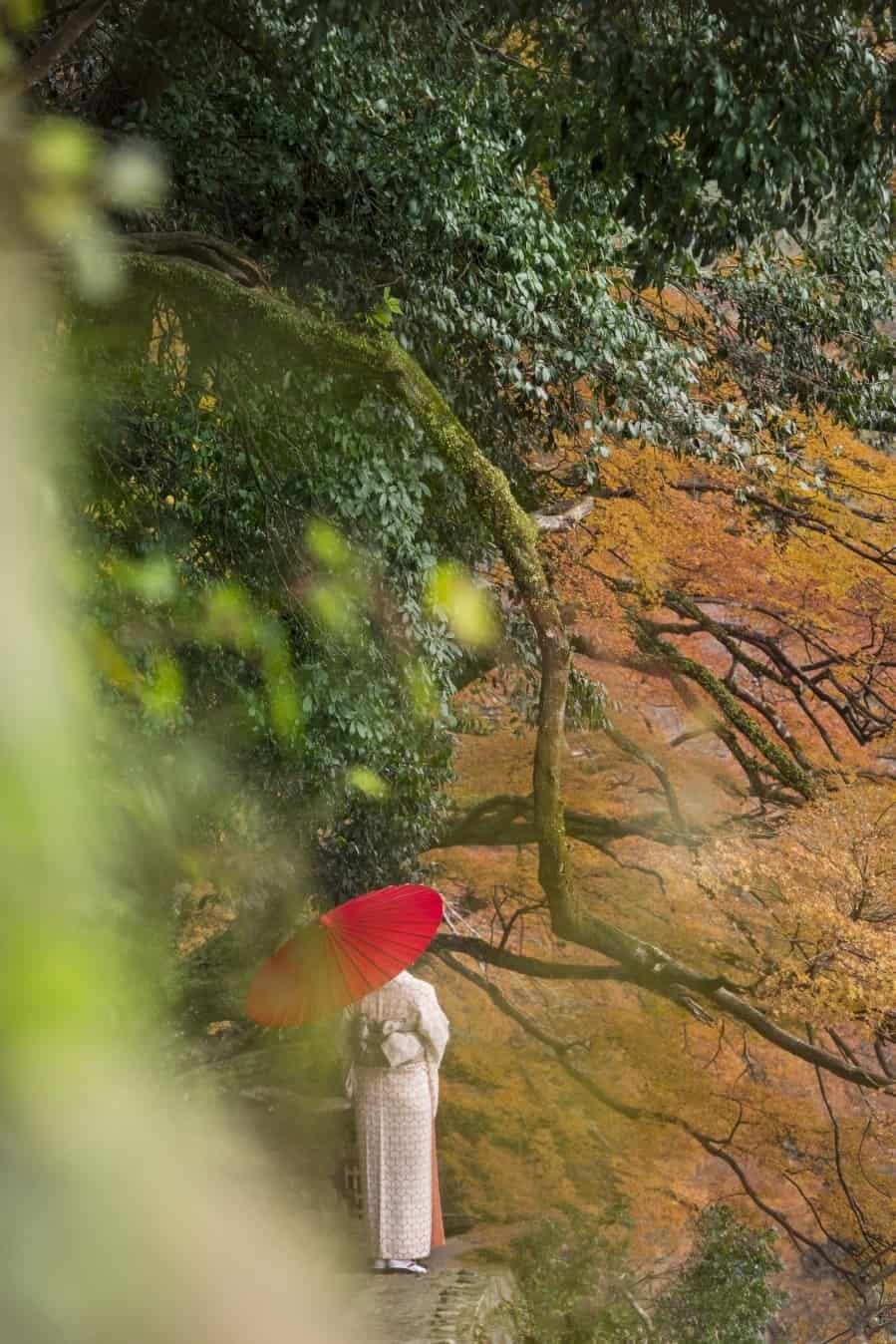
Photographing Details within a Landscape
I can get a little obsessed on the small details within a landscape and having the 40-150mm lens hasn’t done anything to help wane my obsession. Being able to set my focal length to 150mm and photograph patterns in ice, movement in the ocean, tree branches…doesn’t that sound so exciting!? Hopefully you’re as nature freaky as I am otherwise you’d be thinking I’m a little nutty right about now.
To show what I’m talking about in photos, which I think will help my case, below you’ll find a series of images taken at the full 150mm reach. Normally on a zoom lens, the further you zoom the less stable or clear your shot turns out. With an aperture of f/2.8 though, the M.Zuiko 40-150mm lens performs so incredibly well whether you’re shooting wide open, or right in close.
Since photographing with this lens it’s actually helped me to find details to capture that I can’t actually see with my eyes. I guess you could even use it as binoculars too…but now I’m giving away too much info about my hobbies haha!
Read more about my process of capturing details within a landscape here .
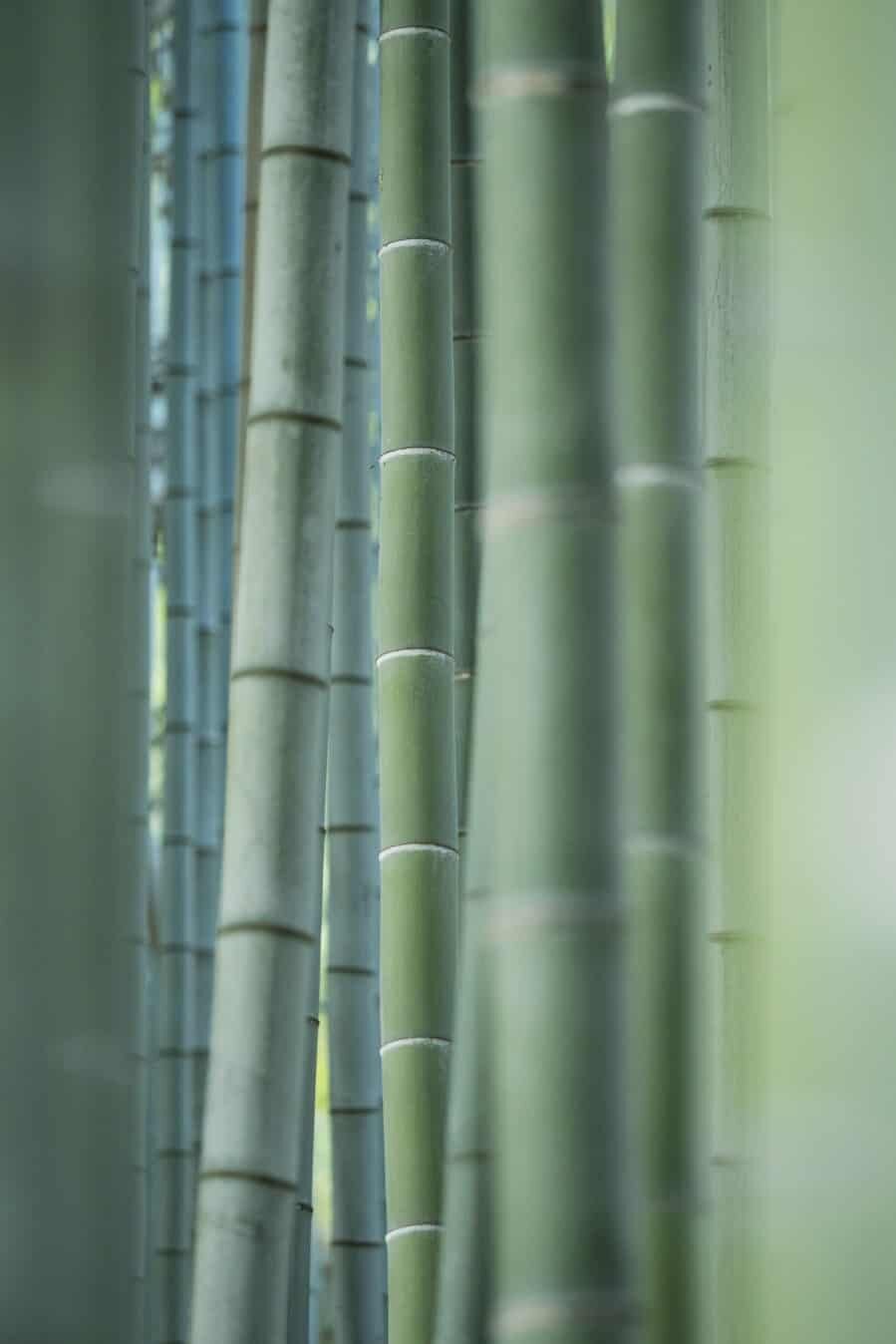
What to look for when purchasing a zoom lens?
- Decide what focal lengths you want it to cover. Are you heading away on safari and need a huge zoom to capture animals far in the distance? Or are you looking for a standard zoom that covers a 12-40mm range and is versatile for use in cities and landscapes?
- Check the maximum aperture. A wide aperture of somewhere between f/1.2-f/4 will mean your lens will perform really well in low light conditions, which is something you’ll want when travelling! My lenses are all f/2.8 or wider, meaning I can use them without a tripod even when it’s getting dark.
- Check if the lens has a constant or variable aperture. Some zoom lenses are expensive for a reason, you’ll be paying for quality and ease of use. One such quality is having a constant aperture, meaning that if it says the lens if f/2.8, it will remain at f/2.8 regardless of whether you’re shooting at 40mm or 150mm…this is a HUGE bonus. Some of the more standard zoom lenses will have a variable aperture, it’s normally written on the lens like f/3.5-f/5.6 which means that once you start zooming, you’ll find the maximum aperture is actually f/5.6 which can start to get a little tricky in low light conditions. It’s not necessarily a bad thing, it just means you’ll have to be more careful with your settings.
- Check it is weather resistant to some extent. There’s nothing worse than zooming in when it’s sprinkling rain and you discover your lens lets water in like it’s sitting in a bath.
- Lastly, check how heavy it is. You don’t want to be lugging around a 5kg monster lens if there’s a smaller, more lightweight option available with similar focal length.
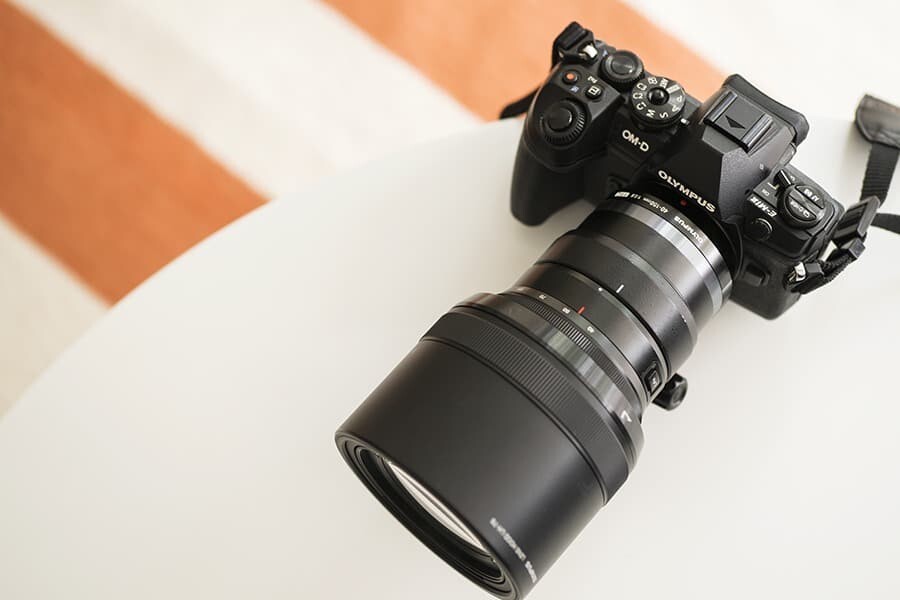
To summarise, some quick benefits of travelling with a zoom lens include –
- Compact and easier than carrying multiple prime lenses.
- Provides multiple composition possibilities
- Get close to subjects without needing to physically get too close (ie. When photographing animals )
- Alter perspectives and compress a scene to bring objects closer
- Create beautiful bokeh for portraits
- Allows you to blend in so you can capture street scenes and people photos without being noticed. *to be used appropriately!
- Great for photographing the details within a landscape
What’s your favourite lens? Let me know in the comments below!
Keen to learn more with the wandering lens.
If you’re eager to improve your photography, explore your creative talents and even perhaps work in the industry, you’ll find self-study courses and a library of eBooks and Workbooks via The Wandering Lens Store . I’ve developed online resources for photographers, creatives, dreamers, adventurers, travellers and freelancers. If that sounds like you, maybe we should connect and chat about your photography goals! These creative courses and resources bring together my 17+years of experience and lessons from working in the industry. I want to see others share their talents and get published, sell prints, find clients – to have the confidence to achieve whatever it is you want to within the field of photography. Get in touch via [email protected] if you’d like to chat about your photography!
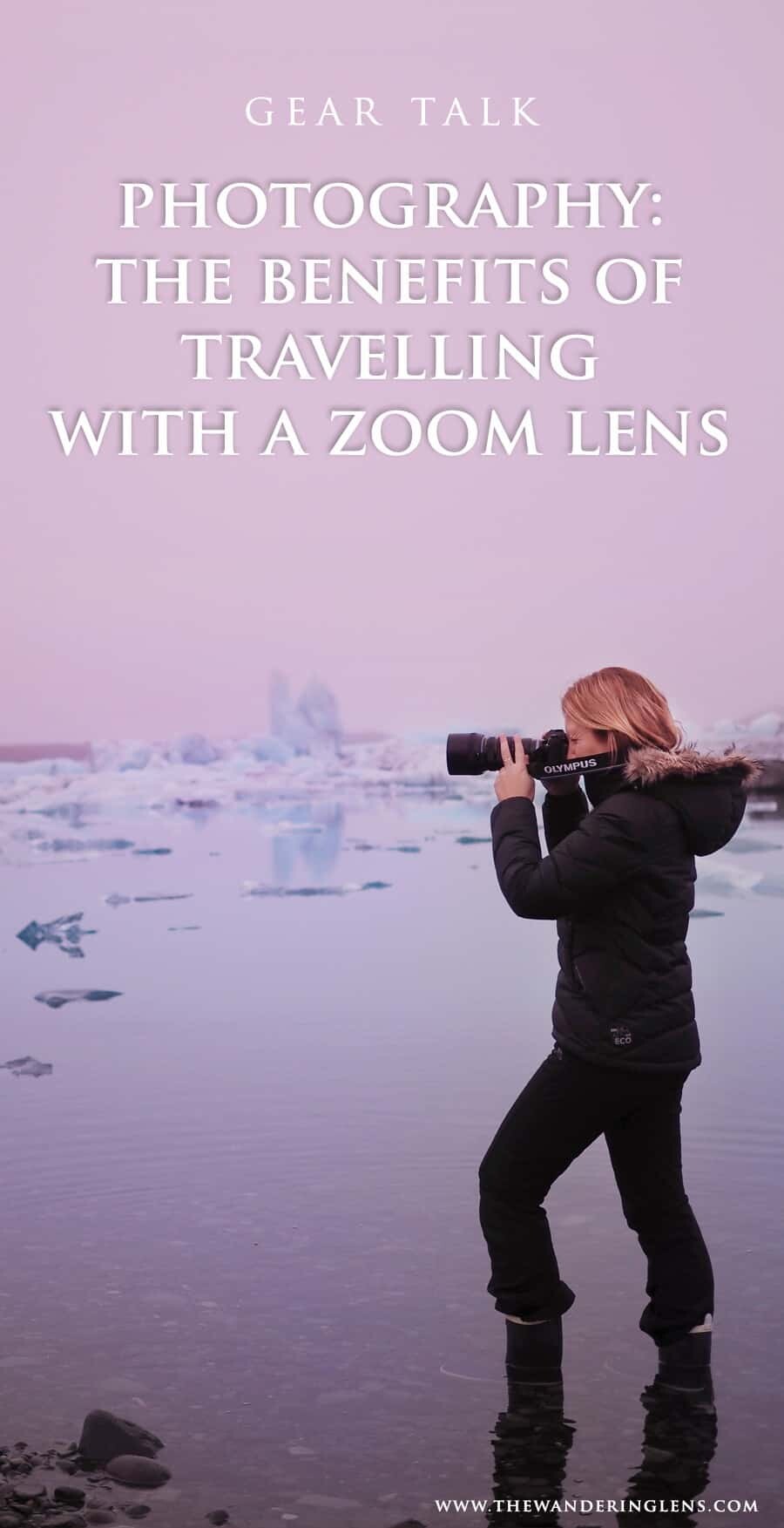
Hello! I’m the founder and photographer behind The Wandering Lens. With 17+yrs experience as a professional travel and landscape photographer, all advice found on this site is from my personal experience on the road. I hope it’s useful for your own travels and would love to hear in the comments about your trips and experiences around the world.
Enjoyed reading? Share the article!
Keep Reading...
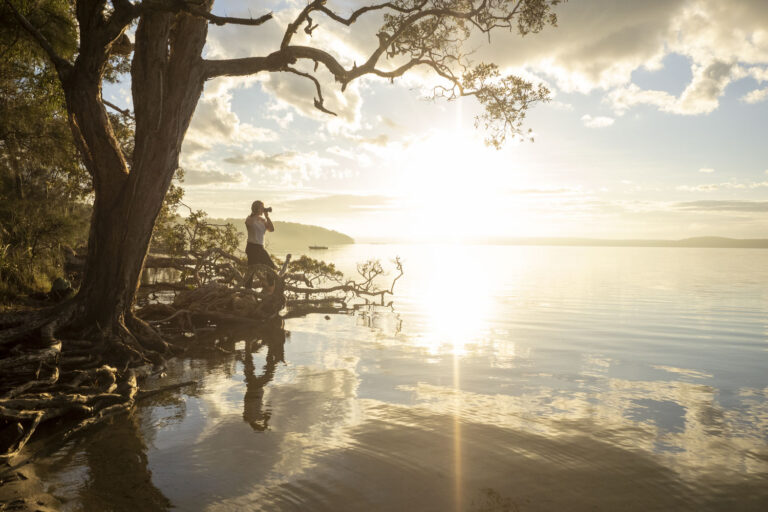
Mastering Light: A Quick Guide to Golden Hour Photography
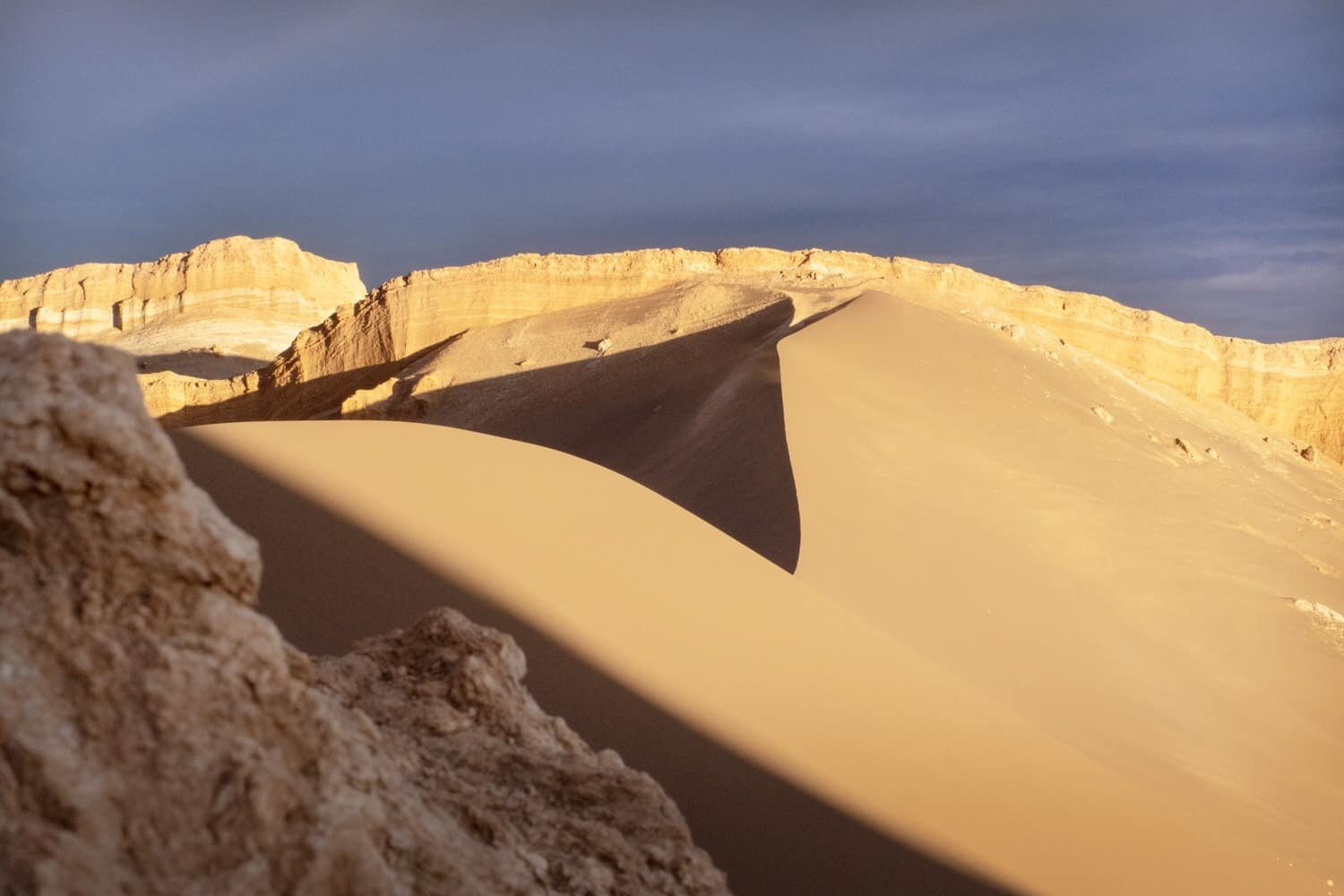
Photographing the Lunar Landscapes of Valle de la Luna, Chile
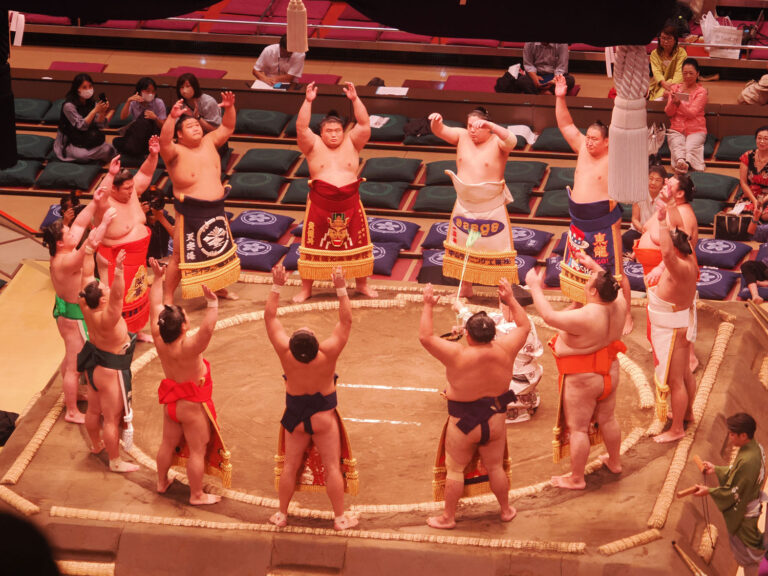
Behind the Lens – Photographing a Sumo Tournament in Tokyo
Blog comments.
April 8, 2018 at 4:12 am
Love the versatility of zoom lenses while traveling. I agree with you that primes are good for some things, but if you are looking to reduce carry on weight zooms are the way to go!
January 15, 2021 at 8:38 pm
Thanks for your tips. I use the 12-100 F4 this lens is so great. You can use it for landscape and familie shots. Sometime you take photos of a butterfly or a flower and than a shot of Bird.
Leave a Comment Cancel Comment
Looking for something….
The best travel camera for 2024: the finest choices for your adventures
The best travel cameras for your next big trip
- Best overall
- Best-looking
- Best action cam
- Best tough camera
- Best premium compact
- Best small full-frame
- Best hybrid vlogger
Best for moving subjects
- Best superzoom
How to choose
- How we test
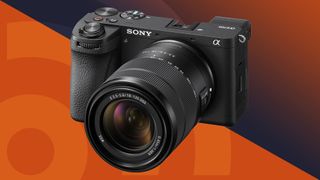
1. The list in brief 2. Best for most people 3. Best value 4. Best-looking 5. Best action 6. Best tough 7. Best premium compact 8. Best small full-frame 9. Best hybrid travel vlogger 10. Best for moving subjects 11. Best superzoom bridge 12. How to choose 13. How we test
We’re often asked about the best travel camera, but the answer depends on what you plan to do with it. Adventurous travelers might want a rugged action camera; a city break will demand something that shoots sharp and steady handheld. That’s why we’ve tested a wide range of travel cameras. In our round-up below, you’ll find everything from premium compacts to mirrorless hybrids – all ranked by our expert team.
After countless hours of testing, we think the best travel camera for most people is the OM System OM-5. Thanks to a Micro Four Thirds sensor, it’s usefully portable. It’s also weatherproof and shoots better images than a smartphone, while offering the flexibility of interchangeable lenses. That said, we know it might not be the right choice for every traveller.
We recommend reading through our whole guide, to get a full picture of the best travel cameras you can buy right now. We’ve reviewed each model in the real world, to see how well it stacks up when shooting on the move. We assess factors such as handling, image stabilization and battery life, as well as image quality and autofocus performance. By listing the positives and negatives of each option, as well as who we think it’s best for, we’ve tried to make it as simple as possible to find your ideal travel camera.
Tim is TechRadar's Cameras editor, with over 15 years in the photo video industry and most of those in the world of tech journalism, Tim has developed a deeply technical knowledge and practical experience with all things camera related. Tim notes, "different photographers will expect different things from a travel camera, but all of the options recommended here share a few key traits. Each is relatively portable, handles well while traveling and is capable of producing impressive holiday photos."
The quick list
If you don’t have time to read our full list of the best travel cameras, use the summary for a quick overview of to the top options for your needs and budget. If you find one that takes your fancy, use the links to jump to our full write-up.

The best travel camera overall
Squeezing a host of features into a compact, weatherproof body that’s compatible with a range of lenses, the OM-5 is the ideal travel camera.
Read more below

The best value travel camera
With a large 1-inch sensor and useful 15x optical zoom, the Panasonic TZ200 puts smartphone-beating performance in your pocket.
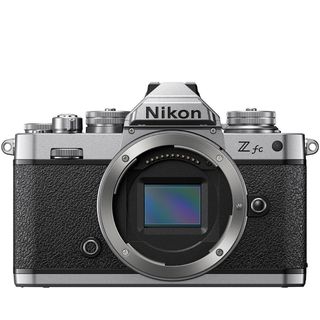
The best-looking travel camera
Don’t be fooled by its lovely retro looks: the Nikon Z fc is every bit the modern travel camera, with a useful touchscreen and top image quality.
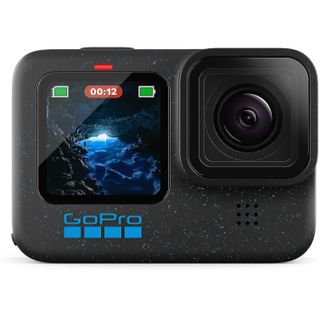
The best action camera for travel
With superlative stabilization and a useful 8:9 sensor for sharing videos to social, this is the best action camera for capturing intrepid travels.
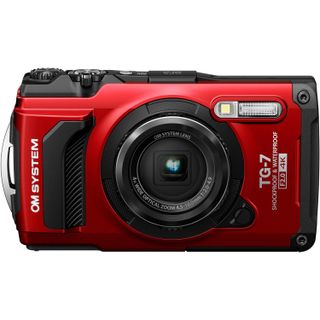
The best tough travel camera
When travels get tough, you need a camera that can keep up – which is where the rugged TG-7 comes into its own, with a hardcore build and simple interface.

The best premium compact
With a large sensor, 23mm focal length and small form factor, the X100VI is a powerful tool for street photography on your travels.
Load the next 4 products...

The best small full-frame camera
Combining a small form factor with a high-res 61MP sensor and fantastic autofocus, the Sony A7C R is the best full-frame camera for travel photography.

The best hybrid for travel vlogging
A capable sensor and automated settings, including a Vlogging mode, make the Fujifilm X-S20 an accessible tool for stills and video on the go.
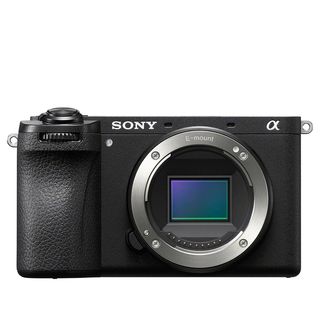
The best for moving subjects
The compact A6700 uses AI-powered autofocus to reliably snap on to animals, insects, cars and more. The Fuji X-S20 is better for video, though.
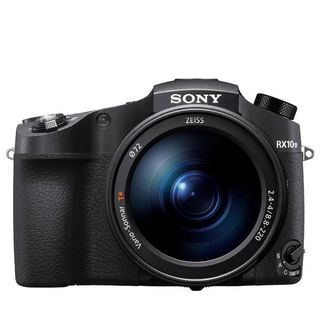
The best superzoom camera
Even with a 1-inch sensor, the Sony RX10 IV delivers sharp stills and video, with the added versatility of a generous 24-600mm zoom range.
The best travel cameras in 2024
Why you can trust TechRadar We spend hours testing every product or service we review, so you can be sure you’re buying the best. Find out more about how we test.
Below you'll find full write-ups for each of the best travel cameras in our list. We've tested each one extensively, so you can be sure that our recommendations can be trusted.
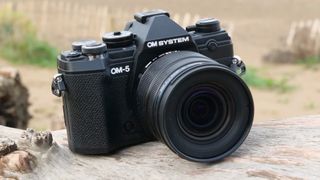
1. OM System OM-5
Our expert review:
Specifications
Reasons to buy, reasons to avoid.
✅ You want a robust travel camera: Light enough to travel with but tough enough to deal with bad weather, the OM-5 is a ruggedly dependable camera.
✅ You shoot handheld a lot: The OM-5 has excellent image stabilization for stills, meaning you can cross a tripod off your packing list.
❌ You want the best image quality: Its Micro Four Thirds sensor is decent enough, but some rivals offer more pixels and better low light performance.
❌ You have large hands: Handling is surprisingly good for a small camera, but the grip is not very deep, especially for those with bigger hands.
The OM-5 is only a relatively minor update of the Olympus OM-D E-M5 Mark III , but its combination of talents make it an ideal travel camera in our book – particularly if you want the flexibility of interchangeable lenses. It shoehorns a lot of features into a compact, weatherproof body that's compatible with a wealth of equally small lenses. Most of its skills, including excellent in-body image stabilization and computational photography modes, are also designed with travelers and adventurers in mind.
Our tests found that the OM-5 delivers excellent video and stills quality for its size, helped by a stabilization system (good for 6.5-stops of compensation) that gives you a high hit-rate of keepers. We also enjoyed the high-quality feel of the camera's dials, as well as in-camera software tricks, like Live ND and in-camera focus stacking, which are ideal for macro shots or blurring skies for an ethereal effect. Less good are the fairly average EVF resolution, 4K /30p limit for video and relative limitations of its smaller sensor, but these are all acceptable trade-offs considering this camera's size and price.
Read our in-depth OM System OM-5 review
- ^ Back to the top
The best-value travel camera
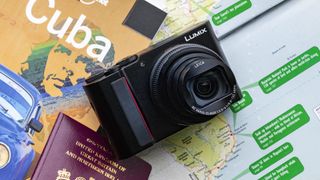
2. Panasonic Lumix ZS200 / TZ200
✅ You want an all-in-one compact: You can’t beat the TZ200 for portability, but it’s also a feature-packed option with a useful zoom range and 1.0-inch sensor.
✅ You want a large zoom range: At 15x optical zoom, the TZ200 offers the versatility to shoot all sorts of subjects on your travels.
❌ You like an ergonomic grip: The Lumix TZ200 has plenty of manual controls on the metal body, but there’s not much of a grip to get your fingers around.
❌ You want a cheap camera: Its generous feature set makes the TZ200 excellent value, but its still pretty pricey for a premium compact.
With smartphones now raising the bar for point-and-shoot photography, compact cameras have to offer something special to justify their place in your travel bag. The ZS200 / TZ200 does that with its large 1-inch sensor and versatile 15x optical zoom. It might be towards the upper end of the compact camera market, but Panasonic 's travel zoom continues to offer great value.
Its large 1in sensor produces better natural image quality than most smartphones, despite the latter's advances in multi-frame processing. Our tests found colors to be nice and punchy, with the dynamic range allowing you to recover lost shadow detail with post-processing if needed. Even at 24mm, vignetting and distortion is nicely controlled. There's also a handy built-in electronic viewfinder, which makes it easier to compose images in bright light. It's still quite pricey, but this is still the best travel zoom compact camera available right now.
Read our in-depth Panasonic Lumix ZS200 / TZ200 review
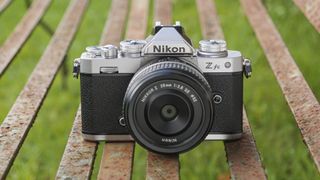
3. Nikon Z fc
✅ You care about camera design: From the retro dials to the circular viewfinder, the Nikon Z fc channels classic style to fantastic effect.
✅ You like manual exposure control: Dedicated dials for ISO, shutter speed and exposure, complemented by a lens control ring, give excellent manual control.
❌ You need a wide choice of lenses: There are only a handful of Z-series kit lenses designed for the APS-C format, limiting your options for expansion.
❌ You want a rugged camera: Although it looks like the sturdy FM2, the Z fc isn’t weather-sealed, so it’s not one to take on rainy adventures.
Travel photography is all about capturing memories and Nikon’s Z fc fully embraces the concept of nostalgia: it’s a stunning homage to the 30-year-old Nikon FM2 – complete with retro styling, dimensions and dials. Despite the throwback design, it’s a very modern camera inside, sharing many of its specs with the capable Nikon Z50. While some photographers might wish for a full-frame sensor, the Z fc’s APS-C number does a stellar job of capturing stills and 4K video, aided by reliable tracking autofocus. Our tests found that its 20.9MP sensor had an excellent handle on noise, especially under ISO 800, while dynamic range was impressive.
Its vari-angle touchscreen is also a brilliant addition, making it easy to frame travel selfies – or folding away completely for a leather-back look that lets you pretend it's the Eighties. The Nikon Z fc isn’t as sturdy as the camera that inspired it (there’s no weatherproofing, for example), but it’s still a beautifully unique camera for casual use. And with dedicated dials for ISO, shutter speed and exposure, plus a customizable lens ring, it’s also an easy one to control on the go.
Read our in-depth Nikon Z fc review

4. GoPro Hero 12 Black
✅ You want a rugged travel camera: Waterproof down to 10m, the GoPro Hero 12 Black is a great choice for capturing action-packed travels.
✅ You plan to share on social: The 8:7 aspect ratio of its sensor gives you lots of flexibility to crop footage for social, including vertical videos.
❌ You plan to shoot in low light: Its 1/1.9in sensor shoots sharp footage, but it still struggles with noise handling in lower lighting conditions.
❌ You want a hybrid for stills: While the sensor can shoot 27MP stills, you’ll get a better photography experience from a standard alternative.
If you're looking for a high resolution action camera for your travels that's as comfortable shooting smooth videos as it is crisp photos, then the GoPro Hero 12 Black tops the bill. It was an underwhelming update of the Hero 11 Black, but that's not necessarily a bad thing because that camera was already highly capable. There's the same 1/1.9in sensor with versatile 8:9 aspect ratio – you can reframe footage for different social channels without sacrificing quality, and its max resolution of 5.3K/60p beats the DJI Osmo Action 4. You can capture dramatic TimeWarps at the full 5.3K resolution, shoot photo sequences as a rapid 30fps, and pull 24.7MP stills from 5.3K video.
Design-wise, there's no change to the Hero 11 Black, the two rugged models are physically identical and come with a large Enduro battery as standard, giving more time between recharges on the road. The same interface lets you tweak the user experience, with ‘Easy’ and ‘Pro’ modes to suit your skill level. Superior Horizon Lock and HyperSmooth 5.0 smarts do a remarkable job of stabilizing handheld video. Minor updates from the Hero 11 Black are mainly for pros, including flat Log color profiles, 10-bit video, and multi-channel audio capabilities. For most people however, there's little reason to upgrade or to pick the Hero 12 Black over its predecessor which could save you a little money.
Read our in-depth hands-on GoPro Hero 12 Black review
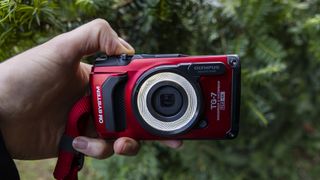
5. OM System Tough TG-7
✅ You want a hardcore camera: With a case that’s waterproof, shockproof and freezeproof, the OM System Tough TG-7 is built to take a beating.
✅ You like a simple interface: Premium features include RAW shooting and 4K video, but the camera itself is easy to operate, even in tricky conditions.
❌ You want the best image quality: Results from the 1/2.3in sensor are fine, but the TG-7 tends to overexpose, and detail is lost at the telephoto end.
❌ You like using a viewfinder: The Tough TG-7 doesn’t have a viewfinder, and the 3-inch LCD screen has limited visibility in bright sunlight.
Tough cameras like the TG-6 are freeze-proof, shockproof and waterproof and can therefore be used in scenarios that you simply wouldn't consider with your phone or expensive camera, and for that reason the TG-7 is still one of the best travel cameras you can buy. Its industrial design feels reassuringly rugged, while large buttons make it convenient to operate beneath the waves or while wearing gloves, plus its 3-inch LCD display offers decent visibility in most conditions.
We found image quality to be reasonable for a camera with a 1/2.3-inch sensor, with nice, rich colors – although there was a tendency to overexpose and blow out highlights. An equivalent zoom range of 25-100mm is fair, plus the inclusion of 4K video and raw shooting enhance flexibility. Its image quality might not match your phone for regular photos, but the TG-7 will allow you to be capturing extreme travel memories when you otherwise couldn't, plus there's a range of useful accessories such as a ring light for close up photography.
Read our in-depth OM System Tough TG-7 review
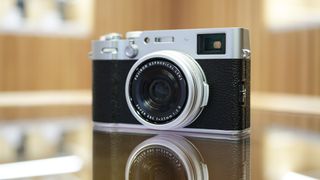
6. Fujifilm X100VI
✅ You're exploring the city: With a fixed 23mm f/2 lens, Fujifilm's best autofocus, tilt screen and hybrid viewfinder, the X100V is a fantastic choice for street photography.
✅ You want a premium camera: From its retro design to its metal body, the X100V feels well-made and looks the business.
❌ You don’t want a fixed focal length: The 23mm lens is fantastic, but some users will find it limiting, especially if you value the ability to zoom.
❌ You’re on a tight budget: The X100VI is a popular but niche premium camera, and its increased price will put it out of budget for many.
We'd class the Fujifilm X100VI as a niche premium compact camera, but the range is more popular than ever. The sixth-generation model keeps all that users have grown to love about the X100 series: sharp fixed lens, large sensor, retro design, and unique hybrid viewfinder. But it also builds on the X100V with a higher-resolution 40MP sensor and in-body image stabilization. The result is a significantly more versatile camera, for example the digital teleconverter can crop into the full image for 50mm (at 20MP) and 70mm (at 10MP) focal length looks, while stablization lets you shoot slower shutter speeds in low light.
Other key improvements over the X100V include more detailed 6K video and Fujifilm's best-ever autofocus that includes advanced subject detection for photo and video. You can rely on the X100VI as a discreet everyday camera to document the world around, especially your travels, and it comes with 20 film simulation color profiles inspired by actual Fujifilm 35mm film that you can customize with recipes to develop your own style.
Read our in-depth Fujifilm X100VI review
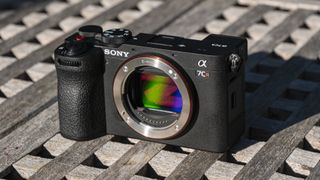
7. Sony A7C R
✅ You want the sharpest stills: With a 61MP full-frame sensor, you won’t get sharper travel snaps from any other camera in this list.
✅ You want a small, powerful camera: Despite the full-frame sensor inside, the A7C R is very compact and fits neatly in the hand.
❌ You value good handling: The small design has drawbacks, including a compromised viewfinder and absent AF joystick.
❌ You plan to use big lenses: Its compact proportions mean the Sony A7C R is mismatched with larger telephoto lenses.
By combining a small, travel-friendly form factor with a 61MP full frame sensor and fantastic autofocus, Sony has created arguably the ultimate travel camera. Successor to the Sony A7C – already one of our favorite travel photography tools – and announced alongside the A7C II , the A7C R fits nicely in the hand, while a flip screen and new dials offer welcome control.
Equipped with Sony’s top-grade autofocus and AI-powered subject tracking, the A7C R can cleverly and reliably track a broad range of subjects. You won’t find a better full frame sensor, either: borrowed from the A7R V , it captures stunning, pin-sharp stills in all conditions. Cropping potential is vast, and video footage is decent too.
There are trade-offs, though. In testing, we found that the A7C R’s compact proportions come with handling compromises, especially compared to the traditional design of the A7R V. The viewfinder feels small and fiddly, and we wish Sony had included an AF joystick. It’s also not a camera to pair with large telephoto lenses. But the real kicker is the cost: it’s significantly more expensive than the A7C II. That premium means it’s only a camera to consider if you need absolutely the best possible image quality on your travels.
Read our in-depth Sony A7C R review
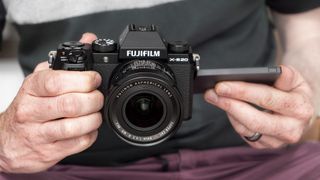
8. Fujifilm X-S20
✅ You value longevity: The X-S20 has double the battery life of the X-S10, making it a great choice for long days of travel photography.
✅ You shoot video, too: Capturing sharp 26MP stills and 6K/30p open gate video, the Fujifilm X-S20 is a true mirrorless hybrid.
❌ You need weather proofing: Build quality of the X-S20 is good, but you’re better off with the Sony A6700 if you need a weatherproof camera.
❌ You have a limited budget: Its additional features come at the cost of a steep price hike compared to the Fujifilm X-S10, which makes it a harder sell.
Channelling everything we liked about the X-S10 – including a compact, well-balanced body – the Fujifilm X-S20 cements its position as a fantastic mirrorless cameras for travel. It handles comfortably, with simplified dials making it accessible for beginners. In testing, we found new novice-friendly features – such as a dedicated Vlogging mode – also make the X-S20 a forgiving camera for touring first-timers.
The X-S20 is blessed with a proven shooting system, utilising the same 26.1MP sensor as the X-S10 and X-T4 to produce quality stills. It also eases the way for beginners with an automatic scene detection mode, which harnesses the power of Fuji’s latest X-Processor 5 to reliably choose the correct settings. From our first impressions, it works better than the automatic subject tracking, which was a little hit and miss.
With 6K/30p 4:2:2 10-bit internal video recording also on offer, plus in-body image stabilization that worked well in testing, the Fujifilm X-S20 is a solid option for content creators on the move. The lack of weather-sealing will discourage adventurous travellers, while the price tag means it isn’t one to leave in an unattended bag. But at just 26g heavier than its predecessor, the X-S20 is a very capable all-rounder for travel.
Read our in-depth Fujifilm X-S20 review

9. Sony A6700
✅ You want a capable travel hybrid: A sharp APS-C sensor, five-axis stabilization and AI autofocus make the A6700 a great all-rounder to take on the road.
✅ You like to get hands-on: A more ergonomic grip and lots of direct-access buttons make the A6700 a nice camera to handle and use.
❌ You shoot mostly video: The A6700 can record sharp video, but there’s a heavy 1.6x crop on 4K/120p slow-mo and Active SteadyShot stabilization isn’t the best.
❌ You like simple menus: The interface on the A6700 has quite a learning curve, and it can be tricky to navigate when shooting out and about.
It's a close-run thing between the Sony A6700 and the Fujifilm X-S20 above, but if you shoot a lot of moving subjects then the Sony should be your choice. Like the Fuji, it has a 26MP APS-C sensor and comes in a compact, travel-friendly form. And like the Fuji, it's a genuine hybrid, offering decent video options to go with its stills prowess. But there are some key differences.
First, the good: the A6700 has the same AI-powered chipset as the far more expensive Sony A7R V , and this helps it deliver incredible subject tracking; seriously, this camera will lock on to humans, animals, insects, cars, trains, aircraft and more, then follow them unerringly around the frame. However, its video chops aren't as impressive as those of the Fuji. 4K 120p slow-mo footage is subjected to a heavy 1.6x crop, while the five-axis stabilization doesn't work as well when filming as it does when shooting stills. The complex menu system also leaves something to be desired.
Still, it handles well, has a great battery and would make an excellent all-rounder for your next trip - so long as you're slightly more focused on images than video.
Read our in-depth Sony A6700 review
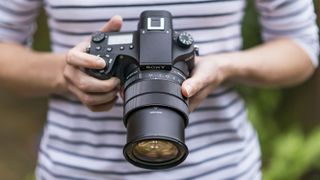
10. Sony Cyber-shot RX10 IV
✅ You like to zoom in: With a sharp, fast 24-600mm, the RX100 IV offers fantastic versatility to capture a range of subjects on your travels.
✅ You want an all-in-one option: The RX100 IV is a high-end bridge camera with a big zoom range, high-quality EVF and capable AF system.
❌ You want a small camera: While it ticks most of the boxes for travel photography, the RX100 IV is bigger and heavier than many rivals.
❌ You like a slick touchscreen: Its tilting touchscreen is a useful addition, but you can’t use it to navigate menus or swipe through images.
In terms of offering something for everybody, the RX10 IV ticks a lot of boxes. It's like having a bag full of lenses, but with the benefit of never having to change them. There's a very long zoom (going all the way from 24-600mm), while the maximum aperture is pretty wide throughout the lens.
The RX10 IV's sensor might not be as a large as the ones you'll find on a mirrorless camera or DSLR, but Sony's 20.1MP one-inch chip proved itself to be very capable in our tests. Noise was well-controlled, and you'd have no problem making an A3 print from one of its files (particularly if you shoot at under ISO 800).
You also get 24fps shooting, cracking 4K video quality and handling to rival a DSLR. The major downside? The high price – if your budget is tighter, don't forget about this camera's predecessor, the RX10 III .
Read our in-depth Sony Cyber-shot RX10 IV review
How to choose the best travel camera for you
Picking the right travel camera can be trickier than finding affordable flights. You’ll want a shooting tool that’s compact enough to conveniently carry on your travels, yet still capable of capturing sharp stills and stable video of your jet-setting adventures.
There are a few key things to keep in mind when choosing your ideal travel camera. Among the most important is size. While pocketable compacts offer convenience, the quality of your travel snaps will be boosted by the bigger sensors of larger mirrorless models.
If your adventures are likely to involve going off the beaten track, it’s worth considering a travel camera with rugged credentials. This could be one of the best action cameras , such as the GoPro Hero 11 Black – perfect if you plan to shoot quick, slick travel clips. Or it could be a sturdy compact such as the Olympic TG-6, which is one of the best waterproof cameras .
It’s also worth thinking about what subjects you might be shooting on your trip. A long zoom range will be handy on safari , while something light and fast is better for capturing street snaps on a city break. Travel compacts, such as the Panasonic Lumix ZS200 / TZ200, usually use a zoom lens to cover a range of shooting scenarios. Interchangeable lens cameras like the Fujifilm X-T30 II can similarly offer the flexibility of both worlds, but only if you’re happy to travel with extra barrels in your backpack.
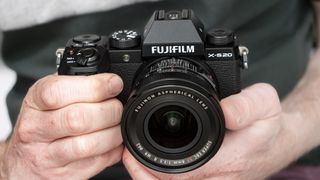
Which type of camera is best for traveling?
Travel cameras come in a range of shapes and sizes. Which style is best for you will depend on how you like to travel, what you like to shoot and how much gear you’re willing to cart around.
Travel zoom compacts such as the Panasonic Lumix ZS200 / TZ200 are pocket friendly, yet offer a broad scope for capturing a range of subjects. Thanks to generous zoom ranges, they give you the opportunity to get close to the action, or to shoot wide. The trade-off for having all of this flexibility in a compact body is generally a smaller sensor, which is less useful for shooting in low light.
If you’d like neat proportions but don’t need the versatility of a zoom lens, premium compact cameras could be worth considering. Models such as the Fujifilm X100V sacrifice zoom range in favour of larger sensors that are better at gathering light – usually a one-inch or, in the case of the X100V, an APS-C chip.
Between compacts and mirrorless cameras is where you’ll find bridge cameras. Bulkier than a standard compact, they offer more comfortable handling and a large zoom range, but without the need to carry different lenses. New bridge cameras are increasingly rare, but the Sony Cyber-shot RX10 IV remains a great example.
If you don’t mind traveling with multiple lenses, many of the best mirrorless cameras have been specifically designed with travel in mind. In the case of models like the OM System OM-5 , that means a portable, weatherproof body, useful image stabilization for shooting on the move, plus a versatile Micro Four Thirds sensor that balances size and performance. And with lots of different lenses to choose from, you can pack different optics depending on the type of trip you’re taking – or opt for a reliable all-round option.
Is a DSLR or mirrorless camera better for travel photography?
When it comes to travel photography, most photographers look for a balance between portability and performance. If this is the combination you’re after, mirrorless cameras will almost aways have the edge over their DSLR rivals. Mirrorless models are generally smaller and lighter than DSLRs, making them easier to wield and travel with.
Despite their more compact proportions, many of the best mirrorless travel cameras can also match or outclass DSLR cameras when it comes to image quality, as well as autofocus abilities and video features. This makes them versatile tools for shooting on the move, especially if you choose a model with in-body image stabilization for sharp handheld results. If you pick a mirrorless camera with an established lens mount system, you’ll also find no shortage of glass to pack for your trip.
That said, there are reasons why you might still want to consider a DSLR camera for travel. Some photographers prefer the chunkier ergonomic grip for which the DSLR format is famous, especially if they plan on shooting for hours on end. The best DSLR cameras also offer superlative battery life, which can be useful if your travel plans include days away from electricity.
Budget might also be a factor, especially if you’re concerned about taking an expensive camera on your travels. Older DSLR cameras can offer great value, as can second-hand mirrorless models. It’s also worth looking at our round-up of the best cheap cameras , which includes some options that are a good fit for travel photography.
- Read our in-depth DSLR vs Mirrorless comparison
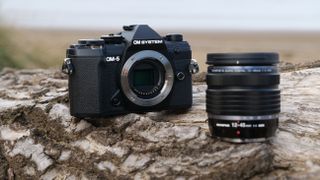
How we test travel cameras
Buying a camera these days is a big investment, and travel cameras are no different – so every camera in this guide has been tested extensively by us. For travel cameras in particular, real-world tests are the most revealing way to understand a camera's performance and character, so we focus heavily on those, along with standardized tests for factors like ISO performance.
To start with, we look at the camera's design, handling and controls to get a sense of how suitable it is for life on the road, and any particular features that might be particularly useful for globe-trotters. When we take it out on a shoot, we'll use it both handheld and on a tripod to get a sense of where its strengths lie, and test its startup speed.
When it comes to performance, we use a formatted SD card and shoot in both raw and JPEG (if available). For burst shooting tests, we dial in our regular test settings (1/250 sec, ISO 200, continuous AF) and shoot a series of frames in front of a stopwatch to see if it lives up to its claimed speeds. We'll also look at how quickly the buffers clears and repeat the test for both raw and JPEG files.

In various lighting conditions, we also test the camera's different autofocus modes (including Face and Eye AF) in single point, area and continuous modes. We also shoot a range of photos of different styles (portrait, landscape, low light, macro/close-up) in raw and JPEG to get a sense of metering and its sensor's ability to handle noise and resolve fine detail.
If the camera's raw files are supported by Adobe Camera Raw, we'll also process some test images to see how we can push areas like shadow recovery. And we'll also test its ISO performance across the whole range to get a sense of the levels we'd be happy to push the camera to.
Battery life is tested in a real-world fashion, as we use the camera over the course of the day with the screen set to the default settings. Once the battery has reached zero, we'll then count the number of shots to see how it compares to the camera's CIPA rating. Finally, we test the camera's video skills by shooting some test footage at different frame-rates and resolutions, along with its companion app.
We then take everything we've learned about the camera and factor in its price to get a sense of the value-for-money it offers, before reaching our final verdict.
Get daily insight, inspiration and deals in your inbox
Sign up for breaking news, reviews, opinion, top tech deals, and more.
Tim is the Cameras editor at TechRadar. He has enjoyed more than 15 years in the photo video industry with most of those in the world of tech journalism. During his time as Deputy Technical Editor with Amateur Photographer, as a freelancer and consequently editor at Tech Radar, Tim has developed a deeply technical knowledge and practical experience with cameras, educating others through news, reviews and features. He’s also worked in video production for Studio 44 with clients including Canon, and volunteers his spare time to consult a non-profit, diverse stories team based in Nairobi. Tim is curious, a keen creative, avid footballer and runner, and moderate flat white drinker who has lived in Kenya and believes we have much to enjoy and learn from each other.
- Mark Wilson Senior news editor
- Chris Rowlands
Voigtländer Nokton D35mm f/1.2 review: the lens Nikon should have made
Sony ZV-E10 $698 kit bundle: everything you need for videography on a budget
LPCAMM2 memory module debuts with shockingly high price tag — but fear not, things can only get better as smaller memory players jump on the bandwagon
Most Popular
- 2 World Exclusive: We tested the first 2TB microSD card and no, it's not a fake — AGI's card defies laws of physics with record-breaking storage capacity on pinkie-size surface area
- 3 I've been walking 10,000 steps a day for a year – here are five unexpected benefits I've experienced
- 4 iPhones just got a powerful new video-editing app that lets you add cool cinematic looks with ease
- 5 Nvidia RTX 5090 rumors continue to suggest this graphics card will not just be powerful, but also somehow miraculously slim
- 2 Jaw-dropping 256-core CPU will debut in 2025 as Arm partner turns heat up on AMD and Nvidia — Ampere conspicuously leaves Intel out of equation as it claims CPU leadership ahead of Epyc
- 3 Hardly any of us are using AI tools like ChatGPT, study says – here’s why
- 4 These are the best iPhone apps and games of 2024 so far, according to Apple
- 5 This hidden iPhone feature will change the way you emoji

Currently Trending:
APS-C vs full-frame – which sensor size is best?
Why are we obsessed by full-frame sensors, fujifilm x100v and x100vi alternatives best retro cameras, nikon z8 wins product of the year at the 2024 ap awards, urban life: submit your street photos to apoy 2024.
Advertisement
When you purchase through links on our site, we may earn an affiliate commission. Here’s how it works
Home » The best travel cameras for 2024

The best travel cameras for 2024
Andy Westlake rounds up our pick of the best travel cameras for trips long and short, vacations and all other adventures
Welcome to our guide to the best travel cameras and holiday cameras! Here, we are going to be running through our picks for the best small and light cameras to take away with you. A full camera setup tends to be too bulky and heavy to use on a photo trip or vacation, while a smartphone will generally be too restrictive in terms of what it can capture (and never mind the battery). A dedicated travel camera is the ideal solution.
At AP, our review team tests cameras of all types, and that includes travel cameras. DSLRs, mirrorless models and compact cameras have all passed across our testing bench, and we’ve chosen the best of the best for this guide. This doesn’t just mean the most expensive premium models – after all, travel is expensive enough without having to add a whacking great camera bill on top.
Of course, you do have to spend a bit of money to make sure you get something worth buying. So, we’ve put together a list to suit a range of budgets, including new models and older ones that have come down in price. However, every camera on here has one thing in common – it impressed our reviewing team enough to earn their recommendation.
We’ve got plenty of advice for taking better travel images here .
How to choose the best travel camera or holiday camera
So what features might be most desirable for a travel camera? Small size and light weight are a given, and we’ve assumed that most users will prefer using a zoom lens , quite probably with an extended range. This could be complemented by a couple of small primes , for shooting in low light or going out in the evening. It might also make sense to add an ultra-wideangle zoom for architecture, landscapes or interiors.
As such, where we’ve picked an interchangeable-lens camera , we’ve also provided a lens recommendation, generally one that you can buy bundled with the camera. The fixed-lens compact cameras we’ve picked generally have generous zoom ranges , with the exception of the Fujifilm X100V, which is loved by travelling street photographers for its super-sharp 35mm prime. This is one we’d recommend for city breaks rather than countryside hikes.
In general, the cameras we’ve chosen in this guide also include fully manual control , a built-in viewfinder and raw format image recording . In order to attain a certain level of image quality, they also use sensors of the 1-inch type or larger . The one exception is the Olympus Tough TG-6, which we have chosen as the best bet for a waterproof camera . Going to be spending most of your time snorkelling on the beach? That one is your best bet.
Read on for our choice of the best travel cameras and holiday cameras that are available right now, including both high-end pocket cameras and lightweight mirrorless models teamed up with versatile zoom lenses.
Where to find the best travel and vacation cameras:
- Best waterproof travel camera: Olympus Tough TG-6 – check best price
- Best fixed-lens compact for travel: Fujifilm X100V – check best price
- Best zoom compact for travel: Panasonic LX100 II – check best price
- Best point and shoot for travel: Panasonic Lumix TZ200 / ZS200 – check best price
- Sony RX100 VII – check best price
- Best all-in-one travel camera: Sony RX10 IV – check for best price
- Best DSLR for travel: Nikon D5600 – check best price
- Best travel camera for enthusiasts: Fujifilm X-S10 – check best price
- Olympus OM-D E-M5 Mark III – check best price
- Nikon Z 5 – check best price
The best travel cameras and vacation cameras: our full list
Olympus tough tg-6 – $489 / £399.

Olympus Tough TG-6 (Red) Lego for scale. Photo Joshua Waller
At a glance
- 25-100mm f/2-4.9 lens
- 12MP 1/2.3in sensor
- ISO 100-12,800
- 20fps continuous shooting
- 3in, 1.04m-dot screen
The Olympus Tough TG-6 is different from the other cameras included in this round-up, as it employs a relatively small sensor, which means it won’t give anywhere near the same image quality. It also does without a viewfinder, relying solely on a fixed rear screen instead. But it makes our list simply because it’s the best rugged camera you can buy right now.
Key to its attraction is its sheer robustness. The TG-6 is waterproof to 15m, shockproof to a drop from 2.4m, freezeproof to -10°C, and crushproof . So you can use it without any worries on the beach or in the sea. It also boasts impressive close-up capability and an extensive range of underwater modes, plus an extensive range of lighting and lens accessories.
For outdoor adventurers, it also includes a suite of environmental sensors that allow you to keep track of your travels, including GPS with a compass, a thermometer and an accelerometer.
Read our full review of the Olympus Tough TG-6 .
What we like:
- Supremely rugged build
- Has optical zoom (many tough compacts don’t)
- Useful environmental features
What we don’t like:
- Small sensor
- No viewfinder

Jellyfish, taken with the Olympus Tough TG-6, photo Joshua Waller
Take a look at other waterproof and underwater camera options here: Top 12 Best Waterproof and Underwater Cameras
Fujifilm X100V – $1,399 / £1,339
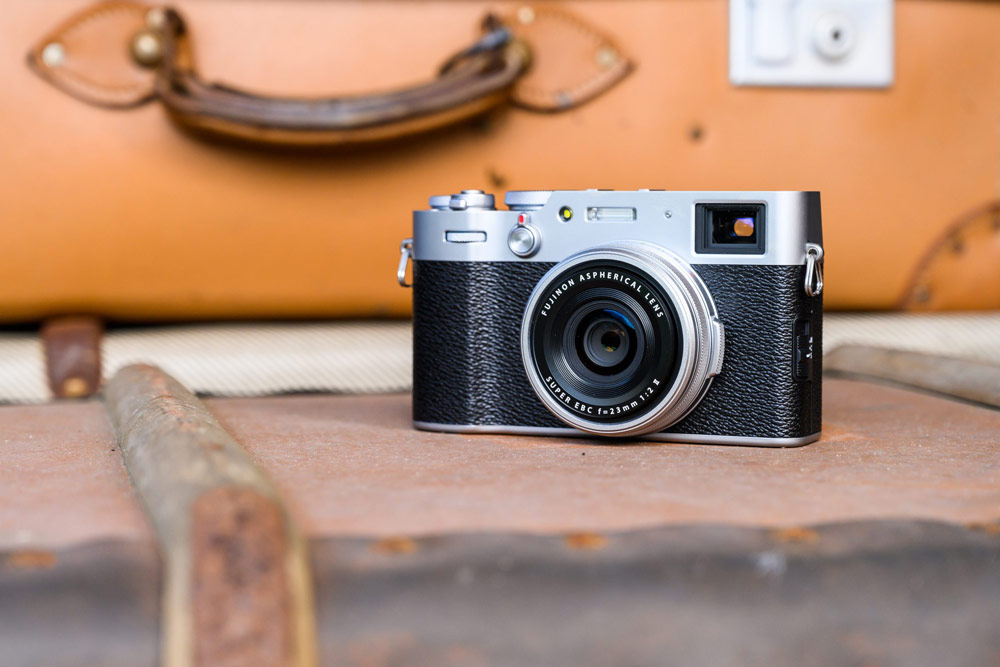
The Fujifilm X100V is a premium compact camera beloved of street photographers.
At a glance:
- 35mm equivalent f/2 lens
- 26.1MP APS-C X-Trans CMOS 4 sensor
- ISO 80-51,200 (extended)
- 11fps continuous shooting
- Hybrid optical/electronic viewfinder
- 3.2in, 1.62m-dot tilting touchscreen
Among all the cameras covered in this article, the Fujifilm X100V is unique, as it’s the only one with a fixed, single-focal-length lens . Usually for travel we presume photographers will prefer a zoom, ideally with an extended range to cover a broad array of subjects. But the X100V is different.
With its APS-C sensor, fixed 35mm equivalent lens, and classic rangefinder-like styling, it embraces a different way of shooting. It’s all about working with a fixed angle of view, and ‘zooming with your feet’ to find your pictures. It’s not for everyone, but for some photographers, it’ll be perfect.
While the X100V looks very much like the previous four models in the X100 series, it brings some significant improvements. Its redesigned lens is sharper, especially at close focus distances, and it gains a tilting rear screen that’s great for discreet, unobtrusive shooting.
Thankfully these upgrades don’t come at the detriment of the camera’s other major attractions, which include analogue dials for shutter speed, ISO, aperture and exposure compensation, and Fujifilm’s unique hybrid viewfinder that gives a choice of optical or electronic viewing.
Despite its old-fashioned good looks, the X100V is packed full of up-to-date features . It’s capable of 11fps shooting, 4K video recording, and face- and eye-detection autofocus. It also benefits from Fujifilm’s superb colour rendition, with a full array of Film Simulation modes on board to provide a variety of different looks.
And for those who really can’t do without a few different lenses, optional wideangle and teleconverters are available, giving 28mm and 50mm equivalent views.
Read our full review of the Fujifilm X100V.
- Sublime image quality
- Super-sharp lens
- Has nailed the street photography feel
- Expensive for a compact
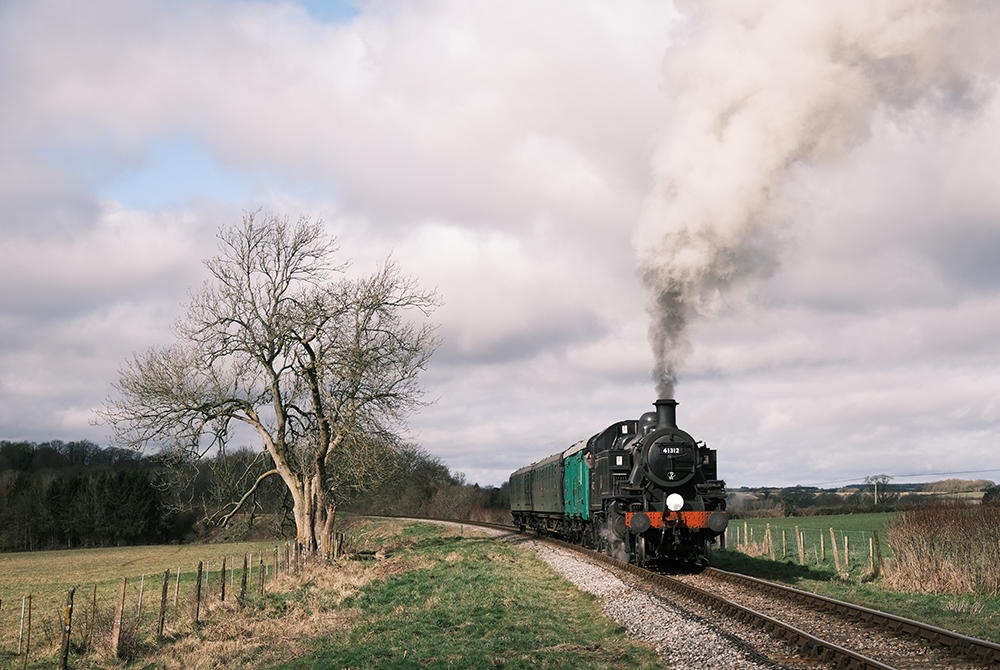
Image: Michael Topham
Panasonic LX100 II – $849 / £859

The Panasonic Lumix LX100 II
- 24-75mm equivalent f/1.7-2.8 lens
- 17MP Four Thirds sensor
- ISO 100-25,600 (extended)
- 11fps shooting
- 2.76m-dot EVF
- 3in, 1.24m-dot touchscreen
If you love the idea of an X100-like camera, but can’t live without a zoom, then the Panasonic Lumix LX100 II might just be for you. It boasts a similar array of external controls for shutter speed, aperture and exposure compensation, and incorporates a corner-mounted 2.76m-dot electronic viewfinder. But it also includes a 24-75mm equivalent optically stabilised zoom lens with an unusually fast f/1.7-2.8 aperture. This is particularly impressive given that the camera employs a relatively large Four Thirds type sensor.
One unique feature of the LX100 II lies with the way that it uses its sensor. It employs a multi-aspect ratio design that, at the flick of a switch on the lens barrel, can toggle between 4:3, 3:2 and 16:9 settings , all with the same diagonal angle of view, and therefore progressively wider horizontal views. There’s also a 1:1 option for those who enjoy shooting square-format images.
While the LX100 II is very much designed for stills shooters, it also offers 4K video recording , although with a 1.25x crop. Panasonic’s various 4K Photo modes are on board too, in effect shooting 8MP JPEGs at 30fps. Wi-Fi and Bluetooth are built-in for connecting to your smartphone.
The real attraction of the LX100 II, though, lies in just how pleasing it is to shoot with, thanks to its robust metal build and engaging control layout. It also delivers fine image quality. For enthusiast photographers who’d like a zoom compact camera that offers lots of manual control and creative potential, there’s nothing else quite like it.
Read our full review of the Panasonic Lumix LX100 II .
- Clever multi-aspect sensor
- Robust metal body
- Fast f/1.7 lens for low light
- Somewhat restricted zoom range
- Quite bulky for a camera of this type
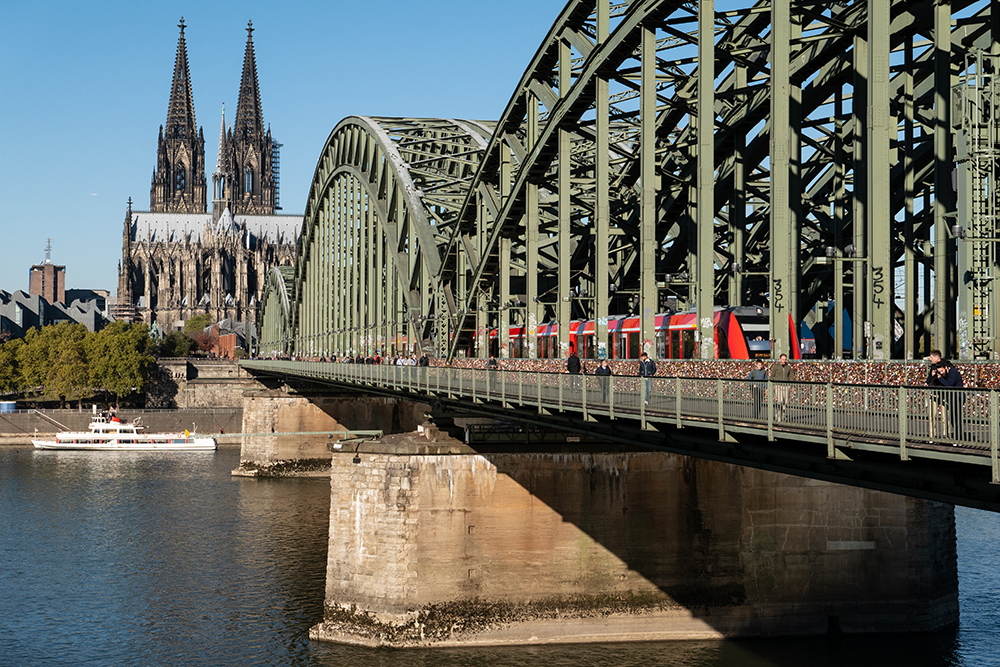
Panasonic Lumix TZ200 / ZS200 – $697 / £679
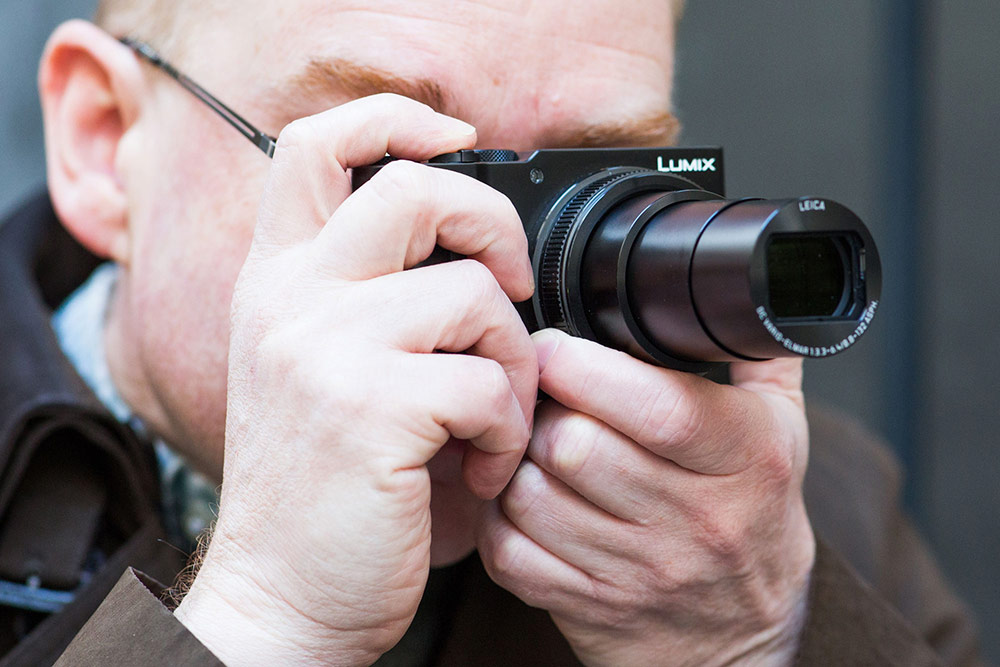
The Panasonic Lumix TZ200 is portable and agile, but boasts a hefty zoom range.
- 24-360mm equivalent f/3.3-6.4 lens
- 20.1MP 1in sensor
- ISO 80-25,600 (extended)
- 10fps continuous shooting
- 2.33m-dot viewfinder
Panasonic originally invented the long-lens, pocket-sized ‘travel zoom’ camera, and the TZ200 (or ZS200 in the US) is the ultimate expression of this concept. Like its predecessor the TZ100, it adds a 20MP 1-inch sensor into the mix, to provide considerably improved image quality compared to its cheaper siblings with smaller sensors, such as the TZ95.
But it improves on the TZ100 with a longer 24-360mm equivalent zoom (compared to 25-250mm) and a larger, higher-resolution electronic viewfinder, yet without noticeably increasing in size. For those who can’t afford the TZ200, the TZ100 remains an attractive proposition for £389.
In contrast to its sibling the LX100 II, the TZ200 is very much a point-and-shoot at heart. But it still offers lots of manual control, including a full set of exposure modes and raw format recording. It’s capable of shooting at 10 frames per second, or 7fps with live view between frames. A vast array of features is available for those who’d like to experiment further, including panoramic, multi-exposure, intervalometer and even stop-motion animation modes.
As usual, Panasonic has included 4K video recording, along with its unique 4K Photo mode that allows 8MP JPEGs to be captured at 30fps.
Crucially, the TZ200 gives attractive images, particularly in bright, sunny conditions. It’s also more usable than you might expect in low light, as while the lens’s aperture isn’t especially large, the optical image stabilisation is extremely effective. It’s a great choice for when you just want to carry a pocket point-and-shoot camera but not skimp on zoom range.
- Huge zoom in a tiny body
- Clever 4K Photo modes
- Effective optical stabilisation
- Pricier than TZ100
- Lens aperture tops out at f/3.3

Sony RX100 VII – $1,298 / £1,049

The RX100 VII benefits from a pop-up viewfinder.
- 24-200mm equivalent f/2.8-4.5 lens
- 20MP 1in sensor
- 2.36m-dot pop-up EVF
- 3in, 921k-dot tilting touchscreen
Sony’s RX100-series compact cameras are famed for the way they fit an awful lot of technology into a small, pocketable package. The latest model in the range exemplifies this, with a 24-200mm equivalent f/2.8-4.5 zoom, a 20MP 1-inch stacked CMOS sensor, a pop-up electronic viewfinder and a tilting rear screen, all in a body that’ll slip neatly into a jacket pocket.
What’s more, it’ll shoot at 20 frames per second and record 4K video. Compared to its predecessor, it gains an upgraded sensor that enables Sony’s AI-based tracking autofocus, along with a socket for an external microphone and a few interface improvements. Otherwise, the older RX100 VI offers most of the same features for a slightly more affordable £849.
With 357 phase-detection AF points covering 68% of the frame and Sony’s Real-time Eye AF and Real-time Tracking on board, the RX100 VII has the most sophisticated autofocus of any compact camera . Set it to continuous focus and tracking, and you can almost forget about having to move the AF area or change focus modes ever again. This is very welcome, as in many respects the camera’s ambitious feature set has rather outgrown its simple control layout.
One area where the RX100 VII excels lies with composing your images, thanks its large pop-up viewfinder and tilting rear screen. The lens is a strong performer too, especially when stopped down. Crucially, the camera delivers attractive images which are a noticeable improvement over older Sony models in terms of colour rendition.
- Class-leading autofocus
- Pocketable form factor
- Great viewfinder and screen
- Still very pricey
- RX100 VI will do most of the same stuff for less money
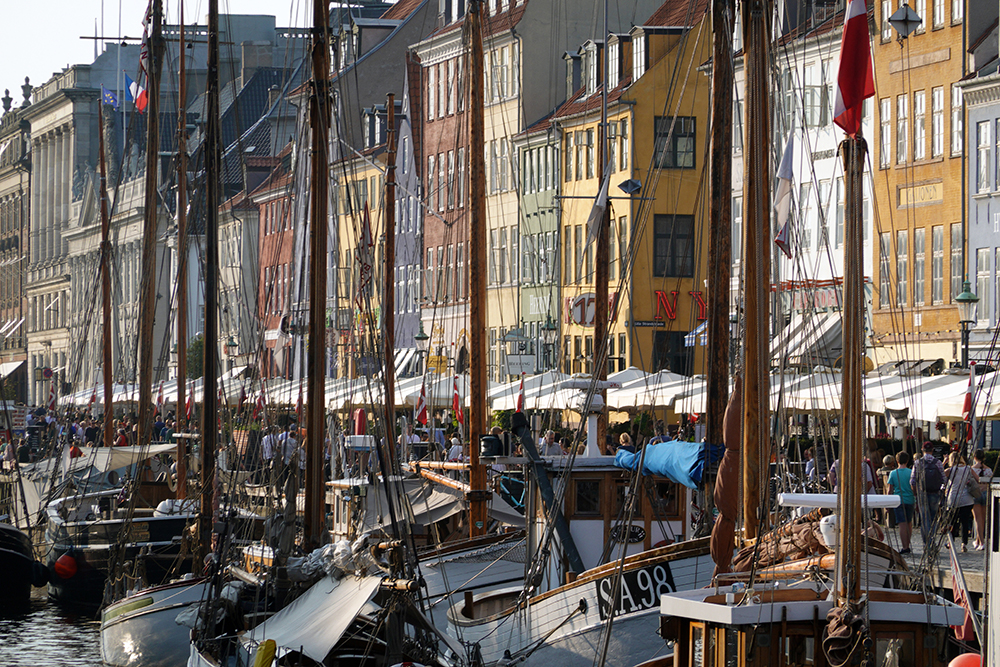
Sony RX10 IV – $1,698 / £1,499
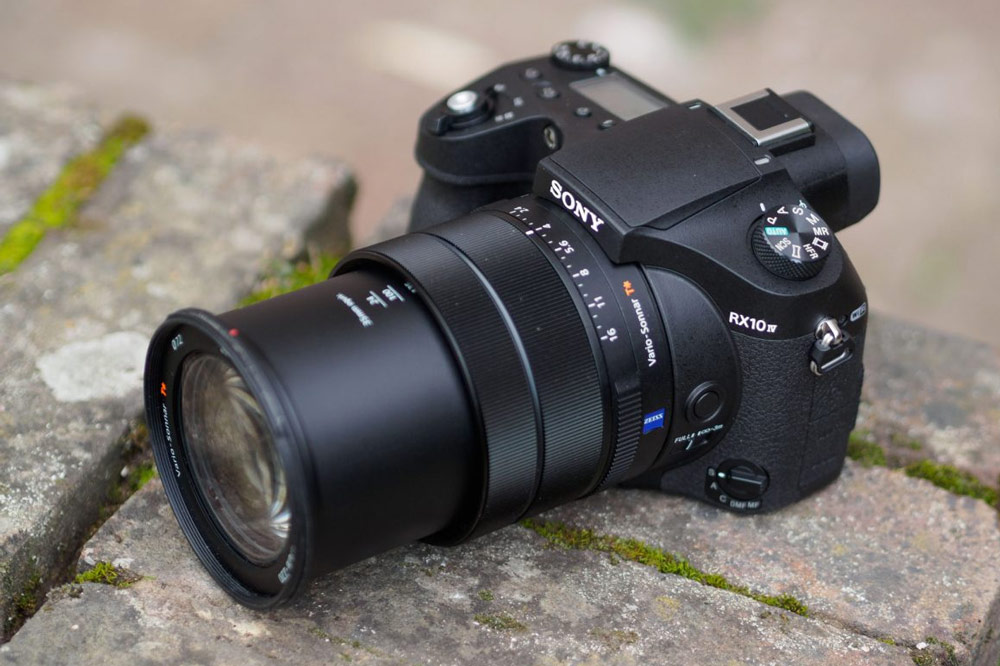
Sony Cyber-shot RX10 IV. Photo credit: Andy Westlake.
- 24-600mm equivalent f/2.4-4 lens
- 24fps continuous shooting
- 2.35m-dot viewfinder
- 3in, 1.44m-dot tilting touchcreen
For photographers who’d like an all-in-one camera with a long zoom lens , but who are prepared to carry something the size of a DSLR, there’s nothing else quite like the Sony RX10 IV .
Its 24-600mm equivalent optically stabilised lens offers immense versatility and reach, yet still boasts a usefully fast f/2.4-4 aperture . Meanwhile its 20MP 1in stacked CMOS sensor provides a combination of fine image quality and breathtaking speed. The camera also incorporates Sony’s sophisticated autofocus systems, including eye AF for both humans and animals.
The RX10 IV handles well too, with a large, comfortable handgrip. Three rings arranged around the lens barrel control zoom, focus and aperture, and there’s a dedicated exposure compensation dial perfectly placed for operation by your thumb. Focus area selection is handled using either the touchscreen or the rear d-pad. The viewfinder is decently large and gives an accurate preview, while the screen tilts for low-angle shooting.
To fully understand the RX10 IV’s attraction, though, we need to consider how it compares to mirrorless or DSLR alternatives. Quite simply, none can match its zoom range without changing lenses . What’s more, few other cameras get close to its ability to shoot at 24 frames per second with continuous autofocus and a vast 110-frame raw buffer.
The silent electronic shutter provides speeds as fast as 1/32,000sec while minimising any risk of subject distortion. Bluetooth and Wi-Fi provide smartphone connectivity, and as the icing on the cake, it’ll record 4K video. It’s without doubt the best bridge camera that’s ever been made.
Read our original review of the Sony RX10 IV
- Incredible built-in zoom range
- Fast burst and big buffer
- Comfortable, well-engineered handling
- Very expensive for a fixed lens
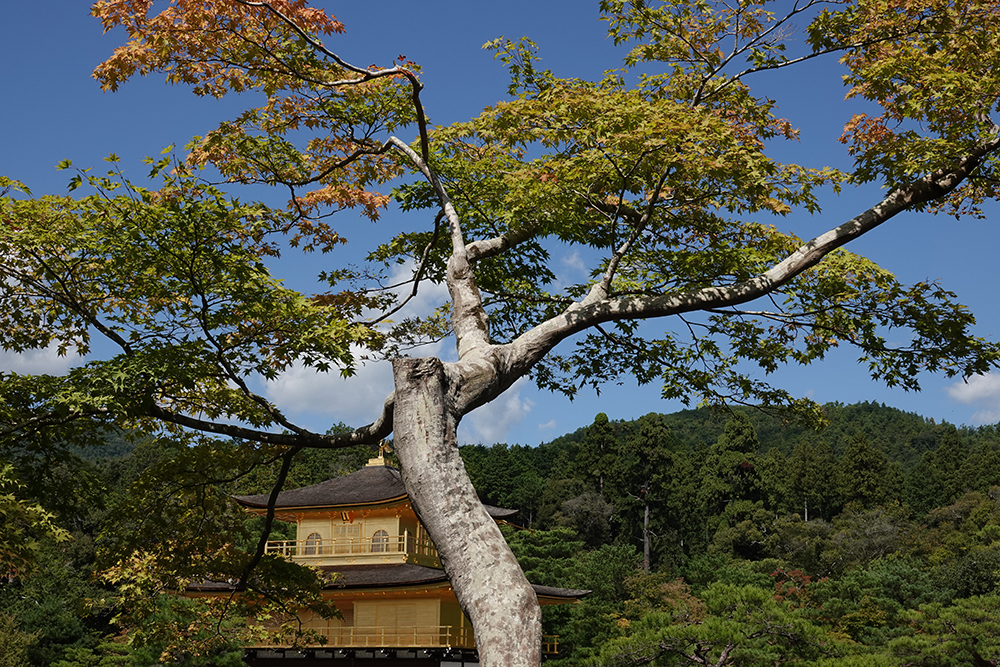
Nikon D5600 + 18-140mm f/3.5-5.6 lens – $969 / £749
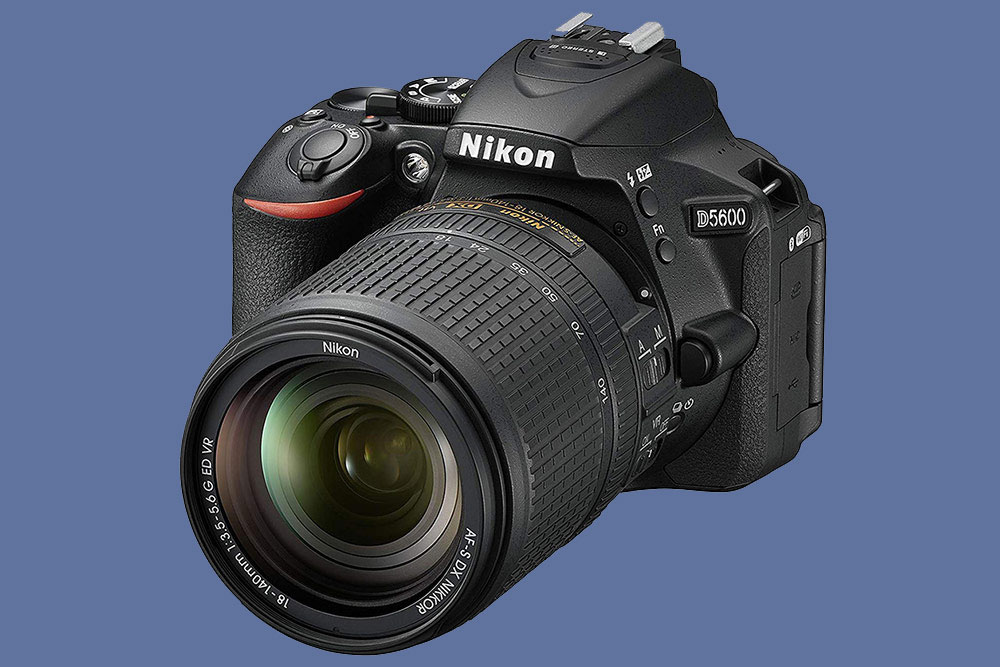
The 18-140mm lens transforms the D5600 into a travel photography powerhouse.
- 24.2MP APS-C sensor
- ISO 100-25,600
- 5fps continuous shooting
- Optical pentamirror viewfinder
- 3.2in, 1.4m-dot fully articulated touchscreen
Some photographers still prefer a traditional DSLR with an optical viewfinder, and Nikon’s D5600 provides a solid specification in a portable package. What’s more, it can be bought in a kit with a versatile 18-140mm kit zoom, offering a 27-210mm equivalent range, for just £749. As the icing on the cake, Nikon’s SnapBridge connectivity can transfer all your pictures automatically to your smartphone , making sharing your adventures a breeze.
In terms of key features, the Nikon D5600 boasts a reasonably solid specification. Its 24.2MP sensor goes up to ISO 25,600 and supports continuous shooting at 5fps. Autofocus employs a 39-point phase-detection system covering the central region of the frame, while metering is handled by a 2,016-pixel RGB sensor.
One area where the D5600 shows its age, though, is with regards to video recording, which is Full HD only, rather than 4K. Recent mirrorless models undoubtedly offer more, but on the other hand, they can’t match the D5600’s impressive 820-shot battery life.
In general the D5600 delivers attractive images, with warm, saturated colours and plenty of detail. It handles nicely too, with the responsive touchscreen making up for a relatively simple set of external controls. Those who’d like to add extra lenses are well served by Nikon’s sizeable F-mount range , including the affordable AF-P DX-Nikkor 10-20mm f/4.5-5.6G VR wideangle zoom and the AF-S DX-Nikkor 35mm f/1.8 G. The latter would nicely complement the zoom for low-light shooting. See our guide to the best Nikon F-mount lenses for more ideas.
Read our original review of the Nikon D5600
- Solid DSLR handling
- Good connectivity features
- Well-priced
- Price may go up as it gets harder to find
- Middling video spec

Fujifilm X-S10 + 16-80mm f/4 lens – $1698 / £1,399
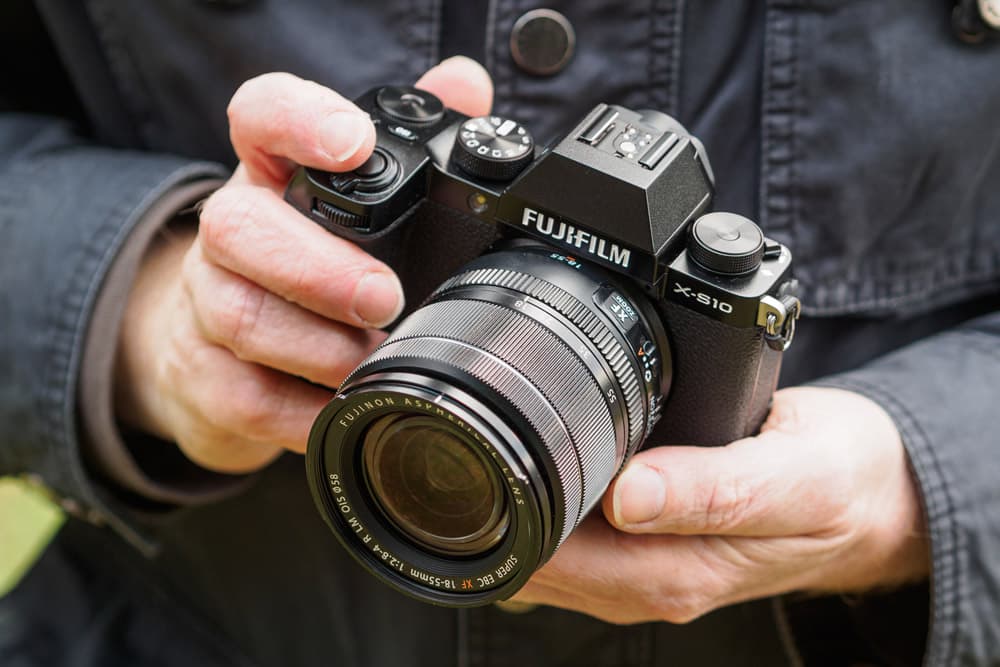
Fujifilm X-S10 in hand, Photo: Andy Westlake
- 26.1MP APS-C X-Trans CMOS sensor
- 2.36m-dot viewfinder
- 3in, 1.04m-dot fully articulated touchscreen
For enthusiast photographers who’d like a small, lightweight camera that handles well and offers excellent image quality , the Fujifilm X-S10 is extremely appealing. Styled to look and work very much like a shrunken DSLR, it offers most of the features of the firm’s flagship X-T4 in a considerably smaller body.
It comes in kits with various lenses, with prices starting from just below £1,000 for the XC 15-45mm power zoom. We’ve picked the most versatile kit zoom option, the XF 16-80mm F4, which provides a 24-120mm equivalent range.
Based around Fujifilm’s unique 26MP X-Trans CMOS sensor, the X-S10 delivers the firm’s signature attractive JPEG colour rendition. It even has a dedicated dial to select between the various Film Simulation modes, which provide an interesting range of different looks. Other highlights include 5-axis in-body stabilisation that works with every lens, and a fully articulated screen for shooting at unusual angles. When it comes to video, 4K recording is available at up to 30 frames per second.
With its prominent handgrip, twin control dials and joystick for positioning the focus area, the X-S10 provides the kind of handling that should satisfy experienced photographers. Fujifilm also makes the best available range of lenses for the APS-C format, including a nice set of compact primes.
What’s more, the major third-party lens makers have also recently started to support the firm’s X mount, with some interesting optics now available from Samyang, Sigma, and Tamron . This makes the X-S10 a great choice for existing DSLR users looking for a smaller camera.
A newer model, the Fujifilm X-S20 has recently been released and our review team found that when choosing between both models it depends if you’re planning on doing video content, particularly travel vlogging , ‘If you already have the X-S10 and are primarily a stills photographer, then the X-S20 may be overkill for you, but for the budding or experienced videographer, vlogger, and live streamer, the X-S20 hits it out of the park, with a cracking set of video features that really takes it to the next level.’
Read our original review of the Fujifilm X-S10 and how it compares to the newer Fujifilm X-S20 .
- Eye-catching images straight out of camera
- Excellent X-mount lenses
- Effective stabilisation
- Still quite pricey
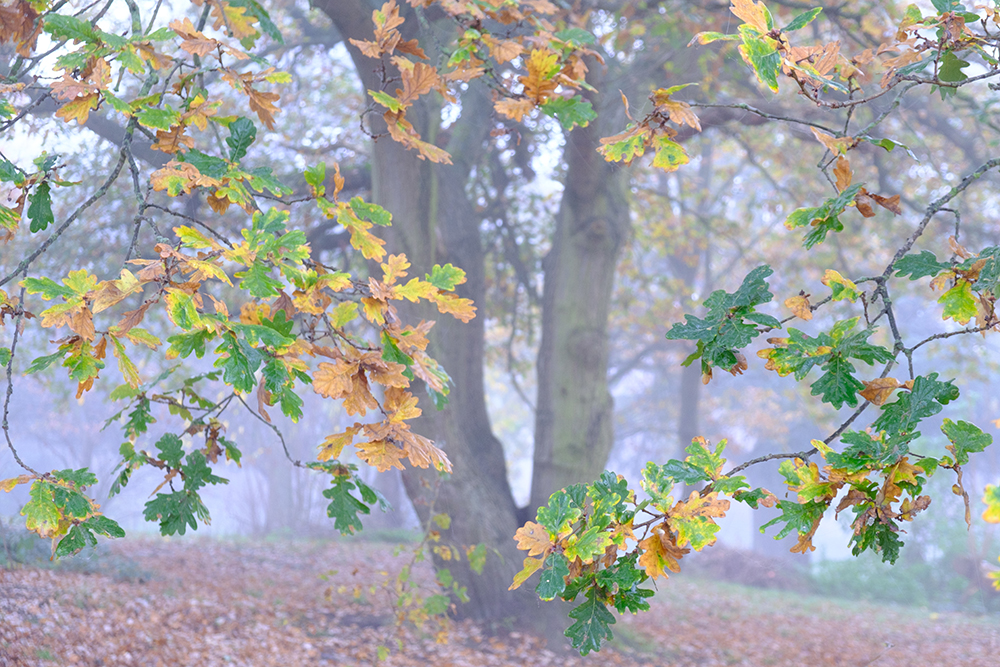
Olympus OM-D E-M5 Mark III + 14-150mm lens – $1,498 / £1,299

The Olympus OM-D E-M5 Mark III is one of the best Micro Four Thirds cameras you can buy.
- 20.4MP Four Thirds sensor
- ISO 64-25,600 (extended)
- 3in,1.04m-dot fully articulated touchscreen
Olympus cameras have traditionally offered high performance in a compact form factor, and the E-M5 series delivers on this principle particularly well. Like its predecessors, the Mark III is unique in being extremely small and lightweight, while still having a fully weather-sealed body and a good set of external controls. What’s more, you don’t have to spend a huge amount of money to get a matching sealed lens.
Buy it in a kit with the 14-150mm f/4-5.6 II, and you get an extremely useful 28-300mm equivalent lens that’s also dust- and splashproof. If you’re prepared to spend a bit extra, there’s even a 12-200mm superzoom that offers a massive 24-400mm equivalent range. Despite its small size, the E-M5 III doesn’t skimp on features.
Its 20MP sensor includes on-chip phase detection that provides 121 focus points spread across the entire image area. You get 10 frames per second shooting, a decently large viewfinder, and a fully articulated screen. As usual from Olympus, the camera also produces very attractive JPEG images , with well-judged exposure and white balance that complement the firm’s signature punchy colour reproduction.
Micro Four Thirds models inevitably give more visible image noise at high ISOs, but this can often be offset by the superb 5-axis in-body image stabilisation, as it allows you to shoot handheld at remarkably slow shutter speeds. There’s also a good range of affordable f/1.8 prime lenses available for low-light shooting that’ll take up next to no space in your bag. There is also a good choice of lenses .
Read our original review of the Olympus OM-D E-M5 Mark III
- Exceptional stabilisation
- Loads of lenses available
- Weatherproof body
- Unavoidably small sensor
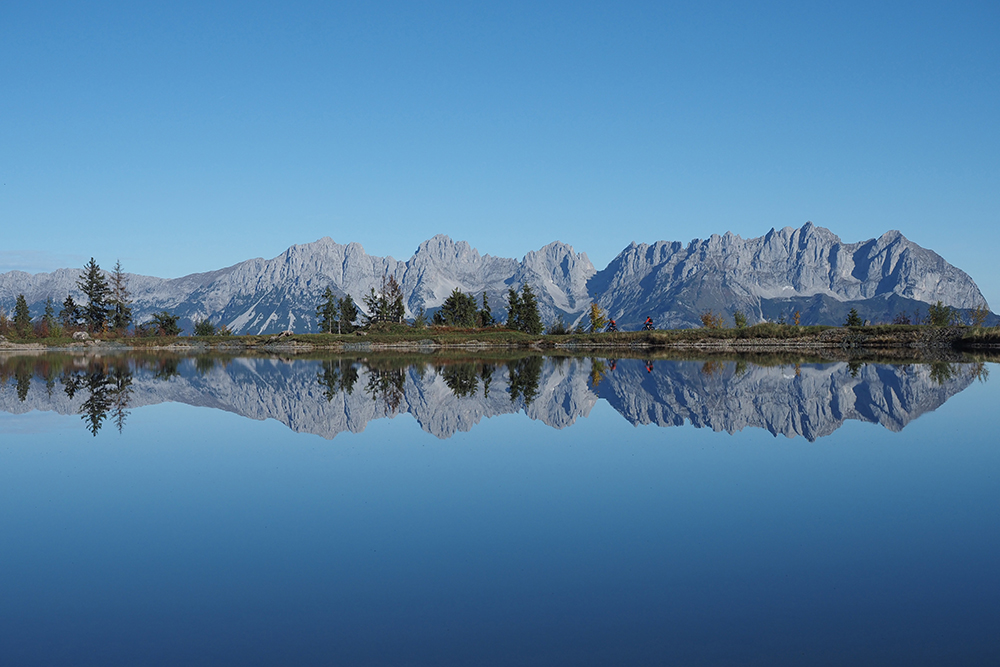
Nikon Z 5 + 24-200mm f/4-6.3 lens – $2,193 / £2,029
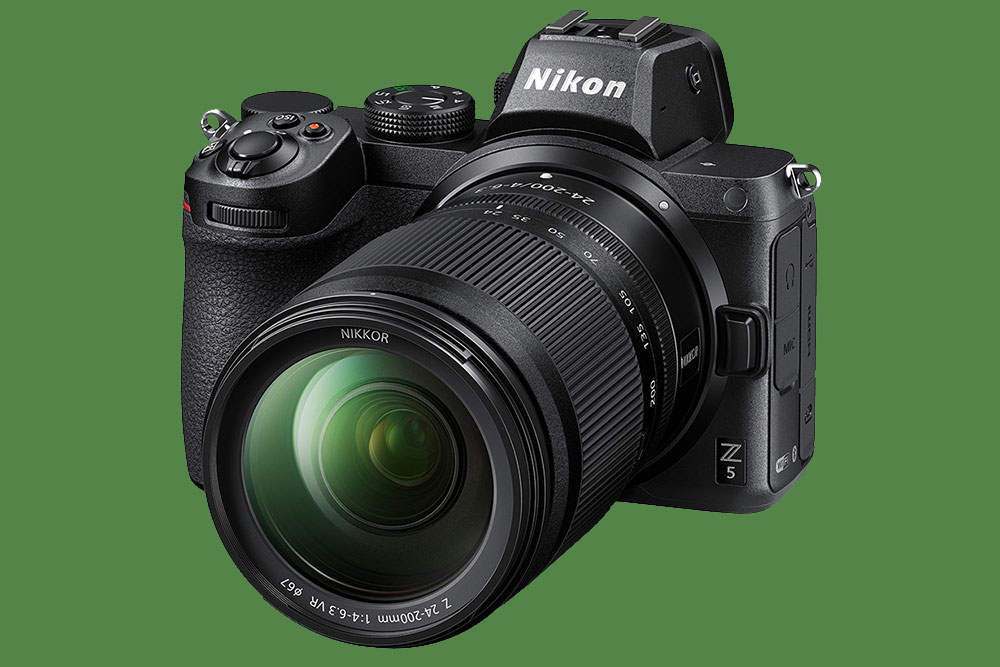
The Nikon Z 5 is the only full-frame camera on our list.
- 24.3MP full-frame sensor
- ISO 160-51,200
- 4.5fps continuous shooting
- 3.69m-dot viewfinder
- 3.2in, 1.04m-dot tilting touchscreen
If you really can’t do without full frame, the latest mirrorless models are ideal for travel , as they’re smaller and lighter than their DSLR counterparts. It’s also possible to get all-in-one superzoom lenses for them that deliver very creditable results. We’ve chosen the Nikon Z 5 , as it’s available in a kit with the firm’s Z Nikkor 24-200mm f/4-6.3 VR for a decent discount over buying the two separately.
The lens has a slightly shorter zoom range than its Canon and Sony counterparts, but provides a welcome weight reduction in return, of about 200g. While the Z 5 counts as Nikon’s ‘entry-level’ full-frame mirrorless body, it doesn’t give up a huge amount compared to the more expensive Nikon Z 6 .
Its 24MP sensor resolves just as much detail in good light, and while it falls behind in terms of noise performance at the highest sensitivities, it’s still perfectly usable at ISO 12,800. However, its maximum shooting speed of 4.5fps looks rather pedestrian by today’s standards, meaning it’s not the best choice for fast action or wildlife. It’s also only able to record 4K video with a significant 1.7x crop.
In other respects, though, the Z 5 maintains most of what makes Nikon’s mirrorless cameras so attractive. The body may be small, but it has plenty of external controls, along with a lovely large viewfinder and a tilting touchscreen . Dual SD card slots offer the option of backing up your images for peace of mind, while in-body IS means you can often do without a tripod. A range of fine fast primes is also available for low-light shooting.
Read our original review of the Nikon Z 5 here
- Satisfying controls and handling
- Does well in low light
- Gorgeous full-frame images
- Pedestrian burst rate
- Vicious crop into 4K video
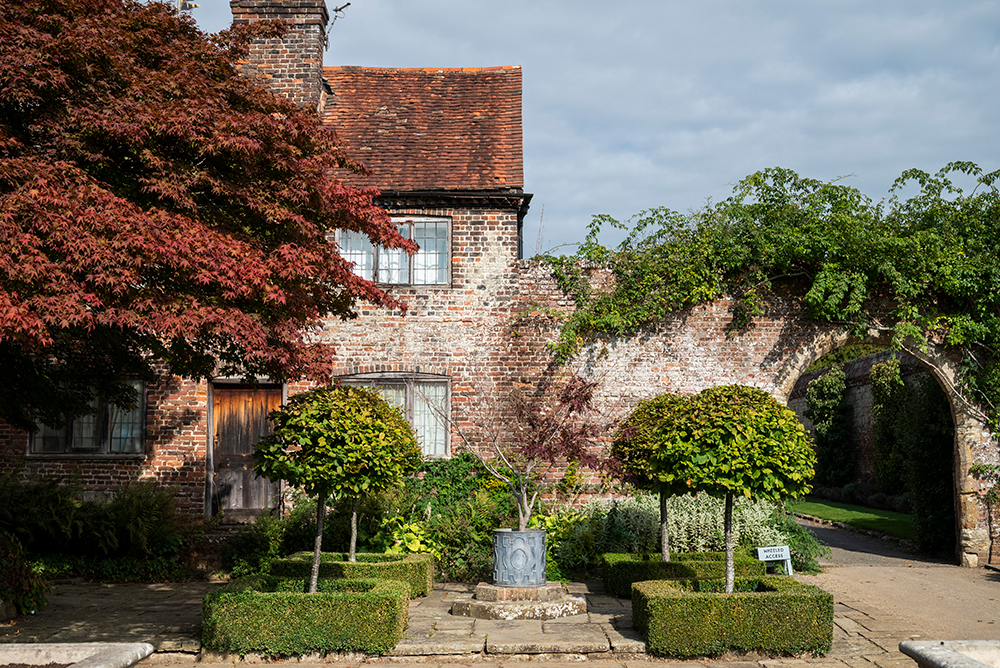
Take a look at our latest buying guides for more great options.
Related content:
- The DSLR is dead, long live the compact
- Flying with camera kit: how to do it
- Do travel photography like a street photographer
- How to take great travel photos with a smartphone
Follow AP on Facebook , Twitter , Instagram , and YouTube .
Andy has been Amateur Photographer's Technical Editor since 2014, responsible for reviewing everything from cameras and lenses to accessories and software. Prior to that, he was DPReview's Technical Editor, and introduced lens reviews to that website in 2008. Along the way, he's shot extensively with cameras and lenses of almost every imaginable type, brand and format.

You may also like...

May 31, 2024
The best DSLR camera you can buy in 2024
For those who love the DSLR system, we reveal the best-buy DSLR models for a range of budgets and genres
by Geoff Harris
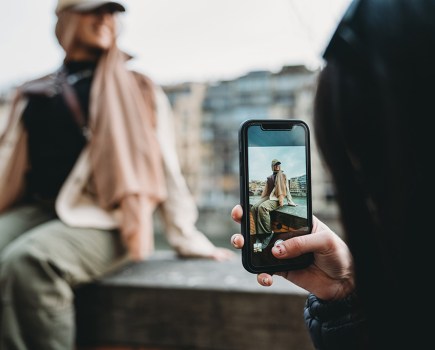
Best smartphones for portrait photography 2024
Most modern smartphones are capable of taking great portraits. Amy Davies rounds-up the best on the market.
by Amy Davies
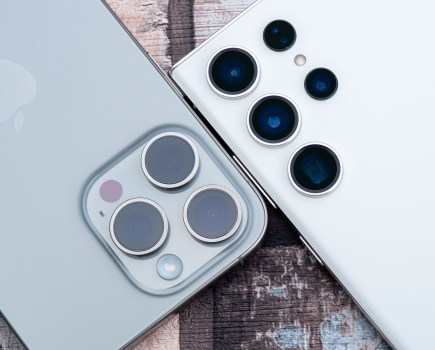
May 30, 2024
Best camera phones for photography in 2024
We pick the best camera phones for photographers to buy, derived from our reviews of the latest Samsung, Google, Apple iPhones and more.

Looking to improve your photography? Amateur Photographer is the magazine for you, subscribe today and pay just £26 for your first 13 issues!
No thanks, I’m not interested!
The best zoom camera in 2024
Get up close and personal with distant subjects with our pick of the best zoom cameras you can buy right now
- Our quick list
Best overall
Best for beginners, best for travel, best for wildlife, best for vloggers.
- Best waterproof
Best value superzoom
- Longest zoom
- How to choose
- How we test

Our quick list 1: Best overall 2: Best for beginners 3: Best for travel 4: Best for wildlife 5: Best for vloggers 6: Best value superzoom 7 : Best waterproof 8: Longest zoom How to choose How we test
Although the smartphone in your pocket can do a lot of great things - and take fantastic photographs - if there’s one area where traditional cameras tend to fare better, it’s with their zoom capability.
There are plenty of reasons why a camera equipped with a long zoom lens is the ideal solution for you. Whether it’s for all-around flexibility when traveling or you just like to photograph a wide range of subjects, having the ability to zoom in (and out) from a scene always comes in handy. Shooting at longer focal lengths is useful for portraits, while being able to zoom even further is ideal for sports, wildlife, and other potentially distant subjects.
Zoom cameras, with fixed built-in zooms, tend to be split into two broad categories. Traditional pocket-friendly point-and-shoot compact cameras are ideal for holidays and day trips. Meanwhile, bridge cameras are bigger and chunkier but tend to have lengthier zooms and handling, which is reminiscent of DSLRs .
Most pocket-friendly zoom cameras have relatively small sensors, but you can also find a few with larger one-inch type sensors that still offer a good degree of zoom. Bridge cameras also tend to have smaller sensors, but as an all-in-one solution to getting a long zoom, this is often worth the trade-off.
With these things in mind, it’s time to have a look at our selection of the best zoom cameras you can buy…
Our top picks
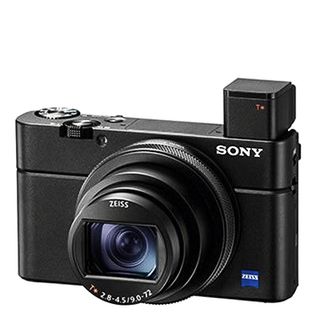
Best zoom camera overall This is a luxury-priced compact camera that is our top recommendation as it combines a quality 1-inch sensor with an impressive 8x zoom in a very portable casing. Read more
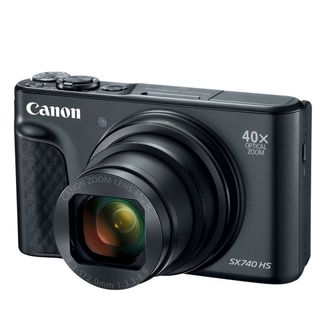
Best for beginners This is a great mid-priced zoom camera that offers a 40x superzoom in a surprising small shell - offering telephoto power that phone users can only dream about. Read more
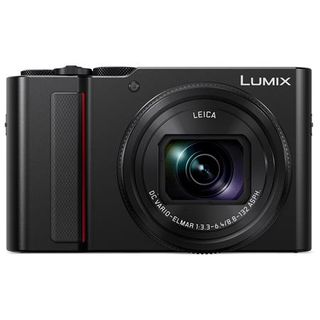
Best for travel This pocketable zoom camera offers a sweetspot between sensor quality, zoom range and pocketability - making it a great choice for photographers who want to travel light. Read more
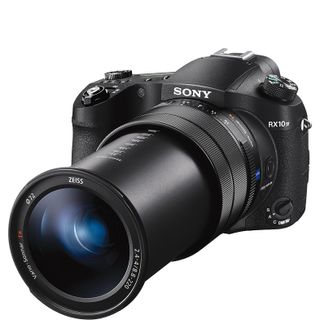
Best for wildlife This premium bridge camera handles much like a DSLR, but boasts a spectacular 24-600mm zoom range that is ideal for bird photography or for use on safari.
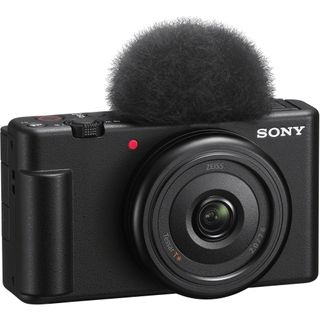
Best for vlogging YouTubers and TikTokers don't need a zoom lens - but having one makes it much easier to frame yourself tightly on the flip-out LCD screen of this camera that's been designed for content creators. Read more
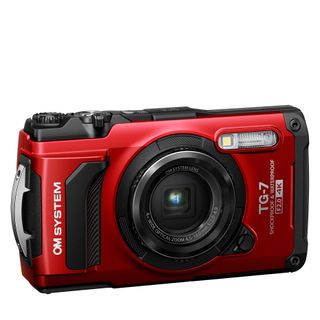
Best waterproof This compact is at home on land and water. Designed to take the knocks it can dive to depths of 15m - but also comes with a very competent 4x zoom and superb close-focusing capabilities. Read more
Load the next products ↴
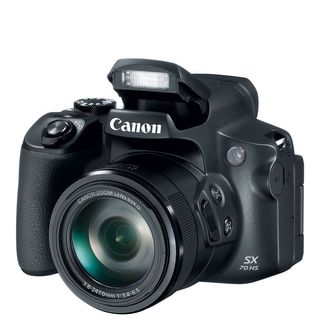
Best value superzoom This big-zoom bridge camera gives a great compromise between price and performance. It packs an impressive 63x zoom range - and has the useful combination of an electronic eyelevel viewfinder and a swing-out LCD panel. Read more

Longest zoom This zoom camera reaches subjects that others can't reach with a record-breaking 24-3000mm effective zoom range. It is an incredible beast of a camera - but it is about the biggest zoom camera ever made, so not discrete or particularly portable. Read more
- Back to the top ⤴
Best zoom camera in 2024
Why you can trust Digital Camera World Our expert reviewers spend hours testing and comparing products and services so you can choose the best for you. Find out how we test.
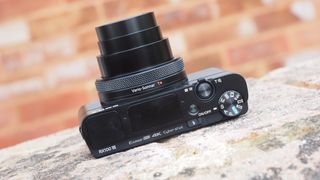
1: Sony RX100 VII
Our expert review:
Specifications
Reasons to buy, reasons to avoid.
When it comes to the king of the all-rounders, a camera that is adept at pretty much anything you’d care to throw at it, the Sony RX100 VII is the one. But, the one for which you’ll pay a huge premium for.
With its 8x zoom, it’s fairly flexible (though if zoom is your main concern, there are others that are better here), but it’s the fact that it can shoot at super-fast burst speeds, has a retracting EVF, a well-featured touchscreen and a high-performing one-inch sensor - and does all of that while fitting in your pocket that sees it sit at the top of our list.
If you want something which will fit more neatly into your budget, keep looking down our list.
See our full Sony RX100 VII review .
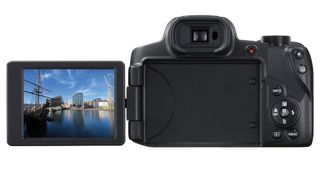
2. Canon PowerShot SX740 HS
With its 40x zoom lens, the SX740 is a fantastic option for those who want a simple-to-use travel-friendly camera, which is also well-suited to family snaps and days out.
Particularly ideally suited to beginners, it also offers more advanced modes for enthusiasts (though sadly there’s no raw format shooting). Other useful specifications include the front-facing screen (ideal for those holiday selfies) and 4K video.
The compromise for having such a lengthy zoom is a small sensor, so the SX740 is probably not one for those who like to shoot a lot in low light, but for bright light holiday shots, it’s a good value all-rounder.
See our full Canon PowerShot SX740 HS review .
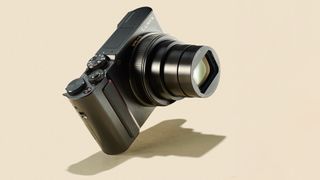
3: Panasonic ZS200 / TZ200
Offering an excellent balance between large sensor and zoom length, the Panasonic Lumix ZS200 (called the TZ200 in Europe) is in many ways the perfect travel camera.
Small enough to fit in your pocket, while still offering a very flexible 15x zoom, it’s ideal for capturing landscapes, portraits and reasonably far-off subjects.
Well-suited to both beginners and enthusiasts, it offers a range of shooting modes and advanced options such as raw format shooting and the ever-useful 4K Photo modes.
There’s a couple of downsides here, such as the fact that the screen is fixed, and that there’s some image softening seen at the full 15x zoom, but, especially at the price, it’s an excellent all-rounder that is a great buy for many.
See our full Panasonic ZS200 / TZ200 review .
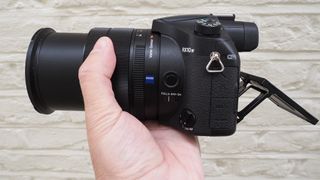
4: Sony RX10 IV
If you’re looking for a zoom camera for wildlife or other moving subjects, the Sony Cyber-shot RX10 IV is a superb choice, and certainly the best of its kind on the market. Not only do you get a very flexible 25x zoom (giving you an equivalent of 600mm at the telephoto end), but you get fantastic image quality throughout the zoom range.
You also get superb AF tracking for moving subjects, and fast burst shooting to keep up with those elusive subjects. With its large one-inch sensor and maximum wide aperture - even at the telephoto end - the RX10 IV is no slouch when it comes to low light shooting either.
Of course there is a price to pay for such excellence, with the RX10 IV being one of the priciest models on the market, but considering the equivalent spend you’d need to make for comparable DSLR optics, it could arguably be viewed as a bit of a bargain.
See our full Sony RX10 IV review .
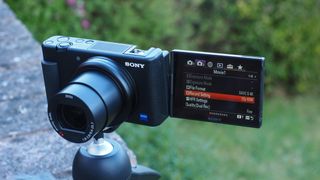
5. Sony ZV-1
Aimed at vloggers, the Sony ZV-1 is designed for content creators that need to shoot videos of themselves. As such the zoom is a modest 24-70mm affair with a variable aperture of f/1.8 - f/2.8. However, there is a big change in minimum focusing distance as you zoom which is annoying especially if you're using it to record video.
The SteadyShot active stabilization wasn't the best however the autofocus is very impressive. It has a vari-angle, a rear tilting screen that means it's perfect for recording yourself a mic-wind shield which means its audio quality even with the built-in mic is still pretty good. Unlike the Sony RX100 compact cameras, it doesn't have a viewfinder, but it produces high-quality images, is even better at video, and, best of all, it'll cost you less.
Read our full Sony ZV-1 review
Best waterproof zoom camera
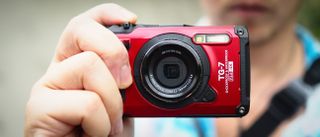
6. OM System Tough TG-7
The TG-7 is the latest in a series of shockproof, and fully waterproof cameras in the Tough range - originally produced by Olympus , and now marketed under the OM System brand. Its appeal is that you can use this on the beach, in extreme weather, on a boat, or even when snorkeling and not worry. But it is not just about the commando credentials, we love built-in microscope setting that allows you to take amazing close-ups - and that it records GPS coordinates and temperature with your photos.
Its 12 megapixel sensor can shoot 4K video, but can usefully capture Full HD video at 120fps for super-slow-motion - with a modest 12MP stills capability. The TG-7 has a modest 25-100mm optical zoom - butt that is actually very good compared to other fully waterproof compacts. In our field tests we found the Tough easy-to-use but sophisticated, is quite simply the best waterproof camera around.
Read our full OM System Tough TG-7 review
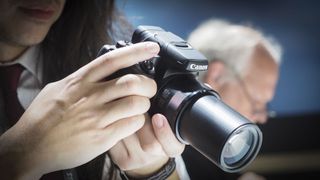
7: Canon PowerShot SX70 HS
If you’re looking for a well-rounded bridge camera that offers a good range of functions - and has that all-important ultra-long zoom, then the Canon SX70 is a good option.
At 65x, it’s one of the longest on the market (without verging into the ridiculous territory of the Nikon P1000, see below), giving you good scope to shoot pretty much every subject imaginable.
We found it very least to handle (you will feel familiar with it if you’re used to using other Canon cameras). There's usable enough EVF and fully articulating screen - but which is let down by the fact it’s not touch-sensitive. There’s a good range of shooting modes, plus the ability to shoot in raw format.
The trade-off here for the ultra-long zoom is a small sensor, meaning the SX70 doesn’t perform amazingly well in certain conditions - such as low light. But for a good value travel and holiday camera, we reckon it’s still well worth considering.
See our full Canon PowerShot SX70 HS review .
Zoom camera with longest zoom
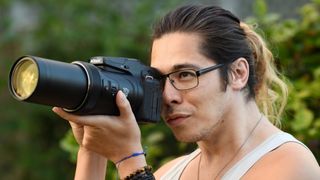
8. Nikon Coolpix P1000
If zoom really is your key concern, then the Nikon P1000 will give you the ultimate reach - with some key compromises.
With its amazing 125x zoom lens, you’ve got enough power here to literally shoot the moon, as well as of course everything else in between.
As you’d expect, in order to accommodate such a lens, the camera is a whopper. There are some benefits to that, such as its DSLR-like handling and excellent EVF. That said, however, it’s so big and cumbersome that you have to really want that kind of zoom level to tolerate it - so it won’t be for everyone. What's more its size we found when testing it that it is so big you can find yourself feeling quite self-conscious using this beast in public!
Thanks to a small sensor, it also struggles in low light, and shooting at the 3000mm end of the telephoto lens can also be a bit of a hit and miss situation, too.
See our full Nikon P1000 review .
How to choose a zoom camera
When it comes to choosing a zoom camera, think about exactly how much zoom you actually need. You’ll probably want at least an 8-10x zoom, but some of those in our list here offer 20 or 30x, with one even offering a staggering 125x (enough power to shoot close-ups of the moon!).
Thinking about equivalent focal lengths, if zoom is your main concern you’ll generally be looking for something which goes beyond the standard 24-70mm type range, so pay attention to that in the specs list. Also think about the wide-angle end of the lens, especially if you’re looking for something to fulfill a range of needs or is ideal as an all-rounder for subjects such as travel. That could even mean you look out for something wider than 24mm for extended flexibility.
How we test zoom camera

Our team of in-house and external reviewers have tested hundreds of zoom cameras over the years, and we use their experience to pick the best available in the market today for this guide. We test compact cameras and bridge cameras in real world conditions - seeing how they handle shooting a variety of different lighting conditions and shooting scenarios, and then comparing their results to those we have taken with similar cameras. With zoom cameras, handling is just as important as out-and-out image quality - so we pay particular attention to ease-of-use and ergonomics in our tests. Read more about how we test products at DCW
Read more: Best travel camera The best point-and-shoot cameras Best cameras for hiking Best cameras under $200 Best cameras under $500 Best cameras for beginners Best compact cameras Best mirrorless cameras
Get the Digital Camera World Newsletter
The best camera deals, reviews, product advice, and unmissable photography news, direct to your inbox!
Amy Davies has been writing about photography since 2009, and used to be a colleague on Digital Camera magazine and Techradar.com. She now works as a freelance journalist writing for nclude Amateur Photographer, Stuff, Wired, T3, Digital Photographer, Digital Camera World, TechRadar, Trusted Reviews, ePhotozine and Photography Blog. She has an undergraduate degree in journalism and a postgraduate diploma in magazine journalism, both from Cardiff Journalism School.
Related articles

- Share full article
Advertisement
Supported by
DealBook newsletter
‘This Could Have Been a Zoom Meeting’: Companies Rethink Travel
Before business travel fully takes off again, some companies are taking steps to rein it in.

By Kevin J. Delaney
The DealBook newsletter delves into a single topic or theme every weekend, providing reporting and analysis that offers a better understanding of an important issue in the news. If you don’t already receive the daily newsletter, sign up here .
David Calhoun, chief executive of Boeing, has access to company aircraft as part of his job. Even so, he told an interviewer that he didn’t expect to fly nearly as much for internal company meetings after the pandemic.
Mr. Calhoun, like some of his peers, found that video calls were remarkably effective for checking in with colleagues, allowing him to pack in more meetings and schedule them with minimal advance notice, according to an account in “Leading at a Distance,” a recent book by James M. Citrin and Darleen DeRosa.
“I will do as much or more customer travel, because that’s still the most important way to build relationships,” Mr. Calhoun told the authors. “But most travel when leading big companies is visiting your own teams. I won’t be doing that nearly as much.”
There’s broad consensus that how often we fly for work and what we travel for will shift significantly post-pandemic. Who is traveling may be different as well. That, in turn, will prompt changes in what the travel industry provides to business people, a source of nearly a third of its revenue before the pandemic.
A year and a half of forgoing virtually all travel and doing business by video conference has led many business people to conclude that a lot of their previous travel wasn’t worth the time and toll on their bodies and mental state, on their families and the environment. That’s even before considering the role that travel played in transmitting the virus across continents.
There’s a popular meme : “This meeting could have been an email.” Those of us who have traveled long distances for a single work meeting know that we could often just as easily say, “This business trip could have been a Zoom call.”
And before travel fully takes off again, some organizations and individuals are taking steps to rein it in. Adding significantly to the pressure are commitments that many companies are making to trim their emissions — goals that often involve slashing the carbon footprint of employees’ business travel.
One scenario is what Mr. Calhoun suggested: Companies could dramatically reduce whole categories of travel, such as in-person meetings with internal colleagues in other cities. A Wall Street Journal analysis last year, for example, estimated that intra-company meetings and training represented 20 percent of all business travel and predicted that 40 to 60 percent of that would go away permanently. The Journal concluded that 19 to 36 percent of business trips would disappear. Bill Gates predicted at DealBook’s conference last fall that business travel would still be more than 50 percent lower once things normalized.
In contrast with domestic leisure travel, which has largely recovered , business travel has been relatively slow in coming back. Just 9 percent of companies say they’ve resumed their pre-pandemic travel levels, according to a recent survey by the Association of International Certified Professional Accountants. United Airlines and Delta Air Lines both recently said that business travel remains about 60 percent lower than pre-pandemic levels, despite an increase in recent months. Rising coronavirus cases in recent weeks could delay the recovery of business travel further.
But Mr. Calhoun’s plan to reduce his own internal travel echoes the results of the accountants association’s survey, which found that two-thirds of companies were allowing travel for sales or client meetings, with fewer permitting travel for internal purposes or training programs.
The rebound
Early indications suggest that most businesses will be reluctant to dramatically trim the estimated two-thirds of business travel that involves sales calls and client visits, conferences and professional services like consulting. Executives remain wary of losing out to a rival who actually shows up in person, or seeing an important contract go away because of poor virtual communications. Jamie Dimon, the chief executive of JPMorgan Chase, said in May that clients told him his bank lost business when “bankers from the other guys visited, and ours didn’t.”
Scott Kirby, chief executive of United, earlier this year predicted “full recovery in business demand because business travel is about relationships.” Speaking with investors via a conference call, he added, “You cannot build human relationships through a medium like this.”
Others also see the potential for corporate travel to swell, as increasingly dispersed workers need to reassemble regularly.
“The thing that we describe as business travel may actually grow in the future years,” said Lindsay Nelson, chief experience and brand officer at Tripadvisor, the online travel company. “But the kinds of people that are traveling and what they’re traveling for is going to change.”
Ms. Nelson predicted that remote-work arrangements mean that more employees will travel back to their corporate offices. So rather than an elite subset of employees flying out from a headquarters constantly, a greater percentage of workers will be flying into headquarters or offsite meeting locations to convene with each other.
Such a shift could lead hotels and airlines to rethink their loyalty programs, which have typically catered to the intense road-warrior traveler, to attract the business of regular, but less frequent travelers. Ms. Nelson said that such travelers might look for different perks, such as an extension of the flexible flight cancellation terms that prevailed during the pandemic. Another trend the industry could cater to: Nearly 90 percent of business travelers surveyed by SAP Concur recently said they plan to attach personal vacation time to their business trips in the next year.
The rethink
But rather than just accept that business travel will rebound, companies can use the change in practices of the past year to open a new chapter for how they approach it. A compelling reason for doing so is the environmental impact, especially as organizations pursue reductions in their climate footprints.
Commercial air travel is responsible for about 3 to 4 percent of total U.S. greenhouse gas emissions . First-class travel, because of the lower density of seating, can result inasmuch as four times the emissions as sitting in the back of the plane.
At the Zurich reinsurance company Swiss Re, for example, flights represented about two-thirds of its operational carbon footprint. As part of its net-zero emissions efforts, the company used the drop in corporate travel last year as an opportunity to more permanently reduce its carbon footprint. Its employees’ air travel fell about 80 percent from 2018 levels last year and it expects a drop of 30 percent or more from the 2018 baseline this year.
Swiss Re in January began adding a significant carbon emissions surcharge onto flights purchased by its 13,200 employees — representing roughly $500 on top of the price of a Zurich to New York plane ticket. Team budgets can absorb these charges — which Swiss Re uses to fund carbon offsets and removal — since its employees are flying less.
But as travel comes back and the surcharges pinch into budgets, the goal is to force employees to think harder when they’re booking a trip about whether it’s actually necessary.
“We still need to travel to meet clients — but maybe not as frequently,” said Mischa Repmann, senior environmental management specialist at Swiss Re. “We can merge trips, we can travel more mindfully than in the past.”
Other companies are heading in a similar direction. Salesforce in April announced plans to cut its own business travel carbon emissions as a ratio of its revenue by 50 percent from 2019 levels. Deloitte unveiled a goal of cutting business travel emissions per employee by 50 percent by 2030 . EY’s goal is to cut business travel emissions by 35 percent from fiscal year 2019 to 2025.
In addition to reducing the number of flights, businesses are using calculators to determine the least emissions-intensive locations for meetings, such as ones some participants can reach by train. And some are experimenting with “ cluster meetings ,” where attendees assemble in nearby hub locations and connect virtually with those in other regional clusters.
The environmentalist and author Paul Hawken calls flying long distances for business meetings “a catastrophically monumental waste of resources” and argues that companies would do better with less corporate travel. “We just got a good lesson in how to be effective without moving protoplasm around,” he said.
It would be easy for organizations to revert to their old practices, and probably many will. But their environmental targets will push some companies to rethink who travels and why. And while we know well the limits of video meetings, there are compelling reasons to forgo some travel and resign ourselves to settling in on Zoom.
Mr. Delaney is co-founder and editor in chief of Charter , a media and services company focused on transforming workplaces.
What do you think? Should companies cut back on business travel indefinitely? How? Let us know: [email protected] .
Explore Our Business Coverage
Dive deeper into the people, issues and trends shaping the world of business..
What Happened to Ad-Free TV?: Not long ago, streaming TV came with a promise: Sign up, and commercials will be a thing of the past. Here’s why ads are almost everywhere on streaming services now .
London Moves to Revive Its Reputation: As fears have grown that the city is losing its attractiveness for publicly traded businesses, Britain’s government is making changes to bring them back.
What Do Elite Students Want?: An increasing number of students desire “making a bag” (slang for a sack of money) as quickly as possible. Many of Harvard’s Generation Z say “sellout” is not an insult, appearing to be strikingly corporate-minded .
D.C.’s Empty Offices: Workers in Washington have returned to the office slowly , with a pervasive and pronounced effect on the local economy.
Trump’s Financial Future: Donald Trump has treated Trump Media, which runs his social network Truth Social, as a low-cost sideshow. Now a big portion of his wealth hinges on its success .
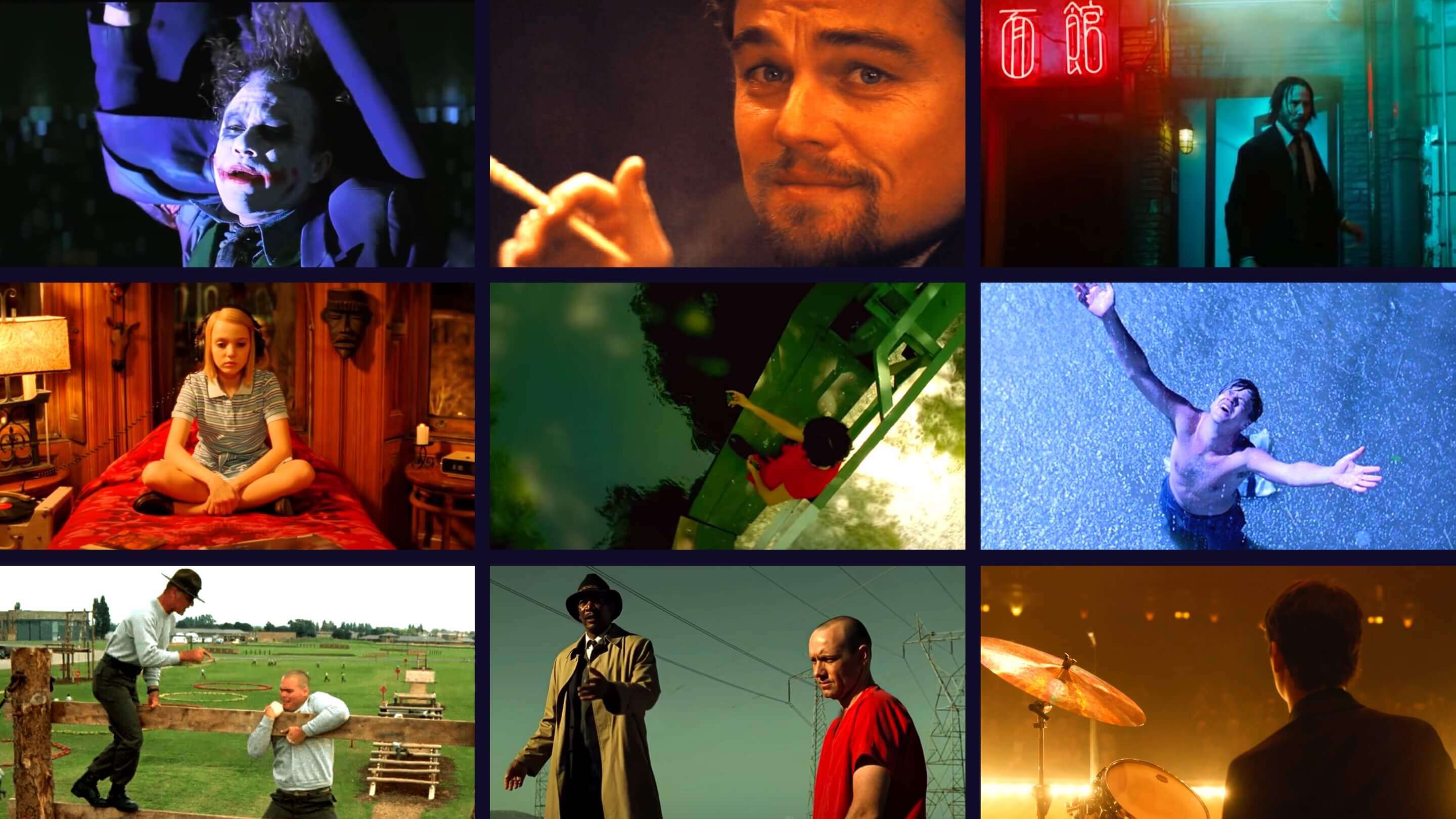
- Cinematography
Types of Camera Movements in Film Explained: Definitive Guide
Shot framing, camera angles, camera focus, camera gear, camera movement, camera lenses.
A s cameras have become smaller over time, new technology is constantly being invented to move them in every direction possible. Understanding the effects of the different types of camera movements in film is essential for every filmmaker to understand. It not only makes them better cinematographers or directors, but better storytellers. Using the right movement that best serves your story will help you make each shot as effective as possible.
Watch: Ultimate Guide to Camera Movement
Subscribe for more filmmaking videos like this.
- Static Shot
- Tracking Shot
Random Movement
Camera movement definition, different types of camera movement.
Before we take a look at the complete list of the different types of camera movements in film, let’s first take a look at the camera movement definition. This will help us better understand the best camera movements and why filmmakers use them.
CAMERA MOVEMENT DEFINITION
What is camera movement.
Camera movement is a filmmaking technique that causes a change in frame or perspective through the movement of the camera. Camera movement allows cinematographers and directors to shift the audience's view without cutting. Specific types of camera movements in film also can create a psychological and emotional effect on the audience. These effects can be used to make a film more immersive and engaging.
Examples of types of camera movements in film:
When it comes time to create a shot list for your next project, which camera movements will you choose? There are many types of camera movements in film, each with their own storytelling value.
For future reference, follow the image link below to download a PDF of our custom shot list with each type of camera movement. Can you guess which movies these images are from? Follow the link for the answers.
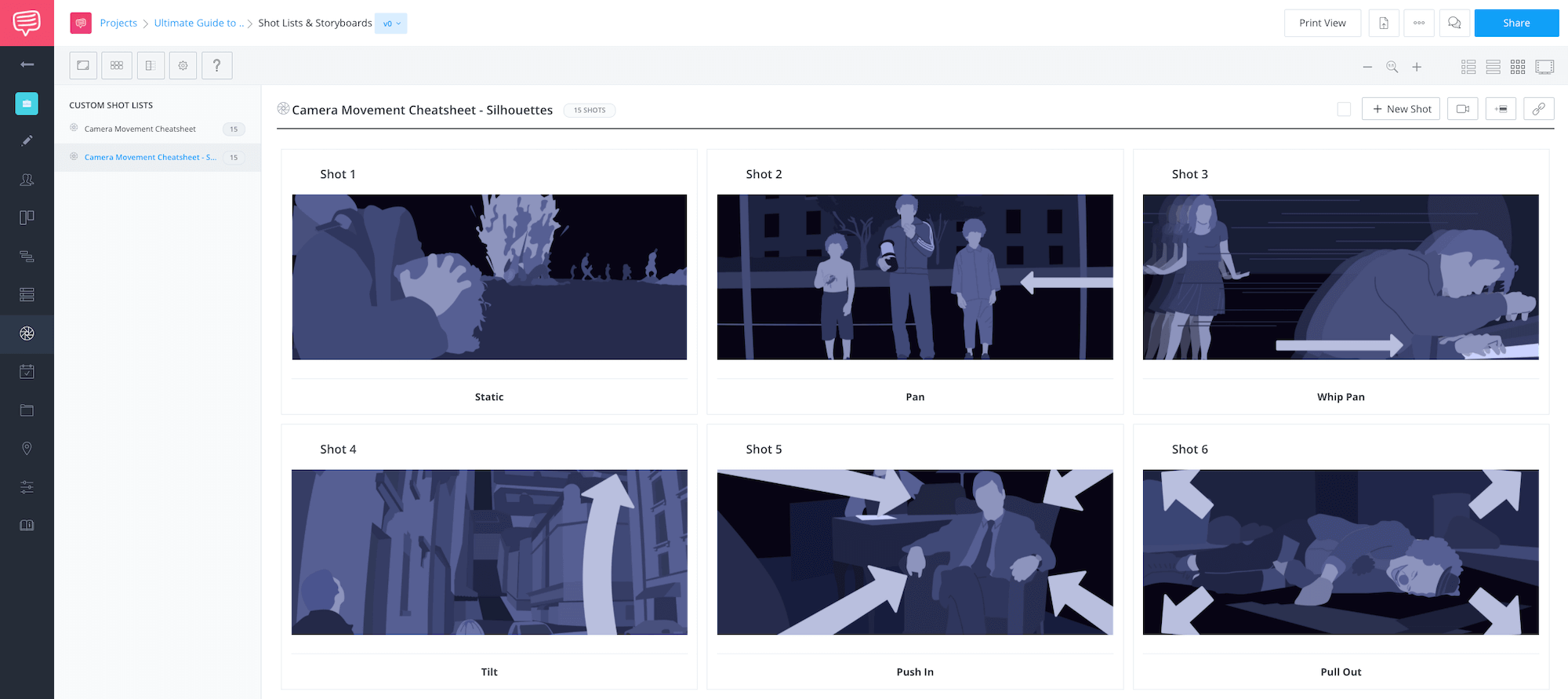
Ultimate Guide to Camera Movements • See Entire Storyboard
Camera movement terms.
The first on our list of the types of camera movements in film is the static shot . A static shot has no camera movement at all. It is achieved by locking a camera to a fixed-position typically with a tripod. The stability of a static shot makes it non-distracting. This makes it one of the best camera movements for shot-reverse-shot dialogue, precise composition, or showcasing an actors’ performance.
A key distinction to Martin Scorsese’s directing style is allowing room for improvisation from his actors. Static shots with multiple cameras are perfect for capturing these moments. Check out this video comparison by Screenplayed that compares the final cut and screenplay of this Wolf of Wall Street scene. Note how much improvisation is included.
Wolf of Wall Street • Stationary camera movement
To capture these moments where anything can happen, a static shot allows actors to work the scene together and produce something authentic. As great as static shots can be, deliberate and motivated camera movements can be incredibly effective storytelling devices.
Learn more about the static shot →
Pan camera movement
The camera pan directs a camera horizontally left or right. The pan camera movement is typically achieved with a tripod head, but can also be done handheld or with a stabilizer.
Pans are often motivated by a character’s actions. They can also be used to reveal new information to the audience.
When done quickly with speed, the fast camera movement is known as a whip pan. Whip pans are one of the best camera movements to add energy to a shot. Whip pans can be used between two characters rather than cutting to establish a more energetic connection.
We analyzed the whip pans of La La Land in this video essay to see how they effectively energize the relationship between Sebastian and Mia.
Art of the Whip Pan Shot • Subscribe on YouTube
Tilt camera movement.
Camera tilts are just like pans, only vertical. Tilt camera movements direct a camera upward or downward. Camera tilts can be used to give a character dominance in a shot or to reveal new information to the audience. Tilts enable filmmakers to capture the verticality of a film in moments of awe and spectacle.
Steven Spielberg’s style uses the tilt often. In one of Spielberg’s best movies , Jurassic Park , he uses the tilt when first introducing the dinosaurs . The camera tilt perfectly captures the emotions of the film’s characters while eliciting awe in the audience.
Welcome to Jurassic Park • Tilt Camera Movement
Spielberg is known for his dynamic camera movement. This scene is a perfect example of how a tilt up camera movement can have an emotional response. Sir Steven is also known for the Spielberg oner — his uncanny ability to use different types of camera movements to shoot complete scenes in one shot.
How Spielberg Directs Long Takes • Subscribe on YouTube
Spielberg’s intentional camera movement can be found throughout some of his best work.
Learn more about the tilt shot →
Related Posts
- The Ultimate Guide to Every Shot Size in Film →
- Visualize your scenes with online shotlist software →
- The Different Types of Camera Shot Angles in Film →
Dolly camera movement
A push-in moves the camera closer to a subject typically with a dolly camera movement or Steadicam . Push-ins can draw the audience's attention toward a specific detail. Filmmakers also push-in toward characters to try and infer what is occurring internally. This can be a reaction, thought process, or internal conflict .
Check out the analysis of this push-in shot from The Assassination of Jesse James by the Coward Robert Ford . Cinefix compares the use of the push-in with a dolly camera movement to a static shot to show its impact on the scene.
Cinefix • Dolly Camera Movement
Consider this scene from The Godfather . As Sonny and Tom spar over how to handle the family business after Don Corleone's assassination attempt, the camera barely moves.
That is, until the moment Michael decides to step up and take control. The static camera leading up to that moment allows for even the slightest push in to Michael seem like a grand and powerful moment. Here's a breakdown of the scene and how Coppola uses camera movement with masterful purpose and precision.
Push In Example • Subscribe on YouTube
Subtle push-ins like these can have an enormous impact on how we perceive characters. They can be the missing component that connects an audience to a character and what they are thinking.
The camera pull out is the exact opposite of the push in. A pull out is a smooth camera movement that moves the camera further away from a subject. This movement causes the subject to grow smaller while simultaneously revealing their surroundings.
Pull outs can be used to reveal setting and characters. Emotionally, pull outs can highlight a character’s isolation or loneliness. Stanley Kubrick uses this to detach us from Jack in this scene from The Shining .
The Shining • cool camera movements
As Jack descends into madness in the film, the pull out allows Kubrick to distance us from Jack, just as Wendy does. Kubrick demonstrates how to use the pull out to both reveal information and entice emotion.
Camera movements zoom
Although zooms are technically not a camera movement they do create movement within the image. Zooms change the focal length of a camera lens to either zoom in (magnify) or zoom out (de-magnify) the size of a subject in the frame.
Zooms are unique because there is no equivalent to it in the experience of the human eye. Zooms can feel artificial or even unnatural. For these reasons, zooms are one of the best camera movements to use in horrors and thrillers.
The zoom is commonly found in Stanley Kubrick’s directing style . By using it on specific characters, Kubrick makes us feel uneasy by them as they descend into madness like in this shot from Full Metal Jacket .
Full Metal Jacket zoom
When watching Kubrick’s best films , keep an eye out for zoom shots. Although zooms may not be as prevalent in modern cinema, they can still be effective storytelling devices when used with intention. And the best way to understand the intention behind a shot is to study masters like Kubrick.
Learn more about the zoom shot →
- How the Steadicam Revolutionized Cinema →
- Visualize your scenes with online shotlist software →
- Read More: How to Choose the Right Camera Lenses →
Types of camera movements in film
One of the more heavy-handed camera movements is the dolly zoom . A dolly zoom is achieved by dollying the camera away from or toward a subject while simultaneously zooming in the other direction. Dolly zooms are an incredibly intentional camera movement because they have such a specific effect.
The visual effect of a dolly zoom that is distinctive. In the fantasy and horror genre, it is used to portray a supernatural force. We break down an example of this from Lord of the Rings: The Fellowship of the Ring in this video essay.
Dolly Zoom • Subscribe on YouTube
Filmmakers have used the dolly zoom to visually portray other conflicts as well. It is commonly used to capture the internal conflict of a character. The dolly zoom can also be used in a positive way. By making the background larger while maintaining foreground size, the dolly zoom can also establish a relationship between two characters.
Learn more about the dolly zoom →
Roll camera movement
The camera roll is a rotational camera movement that rotates the camera over its side on its long axis. Rolls can be dizzying and unnatural. For this reason, filmmakers use it to disorient the audience or create uneasiness. It’s specific effect makes it a very intentional camera movement that should only be used when wanting to elicit a discomfort in the audience.
Sometimes these effects tie in to a film’s theme , such as in this scene from one of the best Marvel movies , Black Panther . When Killmonger takes the throne, the sense of uneasiness in Wakanda is echoed to the audience through a slow camera roll.
Dizzying types of camera movement shots • Black Panther
Imagine if this scene had been shot with just a push in and no camera roll. The instability of Wakanda and the apprehension of the film’s characters would be felt less by the audience.
Tracking camera movement
Tracking shot.
A tracking shot is any shot that physically moves the camera through the scene for an extended amount of time. Tracking camera movement often follows a traveling subject, though they can be used to simply show off the scene. Check out our breakdown of the best tips to shooting better tracking shots.
Tracking Camera Shot Movements • Subscribe on YouTube
Truck camera movement is a type of tracking shot that moves laterally left or right. Truck camera movement has historically been achieved with a dolly tracking camera movement. Modern Steadicams have allow complex shot movements that move the camera in all directions.
Steadicam camera movement has become more prevalent in modern films. Here's a breakdown of the camera, lenses, and camera movements Roger Deakins used to make 1917 look like a single tracking shot.
How Deakins Shot 1917 • Subscribe on YouTube
Tracking shots can be found in nearly every modern film. Analyzing how your favorite filmmakers use tracking shots will help you become a better filmmaker.
Learn more about tracking shots →
The arc shot orbits the camera around a subject in an arc pattern. Arc shots are typically used to add energy to a shot in which characters have minimal actions. Christopher Nolan uses the arc shot in The Dark Knight to add to the menacing energy of the Joker.
The Dark Knight • Cool Camera Movements
Imagine if the shot was captured statically on a tripod. Sure Heath Ledger’s performance would still make it engaging. However, the arc shot movements create uneasiness in the audience immediately just as Rachel feels. The result is an uneasy, yet incredible Joker finale in one of Christopher Nolan’s best films .
- The The Ultimate Guide to Camera Shots in Film →
- Read More: Creative Uses of the Dolly Shot in Cinema →
Pedestal camera movement
To move the camera vertically upward or downward, filmmakers turn to the boom shot . Boom shots are achieved by using boom crane camera movements , pedestal camera movement, and jibs. They can be small boom movements typically used for reveals and characters.
Other times, filmmakers use large boom movements to show off the setting of a scene. These shots are known as establishing shots . Check out our analysis of what makes great establishing shots great. Note which ones use boom camera movements.
Establishing Shots Types of Camera Movement Shots • Subscribe on YouTube
Large boom movements immediately add production value to a film. The scale boom shots can create has drawn audiences to the theatre throughout cinematic history.
Learn more about the boom shot →
What is handheld camera movement?
Sometimes, camera movements are not motivated by character actions, but rather audience experience. Filmmakers often add random movement to a shot via camera shake through a handheld shot to heighten the intensity of a scene.
When used more subtly, the random movement can establish subjectivity for the audience. This is often used in films that are based on true events. In combination with arbitrary zooms, the random movement in The Big Short stylistically gives a subjective, documentary feel to the film.
The Big Short (2015) • Handheld Types of Camera Movement
Random movement can be over used, so be sure to use it with intention and restraint if necessary. Too much of it and the random movement will be ineffective. Too little and it will go unnoticed. The random movement should always serve the story.
Learn more about the handheld shot →
Types of Camera Rigs and Gear
Once you decide what types of camera movements in film you want to use in your project, it is important to determine what equipment to use to achieve it. There are various types of camera rigs and gear that can accomplish nearly every camera movement. Understanding the function of each will help you get a better grasp of the cinematic tools at your disposal.
Up Next: Types of Camera Rigs and Gear →
Showcase your vision with elegant shot lists and storyboards..
Create robust and customizable shot lists. Upload images to make storyboards and slideshows.
Learn More ➜
- Pricing & Plans
- Product Updates
- Featured On
- StudioBinder Partners
- The Ultimate Guide to Call Sheets (with FREE Call Sheet Template)
- How to Break Down a Script (with FREE Script Breakdown Sheet)
- The Only Shot List Template You Need — with Free Download
- Managing Your Film Budget Cashflow & PO Log (Free Template)
- A Better Film Crew List Template Booking Sheet
- Best Storyboard Softwares (with free Storyboard Templates)
- Movie Magic Scheduling
- Gorilla Software
- Storyboard That
A visual medium requires visual methods. Master the art of visual storytelling with our FREE video series on directing and filmmaking techniques.
We’re in a golden age of TV writing and development. More and more people are flocking to the small screen to find daily entertainment. So how can you break put from the pack and get your idea onto the small screen? We’re here to help.
- Making It: From Pre-Production to Screen
- How to Get a Film Permit — A Step-by-Step Breakdown
- How to Make a Storyboard — Ultimate Guide with Free Storyboard Templates
- VFX vs. CGI vs. SFX — Decoding the Debate
- What is a Freeze Frame — The Best Examples & Why They Work
- TV Script Format 101 — Examples of How to Format a TV Script
- 115 Facebook
- 17 Pinterest
- 14 LinkedIn
Compact Camera Group Test: Travel Zooms

The test cameras
As the travel zoom marketplace has expanded, the technology has advanced, to the extent that even some of last year's crop of products look under-specified compared to current models. One of the most noticeable effects of the increased competition in this sector is the increased sophistication of the hardware, not just with regards to the angle of view covered by the lenses, but also pixel counts and the increased prevalence of 'extras' like built-in GPS.
As far as their lenses are concerned, whereas 35mm (equivalent) used to be considered a 'standard' wideangle, many of the cameras we're looking at here range from a genuinely 'wide' wideangle to well beyond 200mm (equivalent), which in theory, makes them just as capable when tackling intimate interiors and landscapes as distant telephoto shots. Four of the six cameras in this test offer optical zoom lenses that start at 24mm (equivalent), and all exceed 250mm (equivalent) at the long end. The widest optical zoom range of any camera here belongs to the Nikon Coolpix S9100, which offers a 25-450mm (equivalent) zoom. As already mentioned, we've selected 6 representative models from the current crop of travel zoom compact cameras for the dedicated 'in-depth' pages of this test. Here they are, in alphabetical order:
- Canon Powershot SX230 HS
- Nikon Coolpix S9100
- Panasonic Lumix DMC-ZS10
- Pentax RZ10
- Samsung WB210
- Sony Cyber-shot HX9V
Key Spec compared
This table details the 'top level' features of all of the models on test. As you can see, some specifications, especially as regards sensor size and ISO span, are similar from model to model, but there are a few distinctions, particularly when it comes to optical zoom range. Three of the models in this test feature 'back-illuminated' CMOS sensors, which are designed to (theoretically) give improved low-light performance compared to more conventional models. Put simply,'back-illuminated' means that some of the circuitry which might normally sit alongside the light-gathering photodiodes on the surface of the sensor is moved to the rear. This allows the photodiodes to collect more light, unobscured by their accompanying electronics.
*Highest ISO settings only available at reduced resolution
- 1 Introduction
- 3 Canon PowerShot SX230 HS
- 4 Nikon Coolpix S9100
- 5 Panasonic Lumix DMC-ZS10
- 6 Pentax Optio RZ10
- 7 Samsung WB210
- 8 Sony Cyber-shot HX9
- 9 Movie modes
- 10 Compared to (JPEG)
- 11 Photographic tests
- 12 Photographic tests
- 13 Real-world comparison (daylight)
- 14 Real-world comparison (low light)
- 15 Real-world comparison (flash)
- 16 The ones that got away
- 17 Conclusions and ratings
- 18 Samples Gallery
Gear in this story

- Discuss in the forums
- See full product details
- View sample images

When you use DPReview links to buy products, the site may earn a commission.

You may also like
More about gear in this article.
Just Posted: our group test of travel zoom compact cameras. The travel zoom/compact super zoom category is one of the great success stories of recent years, with all the major manufacturers offering at least one small camera with at least a 10x zoom. And that success is understandable - few other camera types offer such a balance between size, price and flexibility. We've looked at fourteen of the latest models and narrowed these down to a shortlist of six for the full review treatment. Our 18-page grouptest shows how these six perform in a variety of situations, but all fourteen have both real-world samples and studio comparisons. Click here to find out what we thought and which cameras prevailed.
Latest sample galleries

Latest in-depth reviews

The Lumix S9 is Panasonic's newest full-frame mirrorless camera. It allows users to create their own custom looks for out-of-camera colors and is the first full-frame Lumix camera aimed squarely at social media content creators.

The Sony a9 III is the world's first full-frame mirrorless camera to feature a global electronic shutter with simultaneous readout. After extensive testing of this 120 fps sports camera, to see what you gain (and, perhaps, lose).

Fujifilm has announced the X-T50, a mid-range 40MP APS-C mirrorless camera that gains image stabilization, subject recognition AF and a host of high-res video features.

The Fujifilm X100VI is the sixth iteration of Fujifilm's classically-styled large sensor compact. A 40MP X-Trans sensor, in-body stabilization and 6.2K video are the major updates, but do they make the camera better?

The Panasonic Lumix S5II launched the second generation of Panasonic’s full-frame mirrorless camera system and was the first Panasonic to feature phase detect autofocus. As our review reveals, it’s a heck of an all-around camera for both still and video shooters.
Latest buying guides

What’s the best camera for around $2000? This price point gives you access to some of the most all-round capable cameras available. Excellent image quality, powerful autofocus and great looking video are the least you can expect. We've picked the models that really stand out.

What's the best camera for travel? Good travel cameras should be small, versatile, and offer good image quality. In this buying guide we've rounded-up several great cameras for travel and recommended the best.

If you want a compact camera that produces great quality photos without the hassle of changing lenses, there are plenty of choices available for every budget. Read on to find out which portable enthusiast compacts are our favorites.

'What's the best mirrorless camera?' We're glad you asked.

Above $2500 cameras tend to become increasingly specialized, making it difficult to select a 'best' option. We case our eye over the options costing more than $2500 but less than $4000, to find the best all-rounder.

The aspect ratio switch on Leica's D-Lux8 is a great reminder of the value of giving direct access to the most distinctive features. Editor Richard Butler thinks this is exactly what Fujifilm X-T50's Film Simulation dial achieves.

June is packed with multiple days celebrating Mother Nature. Get out there and touch grass; we want to see your best nature photos!

The team behind the award-winning Halide camera app for iOS has announced Kino, a video-only app that includes advanced video capture features and built-in color presets crated by pro colorists.

"All camera and lens manufacturers have to be innovative," says Sigma CEO Kazuto Yamaki, but "technology competition among manufacturers may not always be beneficial to customers... some other specifications might be more important."

Every week, we ask newsletter subscribers a question about gear, creativity or life. Recently we wanted to know: If you could go back to your 20-year-old self, what camera related advice would you give yourself?

We had a chance to shoot with the Fujifilm X-T50 for quite a while, so we put together a first-look video, outlining what it can offer, as well as shooting a sample gallery using a variety of Film Simulations.

Setting up your new camera is a rite of passage for all photographers. Avoid mistakes, adjust these settings first.

Leica has announced it will introduce the D-Lux 8, an enthusiast zoom compact based around a four thirds type sensor.

We had the opportunity to use the new Panasonic S9 for several days at Panasonic's Lumix Summit in Osaka, Japan. In this short video, we take a closer look at the camera, who it's designed for, and the philosophy behind its LUT-based workflow.

The best of the best from the DPReview community, see our favorite photos you made from the "for the birds" challenge.

Panasonic has announced a manual focus, fixed aperture 26mm F8 lens to go with the S9, it's also said it's working on an 18-40mm F4.5-6.3 wide-angle zoom.

Now in its seventh year, the annual awards recognize some of the best astrophotography of the year.

Furthering its quest to implement AI across its product line, Adobe is bringing Adobe Firefly's 'Generative' tool to Lightroom. Also announced today: expanded tethering for Sony cameras and an updated toolbar for the mobile version.

Every week, we ask newsletter subscribers a question about gear, creativity or life. This week we wanted to know: if you could only pick one lens, what would it be and why?

We got a chance to take Fujifilm's new premium kit zoom to Stockholm, to get a sense of how it looks on a 40MP sensor.

Leaping lemurs and enchanting baobab trees, nature photographer Erez Marom takes us through the national parks of Madagascar.

On this day in history, in the year 2000, Canon's EOS D30 became the first-ever multi-megapixel CMOS sensor used in a production camera. It also helped usher in the then-new era of 'prosumer' cameras.

Sigma has announced an updated 24-70mm F2.8 as part of its Art series of lenses. The 24-70mm F2.8 DG DN II

Fujifilm has replaced one of our favorite kit zooms with the XF16-50mm F2.8-4.8 R LM WR, a wider, lighter but less bright premium kit lens.

Fujifilm has announced the GFX 100S II, an upgraded version of its more compact, affordable 100MP medium format mirrorless camera, with a better viewfinder and upgraded capabilities.

Fujifilm has announced the GF 500mm F5.6 R LM OIS WR, a relatively compact super-telephoto prime for its GFX medium format system.

Fujifilm has joined C2PA and CAI, the two groups leading efforts to add cryptographic proof of authenticity to photos.
![travelling vs zoom Canon announces EOS R1 development [Updated]](https://1.img-dpreview.com/files/p/E~C148x0S888x888T72x72~articles/0785314321/Canon_EOS_R1_with_lens.jpeg)
Canon has announced it is developing (and is currently testing) the EOS R1, the "first flagship model for [the] EOS R system."

In late February, Sigma announced the 15mm F1.4 DG DN Diagonal Fisheye lens, and we put it into the hands of a professional astrophotographer for a shoot in the Canadian sub-arctic. Check out his gallery and see how it performs under the night sky.

With retro-inspired design, China-based upstart Thypoch is hoping to catch eyes with its pair of lenses for Z, X, E and RF mounts.

Announced in April, the $340 16mm lens joins the collection of 24mm, 35mm and 55mm lenses that came before it.
The Pixel 8a is the newest member of Google's Pixel 8 smartphone family. It uses the same cameras as its predecessor, the Pixel 7a, but gets the more powerful processor and features found in the Pixel 8 and 8 Pro. We took it for a spin to see how it performs.
- Gear Patrol
- Work for us
- Advertise with us
- Feedback / Contact us
- Camera reviews
- Lens reviews
- Printer reviews
- Buying guides
- Sample images
- Editorial enquiries
- Camera search
- Camera comparison
- Lens search
- Product timeline
- Browse all products
- Community Guidelines
- My Settings
- My GearList
Recommended
Judge stunned to see man with a suspended driver’s license on courthouse zoom call driving a car.

Tail-wagging fox can’t hide her joy seeing human friend again

‘Wheel of Fortune’ host Pat Sajak loses it after contestant gaffe

Boeing cargo plane makes emergency ‘belly landing’ after landing gear fails

Jon Lovitz slams ‘self-loathing Jew’ Bernie Sanders, says Trump has ‘done more for Israel than any president’

Circus Elephant stops traffic in Montana after escape

Missing ship discovered at the bottom of Lake Superior over 100 years later

Car skewered by guardrail in epic crash: ‘Dad, I’m sorry’

Car vs. garage! Doorbell camera captures wild crash

Crazy crash sends race car flying 90-degrees into the air

Video shows unsuspecting shopper falling into massive sinkhole as second floor of shopping center collapses
- Vacation Rentals
- Restaurants
- Things to do
- Things to Do
- Travel Stories
- Rental Cars
- Add a Place
- Travel Forum
- Travelers' Choice
- Help Center
BA vs Delta (Help my mom) - Air Travel Forum
- Tripadvisor Forums
- Air Travel Forums
BA vs Delta (Help my mom)
- United States Forums
- Europe Forums
- Canada Forums
- Asia Forums
- Central America Forums
- Africa Forums
- Caribbean Forums
- Mexico Forums
- South Pacific Forums
- South America Forums
- Middle East Forums
- Honeymoons and Romance
- Business Travel
- Train Travel
- Traveling With Disabilities
- Tripadvisor Support
- Solo Travel
- Bargain Travel
- Timeshares / Vacation Rentals
- Air Travel forum

BA - Extra legroom seats (not premium economy)
Seattle - LHR - Rome
Layover in LHR (5hrs) - land and takeoff in Terminal 5
*We were in LHR last fall, so have an introductory experience there
Delta - Comfort + seats
SEA - CDG or AMS - Rome (3+ hour layovers)
* CDG/AMS to Rome would be on a codeshare like AF or KLM
There is a big price difference. I've not flown BA before, flown Delta to Europe before. With LHR not being a favorite connecting airport, but the flight landing/taking off in the same terminal, is BA the better option for my mom over Delta? Any comment on the economy with extra legroom seats on BA?
Thanks for helping!
11 replies to this topic

$670 per person cheaper on BA?
I would go with that although seat selection is not free on BA (don't know about Delta)
I fly frequently with BA (although premium economy and above) and they are OK.
Thank you, John Doe! The price on BA includes the seat selection (so it's an out the door price).

I have never flown Delta and am not familiar with their Comfort Plus. is this a true Premium Economy product or just more legroom?
If the latter, I’d go with BA for that price difference.
If you do choose Delat, I’d pick KLM and AMS any day over connecting at CDG
@amo Delta's Comfort + is more legroom (same seat width as economy) plus maybe a free drink. Thanks for the CDG tip. We've been to that airpot and agree, it wasn't the easiest.
Regarding the seats, strictly speaking BA doesn't sell extra legroom seats in economy as a category comparable to DL Comfort+ or AA Main Cabin Extra. The only extra legroom seats in economy are those in emergency exit rows (plus bulkheads, though those are really extra knee-room due to no seat in front, there isn't usually extra space in front of the seat). The exit row seats do usually have plenty of legroom, though you need to be eligible for exit rows (eg not disabled etc). The seats are slightly narrower in practice due to the fixed armrests required to store trays and IFE screens.
CDG is the same as AMS from immigration standpoint, not sure if you'd have to reclear security, CDG isn't quite as easy as AMS for connections, but it's ok.
LHR means no immigration at the connection point, but she would have to clear immigration on arrival to Rome, which adds time at the end of an already long journey with a 5 hour layover. It's one terminal, but she would likely to have to transit between the satellite and main terminals at LHR T5 to make the connection, and would have to reclear security at flight connections.
Of course, there is a substantial price difference in BA's favour, which does mitigate the incovenience. A quick question on that, have you included the seat reservation costs in the price you quote for BA? BA charges for advance seat reservations unless you have status (or a few other exemptions), and exit row seats in economy long haul are only free to those with BA Gold (oneworld Emerald) or higher status. If you haven't those costs might narrow the BA price advantage significantly for a round trip, exit row seats are usually the most expensive to reserve in economy. Otherwise, it's a personal decision about more convenience (AMS and to some extent CDG) over price (BA and LHR), and how much value you place on the convenience.
For me, if factors like airline status / miles didn't come into it, with this one I'd probably choose DL/KL via AMS, if price were not my biggest factor., though BA is a lot cheaper if seat reservations are included.
Unless you have high level status with AA, as you've never flown BA, BA will charge you for seat selection, and you are after preferred seats so the seat charge is likely higher. So, you need to factor that into your pricing, which will narrow the gap a bit.
However, your title mentions helping your mother. In what context? If she has mobility issues, cannot walk far in airports, or cannot stand around at a gate, you should book airport assistance for that. If she needs help finding a gate in an airport owing to lack of international flying experience or you have concerns she just might get lost in an airport, then that's a different matter and would be your responsibility to resolve. Oh, and be sure what you mean by extra leg room seats - anybody with mobility issues would not be allowed to sit in an emergency exit row, and you'd forfeit the extra seat fee - so clarify that issue.
If you do stick with Delta, then I'd certainly recommend AMS. Do know that on that route as AMS is your entry to Schengen, you will do passport control there, but baggage will not be seen until Rome where you will do customs (for either choice of route).
The seat selection costs are factored into both prices already. And forgot to note, no checked luggage.

This is a no brainer to me.
BA of course with such a big difference in price 🤔
“be sure what you mean by extra leg room seats - anybody with mobility issues would not be allowed to sit in an emergency exit row, and you'd forfeit the extra seat fee - so clarify that issue.“
Absolutely. +1 to this.
@vegas - that is a great point. No mobility issues preventing us from sitting in exit rows if that seat is chosen. Thanks for the reminder.
- Sun Express - be aware if nut allergy sufferer 2:42 pm
- Cargo parcel without passenger 2:40 pm
- Connecting between JFK and LGA 2:38 pm
- esta revoked 2:34 pm
- Opodo UK 2:32 pm
- Best strategy for Premium Economy to Tokyo 2:24 pm
- Round trip Los Angeles- Marrakech with transit in Madrid 2:20 pm
- Being screwed over by AuntBetty - do I have any options? 2:15 pm
- Just Get Out of Town (JGOOT) 2:11 pm
- Hawaiian Airlines--This Seems SO Misleading! 1:32 pm
- Ryanair Airport Parking 1:16 pm
- LIM>MAD>LHR HELP!! BA have messed up our flights 12:43 pm
- Google link me to scholartrip.com book the ticket. 12:19 pm
- Tui airline change 11:42 am
- ++++ ESTA (USA) and eTA (Canada) requirements for visa-exempt foreign nationals ++++
- ++++ TIPS - PLANNING YOUR FLIGHTS +++++++
- Buy now or later? What's with these screwy ticket prices?
- Around-the-world (RTW) tickets
- All you need to know about OPEN JAW tickets
- Beware of cheap business class tickets (sold by 3rd parties)
- ++++ TIPS - PREPARING TO FLY +++++++++
- TIPS - How to prepare for Long Haul Flights
- TIPS - Being Prepared for Cancellations and Long Delays
- TIPS - How to survive being stuck at an airport
- Flights delays and cancellations resources
- How do I effectively communicate with an airline?
- Airline, Airport, and Travel Abbreviations
- Air Travel Queries: accessibility,wedding dresses,travelling with children.
- Connecting Flights at London Heathrow Airport
- TUI Airways (formerly Thomson) Dreamliner - Movies and Seating Information
- ++++ COVID-19 CORONAVIRUS INFORMATION ++++
- Covid-19 Coronavirus Information for Air Travel
Donald Trump was convicted on felony charges. Will he go to prison?
A New York jury's historic conviction of Donald Trump on felony charges means his fate is now in the hands of the judge he has repeatedly ripped as "corrupt" and "incompetent."
Two experts told NBC News that it's unlikely Trump will be imprisoned based on his age, lack of a criminal record and other factors — and an analysis of thousands of cases found that very few people charged with the same crime receive jail time. But a third expert told NBC News he believes it is "substantially" likely Trump could end up behind bars.
Trump was convicted on 34 counts of falsifying business records , a class E felony that is punishable by a fine, probation or up to four years in prison per count. During the trial, Judge Juan Merchan threatened to put Trump behind bars for violating his gag order, but it’s unclear whether the former president will face similar consequences now. It's expected that any sentence would be imposed concurrently, instead of consecutively.
Former federal prosecutor Chuck Rosenberg, an NBC News analyst, said it's unlikely that Merchan would sentence Trump, 77, to any jail time, given his age and his status as a first-time, nonviolent offender. "I’d be very surprised if there's any sentence of incarceration at all," Rosenberg said. “Of course, he did spend a good bit of time insulting the judge who has the authority to incarcerate him.”
The next step for Trump at this point is his sentencing, which is set for July 11. Manhattan District Attorney Alvin Bragg would not comment Thursday on what type of sentence he’d seek, saying his office would do it’s speaking in court papers in the weeks ahead.
Arthur Aidala, a former prosecutor in the Brooklyn district attorney's office who's now a defense lawyer, said the judge will most likely use some of the time before sentencing to research similar cases to determine what the median sentence is.
"He wants to know before he sentences someone what the typical sentence is," Aidala said, and would consider other factors, like Trump's age and lack of a criminal record, while also taking into account the lack of injury caused by the crime. Aidala said he believes whatever punishment Merchan comes up with would be "a non-jail disposition."
An analysis conducted by Norm Eisen, who worked for House Democrats during Trump’s first impeachment, found that roughly 1 in 10 people who have been convicted of falsifying business records are imprisoned and that those cases typically involved other crimes.
Ron Kuby, a veteran New York criminal defense lawyer, took a different view.
“Judge Merchan is known for being a harsh sentencer when it comes to white-collar crimes committed by people who have wealth and privilege and power,” he said.
Kuby added he believes "it is substantially likely Judge Merchan will sentence Trump to jail or prison time," despite the logistical and practical complications that locking up a person with Secret Service protection would entail.
Kuby said that's because the criminal scheme went on for over a year and included a number of bad acts on Trump's part.
“It’s an entire course of conduct he was involved with — not just one bad decision,” he said.
Trump, however, most likely doesn't have to worry about missing the Republican National Convention, where he's expected to accept the party's nomination, even though it's taking place just days after his sentencing. Kuby said he'd most likely be able to remain free while he appeals the conviction.
Trump's behavior during the trial, including his flouting Merchan's gag order by making comments about witnesses and the jury, isn't likely to be a factor in the sentencing decision, Kuby said. It's also highly unlikely that comments that appeared to be aimed at sidestepping the gag order by Republican officials who attended the trial as Trump's guests will figure into Merchan's reasoning, Kuby added.
"If the judge is smart, he'd stay away from that," Kuby said. "The best way for judges not to get reversed in a sentencing is to stick to the facts and circumstances of the crimes and conviction."
Rosenberg said that despite Trump’s frequent criticisms of Merchan, which he likened to “a batter who’s been yelling at the umpire from before the first pitch,” Merchan appeared to run “a clean and fair trial.”
Rosenberg and Kuby agreed that Trump would appeal the verdict. Kuby said that could delay Trump's serving whatever punishment Merchan doles out for years, even if the appeal is ultimately unsuccessful.
His first appeal will be to the state Appellate Division, a midlevel appeals court, and it will almost certainly not decide the appeal until after the November election, Kuby said. If he loses there, he could then appeal to the state's highest court, the Court of Appeals. A loss there would be followed by a request to the U.S. Supreme Court to hear the case.
If all that fails, Kuby said, he could then try turning to federal court in another attempt to eventually get the case before the Supreme Court.
The appeals process typically takes a long time — Kuby said he had one client who staved off prison time for six years — but there's another potential complicating factor in this case.
"If he becomes president of the United States, he cannot be incarcerated in a state prison" while he's in office, Kuby said, because it could prevent him from fulfilling his constitutional duties. If he lost his appeals, "by the time he leaves office — if he leaves office — he'd be ready to be incarcerated," he said.
Dareh Gregorian is a politics reporter for NBC News.
Adam Reiss is a reporter and producer for NBC and MSNBC.
Lionel Messi scores goal in return to lineup, but Inter Miami falls 3-1 to Atlanta United

FORT LAUDERDALE, Fla. – Lionel Messi returned to action, rested and engaged. But most of his Inter Miami teammates felt the ill-effects of the longest road trip in Major League Soccer on Wednesday night.
Messi scored in the 62nd minute, but Inter Miami fell 3-1 to Atlanta United at Chase Stadium – four days after the club won 2-1 at Vancouver without Messi, Luis Suárez and Sergio Busquets.
Saba Lobjanidze scored in the 44th and 59th minutes for a brace, while Jamal Thiaré finished a sliding goal in the 73rd minute to help Atlanta win its fourth match of the MLS season and hand Inter Miami its third loss of the season.
“The truth is we were missing a gear,” Inter Miami coach Tata Martino said after the loss. “Let's say it was a night where the team went backwards compared to other matches, where we always found positive moments, even in difficult moments.”
The good news for Inter Miami: It retains first place in the MLS Eastern Conference with FC Cincinnati one point behind in the standings after Cincinnati lost 2-0 at home to Nashville.
Messi, Suárez and Busquets returned to action for the first time since May 18, given 10 days between matches to rest and recuperate — and avoid travel to and from South Florida to Vancouver last weekend.
Inter Miami plays again on Saturday night against St. Louis City, which ranks 11th out of 14 teams in the MLS Western Conference. But it’s not yet definitive Messi, the 2022 World Cup champion who will captain Argentina in Copa América next month, will play on Saturday. His status will likely be decided after Friday's practice.
Messi could use the work to maintain his form before Copa América, which could be the final major tournament he’ll play for Argentina in his legendary career. He turns 37 on June 24.
Messi appeared healthy as a lingering left leg injury, a blow he took at Montreal on May 11, did not affect him against Atlanta.
Messi nearly scored on a header in the opening minutes, but his dive toward the net ended with the ball sailing over it.
Messi, Suárez and Jordi Alba forced the issue offensively in the first half, but they were unable to find holes in Atlanta’s steadfast defense.
As the first half neared its end, Inter Miami’s fatigue from travel and nighttime humidity showed as Lobjanidze scored before halftime.
While Messi’s goal reignited Inter Miami and its home crowd, the goal by Thiaré proved to be the dagger.
Inter Miami has won just one of six matches played on a Wednesday this season, a 3-1 win over Nashville in the Concacaf Champions Cup being the lone exception.
“When a team gets defeated like we did, it’s an excuse to talk about the trip or the calendar,” Martino said.
Jamal Thiaré goal: Atlanta United 3, Inter Miami 1
Inter Miami is on the brink of defeat.
Jamal Thiaré finished a sliding goal in the 73 rd minute to give Atlanta a 3-1 lead against Inter Miami.
The play was orchestrated by Thiago Almada, and Caleb Wiley delivered the assist.
Messi scores goal to respond: Atlanta United 2, Inter Miami 1
Messi has responded to Inter Miami’s 2-0 deficit with a goal in the 62 nd minute, a strike that found the bottom right corner of the net.
The quick response in Messi’s goal has reignited the home crowd at Inter Miami’s Chase Stadium.
Saba Lobjanidze scores again for brace: Atlanta 2, Inter Miami 0
It might not be Inter Miami’s night.
Saba Lobjanidze scored in the 59 th minute to give Atlanta United a 2-0 lead over Inter Miami in the second half.
Atlanta’s Thiago Almada navigated the steal from Inter Miami’s stars and Lobjanizde doubled their lead.
Messi slips, misses shot on goal: Atlanta 1, Inter Miami 0
A swing and a miss in the 55 th minute by Messi, who also slipped after his latest shot attempt in the second half.
Inter Miami’s Matias Rojas, who has scored three goals this season, has entered the match for Julian Gressel.
Saba Lobjanidze goal: Atlanta United 1, Inter Miami 0
Messi and Inter Miami are out of sorts in the first half and they fell behind just before halftime.
Atlanta United’s Saba Lobjanidze scored in the 44th minute to help his side take a 1-0 lead over Inter Miami.
Messi, Alba, Suárez try to connect again, but offsides: Inter Miami 0, Atlanta 0
Messi, Alba and Suárez performed a set piece after a corner kick, to no avail.
Alba found Messi streaking down the right side, and Messi used his head to find Suarez cutting toward the net. But the ball appeared to be deflected by Atlanta United goalie Josh Cowen in the 26th minute.
Messi drives downfield, Suárez misses shot: Inter Miami 0, Atlanta 0
Messi pursued an opportunity with a full head of steam from midfield, and dropped off a pass to his right to Julian Gressel. But Gressel veered offsides after dropping off a pass to Luis Suárez, who kicked it directly to Atlanta United goalie Josh Cowen in the 19th minute.
One minute later, Messi chipped a pass in the goal area to Robert Taylor, who was unable to handle it.
Messi misses diving header in early minutes: Inter Miami 0, Atlanta 0
Messi made a hard run toward the net, and tried to use his head to find the back of the net. But Messi’s shot bounced over the net in the fourth minute.
Messi got up after his dive with a thumbs-up for Jordi Alba, who delivered the pass into the goal area.
Messi, striker Luis Suárez and midfielder Sergio Busquets are in the starting lineup again after missing the Vancouver match last Saturday.
A new addition to the starting lineup is midfielder Federico Redondo, who returned from a knee injury to play against Vancouver. He replaces Benjamin Cremaschi, who will likely enter as a substitute.
Is Messi playing tonight?
Yes, Messi is expected to play against Atlanta , after staying home in South Florida and missing Inter Miami’s 2-1 win at Vancouver . He’s in the startling lineup.
WATCH : Messi and Inter Miami take on Atlanta United FC on Apple TV
TICKETS : Experience Messi and Inter Miami in person when they host Atlanta United FC
SHOP : Get the latest Messi and Inter Miami team gear from the MLS Store
How to watch Inter Miami vs. Atlanta United live stream
Inter Miami and Atlanta begin play at 7:30 p.m. on Wednesday at Chase Stadium. The game is available via MLS Season Pass on Apple TV .
Messi, Inter Miami arrive at Chase Stadium
Messi and his Inter Miami teammates have arrived at Chase Stadium in Fort Lauderdale, Florida, for tonight's game against Atlanta United. The players were spotted leaving their bus shortly after 6 p.m. ET.
Inter Miami vs. Atlanta United prediction
Inter Miami 3, Atlanta United 0: Messi returns to form with a goal and assist, Suárez adds another goal, and Benjamin Cremaschi scores as goalkeeper Drake Callender has a shutout. — Safid Deen, Lionel Messi reporter
Inter Miami vs. Atlanta United betting odds
Inter Miami is a -225 favorite at home, while Atlanta is a +380 underdog with +450 odds to draw, according to BETMGM .
What’s at stake as Inter Miami hosts Atlanta United?
Inter Miami leads the MLS Eastern Conference with 34 points from 10 wins, four draws and two losses. Luis Suárez is tied for second in MLS with 11 goals scored, while Messi is third with 10 goals scored and a league-leading 12 assists this season.
Meanwhile, Atlanta is 12th among 15 Eastern Conference teams with 14 points from three wins, four draws and seven losses.
A win would increase Inter Miami’s lead in the East.
Messi shines in Bad Boys movie promo with Will Smith, Martin Lawrence and Jimmy Butler
Messi speaks in English, and delivers the punchline in a hilarious promo for “Bad Boys: Ride or Die ."
Why did Messi not travel, play in Vancouver?
Messi, Luis Suárez and Sergio Busquets did not travel to Vancouver for rest purposes – to avoid the cross-continent journey from South Florida – with home games on tap tonight and Saturday, especially with Copa América on deck .
All three are expected to play Wednesday and Saturday vs. St. Louis City.
Messi’s upcoming Inter Miami, Argentina schedule
Messi is expected to play again Saturday as Inter Miami hosts St. Louis City. Then, he’ll join Argentina for Copa América training.
Messi will participate in Argentina friendlies or Copa América warmup matches in Chicago on June 9 and the Washington D.C. area on June 14.
Then, Messi and Argentina take center stage in the Copa América opener against Canada in Atlanta on June 20.
Here’s more info on Messi and Argentina’s Copa América schedule .
- SI SWIMSUIT
- SI SPORTSBOOK
Chicago Sky vs. Indiana Fever: How to Watch Angel Reese vs. Caitlin Clark on Saturday
Dustin schutte | 4 hours ago.

Chicago Sky
Indiana fever.
One of the most anticipated matchups of the WNBA season has finally arrived. On Saturday, college rivals Caitlin Clark and Angel Reese will go head-to-head as the Indiana Fever host the Chicago Sky.
Clark and Reese were two of the most popular players at the college level each of the last two seasons. Because the two met in the NCAA Tournament each of the past two years, there was a bit of a rivalry that sparked.
Saturday, Clark and Reese will renew their rivalry, playing against each other in the WNBA for the first time. Here's how you can watch Saturday afternoon's matchup from Indianapolis.
How to watch Chicago Sky vs. Indiana Fever
What : Chicago Sky (3-3) vs. Indiana Fever (1-8) When : Saturday, June 1 at 12 p.m. ET Where : Gainbridge Fieldhouse in Indianapolis, Ind. TV : ESPN Live stream : fuboTV ( Start your free trial ) Spread : The Chicago Sky are a 3.5-point favorite over the Indiana Fever, per FanDuel.com
Leading scorers
- G Marina Mabrey : 17.3 ppg; 6.5 rpg; 5.2 apg; 39.6% 3-pt FG
- G Dana Evans : 12.5 ppg; 4.2 apg; 1.8 spg; 38.5% 3-pt FG
- C Elizabeth Williams : 12.0 ppg; 8.2 rpg; 2.2 bpg; 50% FG
- F Angel Reese : 11.0 ppg; 8.2 rpg; 2.0 apg; 37.3% FG
- G Caitlin Clark : 17.6 ppg; 6.6 apg; 5.1 rpg; 37.7% FG
- G Kelsey Mitchell : 14.1 ppg; 2.1 apg; 1.4 rpg; 36.4% FG
- F Aliyah Boston : 11.0 ppg; 6.8 rpg; 2.3 apg; 45.2% FG
- F NaLyssa Smith : 10.8 ppg; 6.8 rpg; 1.0 bpg: 50.7% FG
Rivalry between Clark, Reese renewed
Although they only played against each other a few times in college, there was a bit of a rivlary between Clark and Reese. The two stars met in the NCAA Tournament in consecutive years, with each player winning one matchup.
Reese led LSU past Iowa 102-85 in the 2023 national championship. She finished the game with 15 points, 10 rebounds, five assists, three steals and a block in the victory.
In the rematch, Clark got the best of Reese in the Elite Eight round of the 2024 tournament. The Iowa star had a monster game, scoring 41 points, dishing out 12 assists and collecting seven rebounds.
Saturday will mark the first time the two will go head-to-head in their WNBA careers. It's the first of four games between Chicago and Indiana this season.
Kamilla Cardoso expected to return from injury
Another big storyline regarding Saturday's matchup is the potential return of Kamilla Cardoso. The No. 3 pick in the 2024 WNBA Draft has been sidelined with a shoulder injury she sustained in Chicago's preseason opener against the Minnesota Lynx. Cardoso has not played in a regular seaosn game yet.
That could change on Saturday, with Cardoso expected to return from the injury. It's unclear whether or not Cardoso would play for the Sky in the game.
Cardoso is coming off a national title run at South Carolina, with the team finishing the season with a perfect 38-0 record. She averaged 14.4 points and 9.7 rebounds per game in her final year with the Gamecocks.
With a post combination of Reese and Cardoso, there's a very bright future for the Sky. Saturday might give us our first glimpse into the tandem that could potentially run the WNBA one day.
Game odds refresh periodically and are subject to change. If you or someone you know has a gambling problem and wants help, call 1-800-GAMBLER.
DUSTIN SCHUTTE

IMAGES
VIDEO
COMMENTS
For example, looking at Nikon's G-series lenses, the total weight of a 35mm f/1.8, 50mm f/1.8, and 85mm f/1.8 kit is 1.9 pounds. If you opt for gaining that additional 2/3 stop of light with the f/1.4 set of the same lenses, your total lens kit now weighs 3.3 pounds, and the physical size of the lenses is also a good deal larger.
Compact and Travel-Friendly. The beauty of primes lies in their simplicity. A single focal length means less glass and mechanics inside, leading to a smaller size that's perfect for on-the-go photography. Easier to pack than bulky zoom lenses. Reduce strain on your shoulders during long explorations.
The Galaxy S22 Ultra is one of the best phones we've tested, which garnered a CNET Editor's Choice Award in our review. It's more convenient to handle than my mirrorless camera, though it doesn't ...
Canon EF 24-105mm f/4L IS USM (Best Canon EF Zoom Lens for Travel Photography) The Canon EF 24-105mm f/4L IS USM is a travel photography favourite, thanks to its blend of versatility and image quality. As part of Canon's esteemed L-Series, it's well-known for superior optical performance.
Canon EOS R10. 4.0. $879.00 at Amazon. See It. The Canon EOS R10 is a slim camera that supports changeable lenses and produces quality pictures. Despite its mid-entry price, it offers class ...
What many travel photographers opt for instead is a wider prime and in this video, TKNORTH discusses his new favorite, the Sigma 24mm f/1.4 DG HSM Art. That is particularly wide and fast, which ...
Zoom vs Prime Lenses for Travel? The greatest upside of prime lenses in traveling is a higher portability and smaller size. As for Zooms, the biggest upside is the ability to zoom, which allows flexibility in catering to various spacial restraints on location. Other considerations to be made include price, widest aperture, sharpness, but ...
Best superzoom lens for travel: 01 Canon EF-S 18‑200mm f/3.5-5.6 IS. £390 / $590 Despite being outgunned for zoom range by the newer Nikon and Sigma 18-300mm lenses, as well as the Tamron 16 ...
Creating Compression with a Zoom Lens. As you can see above in the sample images, a zoom lens can help you to bring the subject closer within your image. Rather than capturing the entire scene, zooming on particular details or composing your shot by framing a subject within the landscape helps to portray a compressed reality.
I personally started with the classic 18-200mm zoom lens, sometimes referred to as "the travel zoom." But after some time, I moved to a heavier solution, the 24-70mm f/2.8 and the 70-200mm f/2 ...
The a7CR's 61MP sensor can capture a lot of detail, putting it ahead of most full-frame rivals; though it is a little noisier in low light. JPEG colors are pleasing, and excellent sharpening makes the most out of the 61MP sensor. Raw files provide plenty of latitude to pull up shadows at base ISO.
Combining a small form factor with a high-res 61MP sensor and fantastic autofocus, the Sony A7C R is the best full-frame camera for travel photography. 8. Fujifilm X-S20. A capable sensor and ...
Sony RX100 VII - check best price. Best all-in-one travel camera: Sony RX10 IV - check for best price. Best DSLR for travel: Nikon D5600 - check best price. Best travel camera for enthusiasts: Fujifilm X-S10 - check best price. Olympus OM-D E-M5 Mark III - check best price. Nikon Z 5 - check best price.
Best overall. 1. Fujifilm X100VI. Preorder at BHPhoto. View at Walmart. Check Amazon. Travel cameras should be small and light, but not lacking in features for amazing photos and video. The Fujifilm X100VI ticks all of those boxes, with a diminutive size, but 40MP images and 6.2K video.
The 7.5x zoom range is a little limited compared with some other travel lenses on the market but this helps to enable a relatively compact construction. Image quality is very impressive overall, although corner-sharpness is a little mediocre towards both ends of the zoom range. Best travel lens for L-mount cameras
Cuando recién nos iniciamos, a veces nos cuesta ver la diferencia entre zoom y travelling. Acercarnos con un travelling o hacer zoom a un primer plano parece...
Best overall. Sony RX100 VII. View at Best Buy. Check Amazon. Best zoom camera overall This is a luxury-priced compact camera that is our top recommendation as it combines a quality 1-inch sensor with an impressive 8x zoom in a very portable casing. Read more. Best for beginners. Canon PowerShot SX740 HS. View at Canon.
A Wall Street Journal analysis last year, for example, estimated that intra-company meetings and training represented 20 percent of all business travel and predicted that 40 to 60 percent of that ...
The first on our list of the types of camera movements in film is the static shot. A static shot has no camera movement at all. It is achieved by locking a camera to a fixed-position typically with a tripod. The stability of a static shot makes it non-distracting. This makes it one of the best camera movements for shot-reverse-shot dialogue ...
Primes vs zooms for travel photography Jan 12, 2021 1 ... So I allways take only one lens with me (if longer vacation, more lenses are on the room) , zoom or 35mm eq. prime. I also travel with family and friends. They are not that into photography so as to wait for good conditions, or dramatic sky, or whatever. They snap a picture and thats it.
I really think it depends on what you like to shoot. If you mainly shoot wide when on a trip then a prime can be all you need. Sure a zoom gives you a little bit more flexibility but the added weight of a f/2.8 zoom plus a D700 just make my neck and hand hurt thinking about it. 1.
As the travel zoom marketplace has expanded, the technology has advanced, to the extent that even some of last year's crop of products look under-specified compared to current models. One of the most noticeable effects of the increased competition in this sector is the increased sophistication of the hardware, not just with regards to the angle of view covered by the lenses, but also pixel ...
The things that draw me towards Fuji are the lightweight setup, fun to use controls, and high quality compact primes. However, carrying around a bunch of primes seems less fun, and given sensor equivalency a typical full frame f/2.8 zoom would perform as well as the f/2 Fujicrons but wouldn't need lens swaps and is lighter (in terms of bag ...
A Michigan judge was astonished when a man busted for diving with a suspended license appeared before him in a courtroom Zoom call — while driving a car. Corey Harris, 44, popped up on screen ...
40 posts. BA vs Delta (Help my mom) May 29, 2024, 11:53 AM. I am arranging flights for my mom (and myself, but we are flying out of separate airports). The question is: British Airways vs Delta. BA - Extra legroom seats (not premium economy) Seattle - LHR - Rome. Layover in LHR (5hrs) - land and takeoff in Terminal 5. $1130.
Trump was convicted on 34 counts of falsifying business records, a class E felony that is punishable by a fine, probation or up to four years in prison per count. During the trial, Judge Juan ...
How to watch Inter Miami vs. Atlanta United live stream Inter Miami and Atlanta begin play at 7:30 p.m. on Wednesday at Chase Stadium. The game is available via MLS Season Pass on Apple TV .
What: Chicago Sky (3-3) vs. Indiana Fever (1-8) When: Saturday, June 1 at 12 p.m. ET. Where: Gainbridge Fieldhouse in Indianapolis, Ind. TV: ESPN. Live stream: fuboTV ( Start your free trial ...
05-24-2024 • 2 min read. (NBA Entertainment) The Minnesota Timberwolves have dug themselves quite a hole having lost the first two games of the Western Conference Finals to the Dallas Mavericks ...
MSN